If it’s not the world-class skiing in the winter or Mt. Fuji, most of the hyped imagery around Japan is the neon lights of Shibuya Crossing, the crush of bars in Shinjuku’s Golden Gai, or the irrationally popular Running Man sign along Dotonburi canal. That, and the weird food.
But get outside the mega-metropolis of Tokyo, temple-filled Kyoto, and deceptively chill Osaka, and there’s a much more interesting side of Japan to discover. And, naturally, the best way to do that is by bike.
Ride & Seek offers just such an opportunity with their Samurai Cycling Tour, a two-parter that starts in northern and central Honshu (basically the middle of Japan), then finishes with a tour around Shikoku Island, the large island just west of Osaka. All in, it’s nearly a month of riding, including bonus loops around Mt. Fuji, but you can break it up into parts as needed. If that sounds like fun, here’s everything you need to know, plus stories from our experience riding the Shikoku Islands stage with them in May 2024…
About Ride & Seek
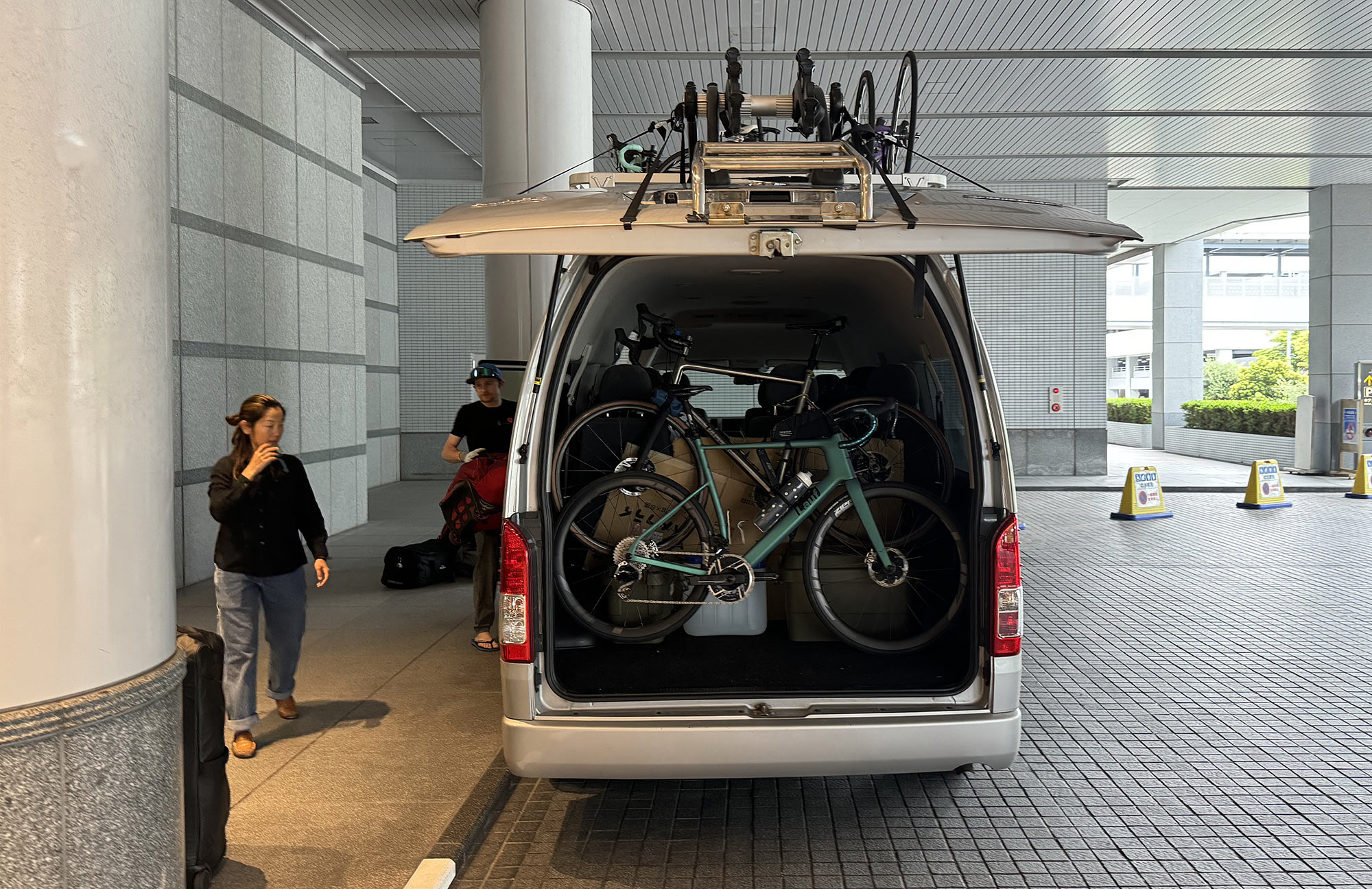
Ride & Seek is a global cycling tour operator, with multi-day to multi-week tours all over the world. Most have a slight theme based on the location, with the goal being to immerse you into the culture more than you could do on your own. They also handle all on-the-ground logistics and, if needed, can advise on coordinating travel, bicycle transportation, etc.
That logistics part is key, especially in Japan. Not only is the language barrier higher, but finding good hotels in the middle of nowhere is hard. Finding restaurants (any restaurant) that will be open when you need them to be is even harder. And even if they are open, as a foreigner, they may turn you away…not because they don’t like foreigners, but because they’d rather say no than risk providing sub-par service. That, or you needed a reservation so that they could have the food and staff on hand. It’s tricky, but Ride & Seek handles all that and much more for you.
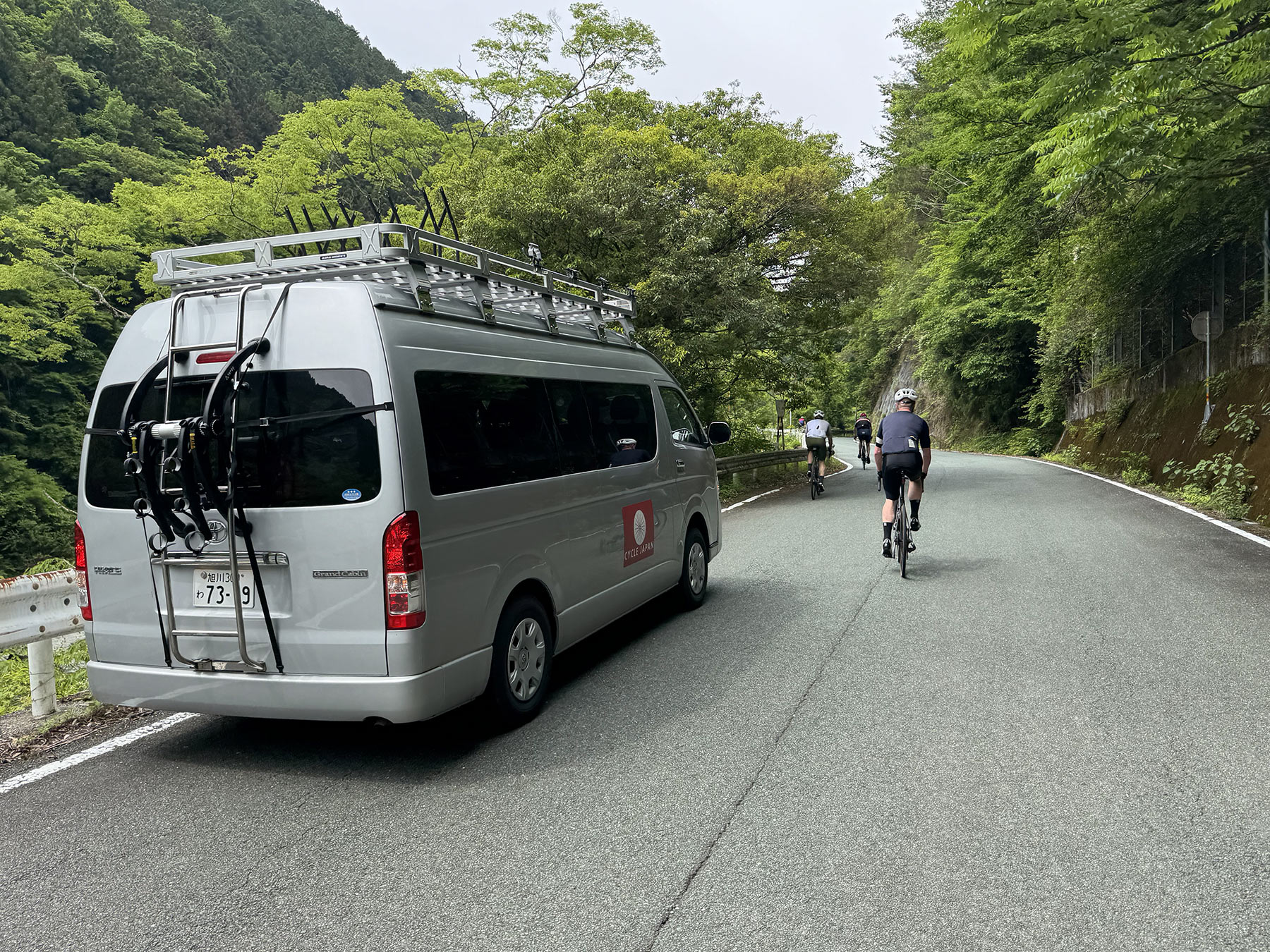
They have a primary team for each location, then contract with vetted locals as needed based on group size. There’s always 1-2 guides riding with the group, and one person (or more, as needed) in support vehicles. For the Japan trip, they covered breakfast and dinner, and we were on our own for lunches most days (see the “food” section further down to see why).
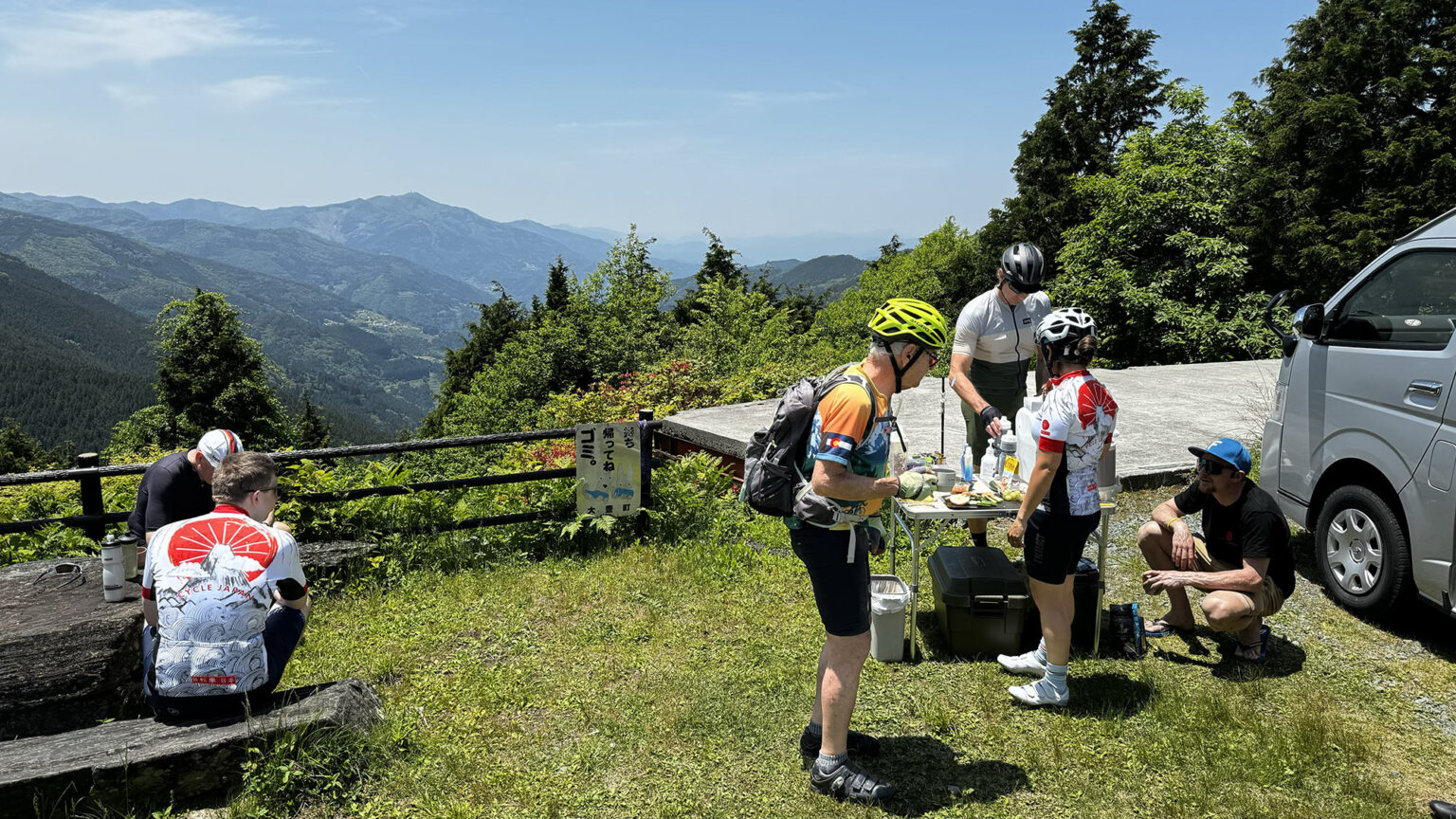
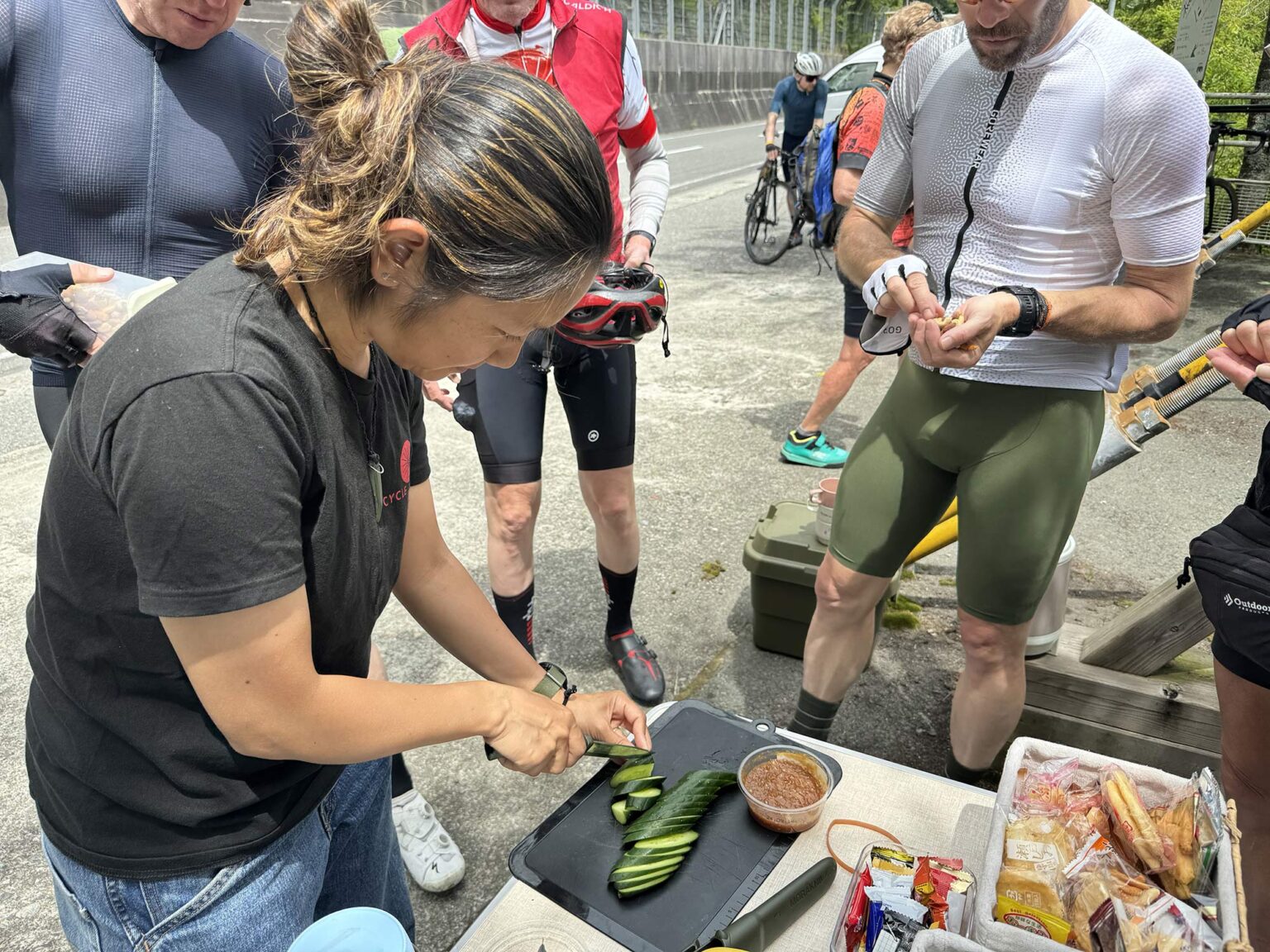
They also set up snack stops several times each day, with a mix of local treats, candies, and snacks you’re unlikely to find at home. Plus sports drink, sodas, energy bars, and more.
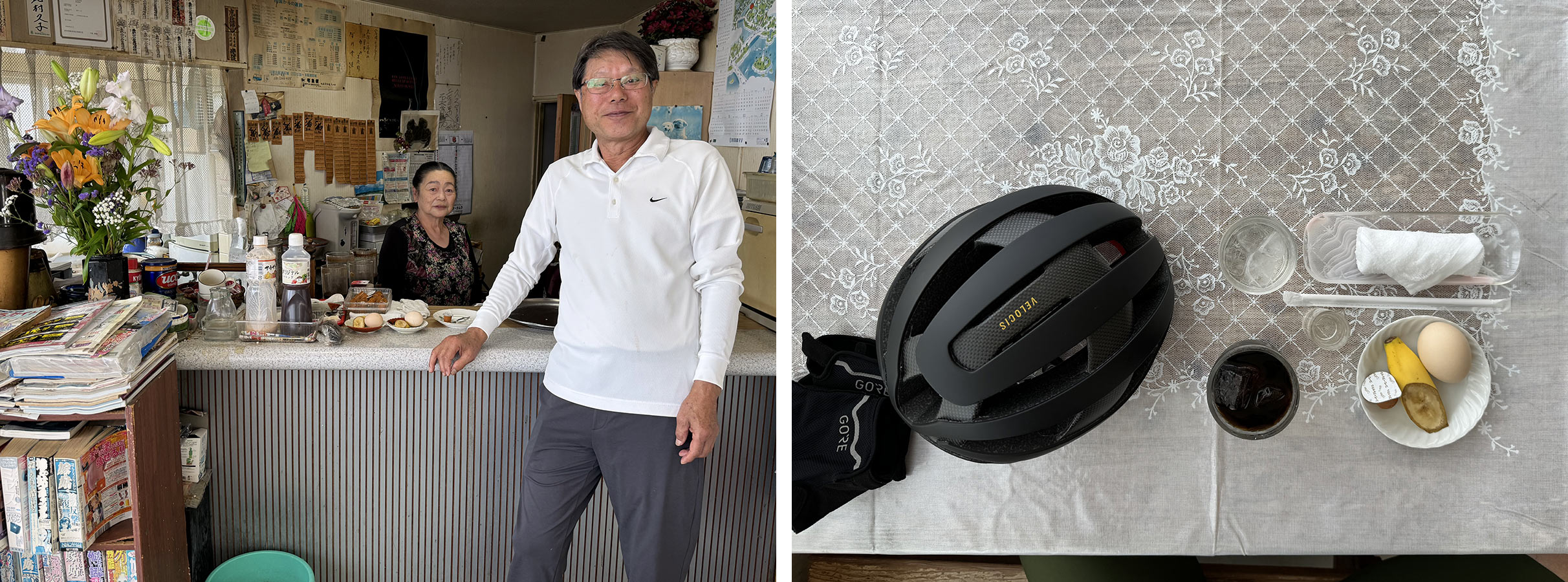
The guides also include snack stops at local spots, like this cafe that serves an egg and banana…and coffee (and that’s it). Other times it’s a small shop that has local baked goods, jams, jellies, ice cream, and other treats. This is the local knowledge that’s hard to get on your own, which is one of the big perks of an organized tour.
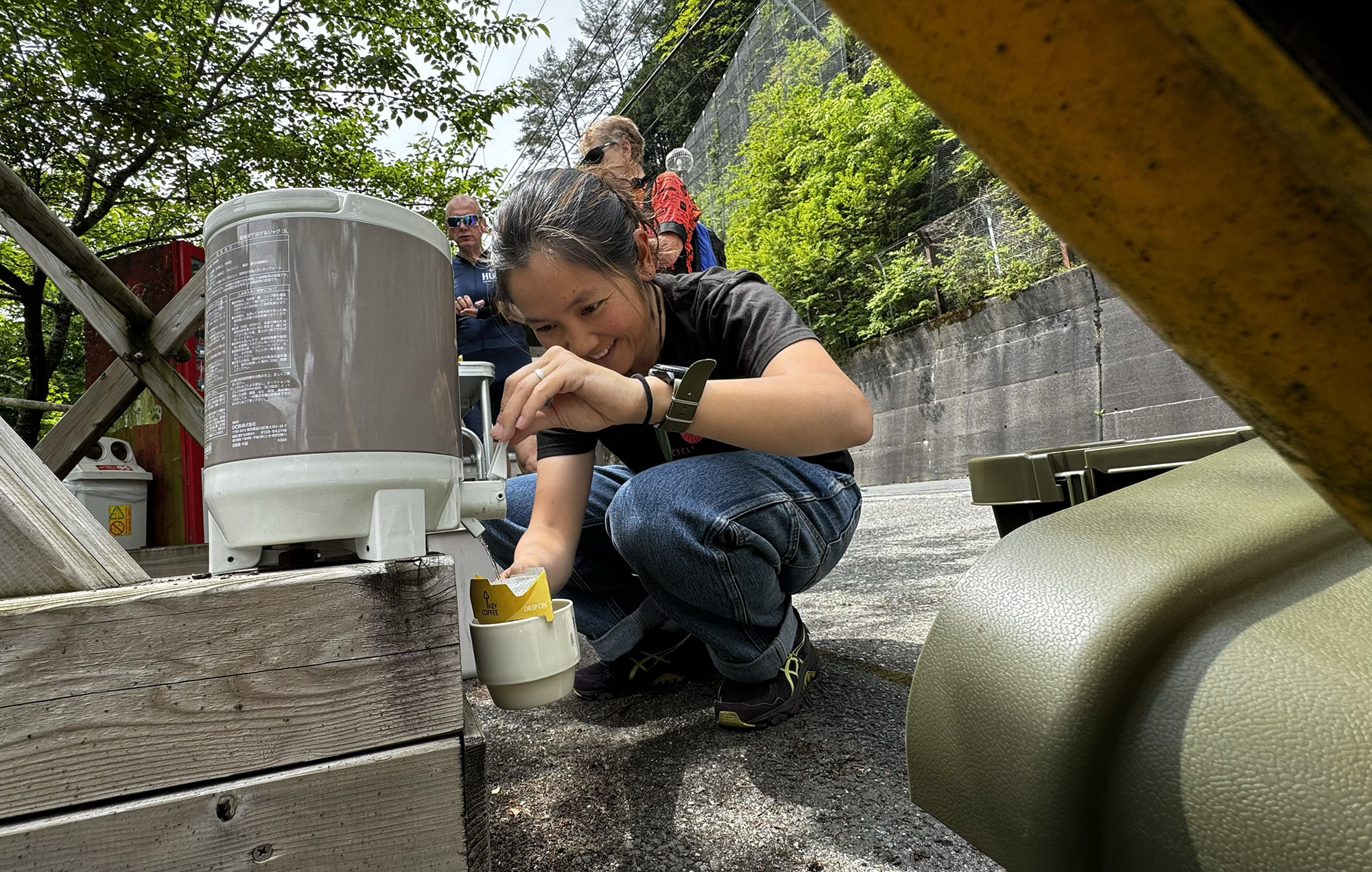
Japan has a lot of vending machines that serve both hot and cold coffee, koucha and ocha (black and green teas), but if none are nearby, our guides made pour-over coffee, too.
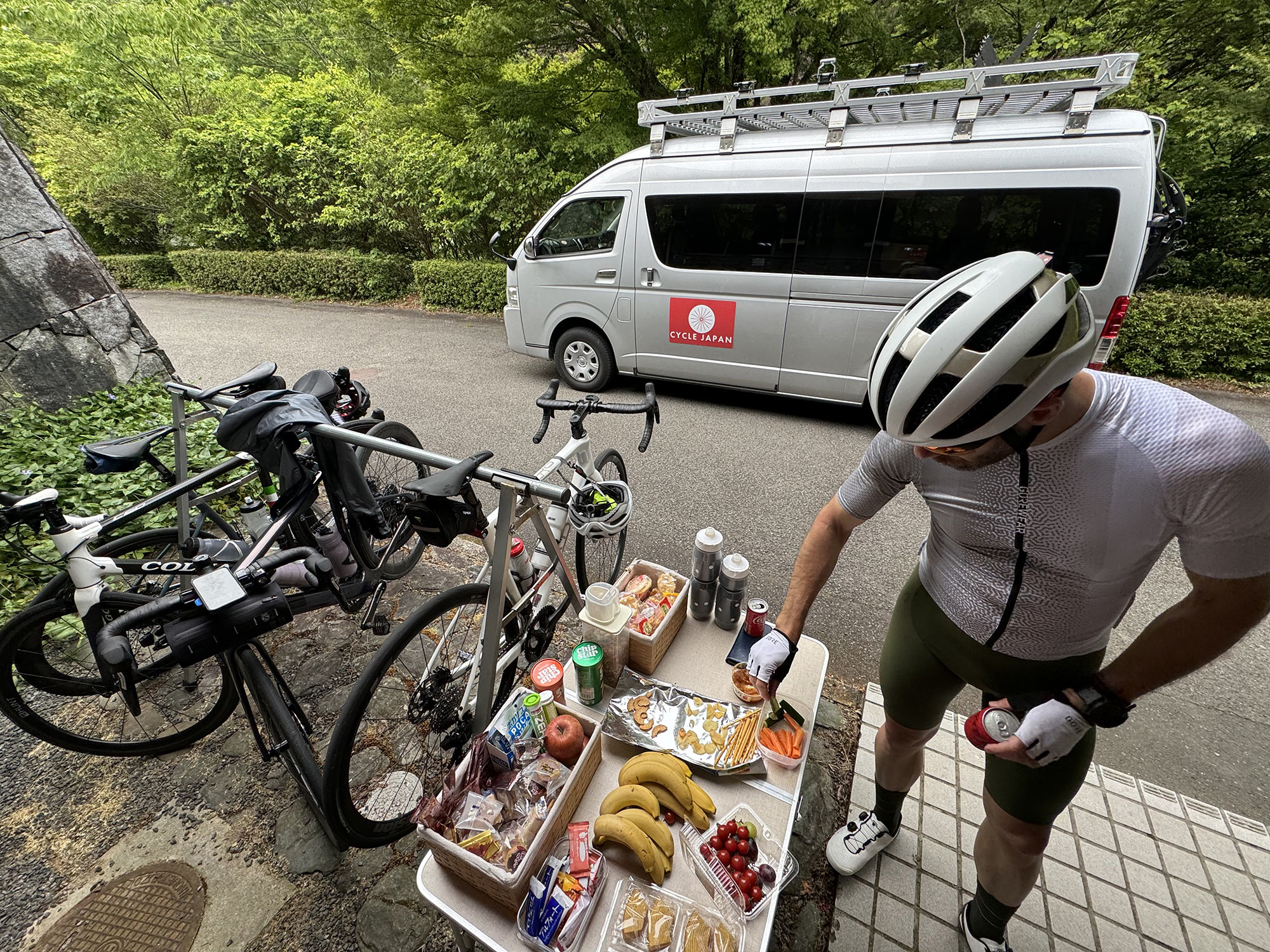
Snacks are set up at the end of each day’s ride, too, so we could refuel before hitting the onsens (hot baths) and relaxing before getting ready for dinner.
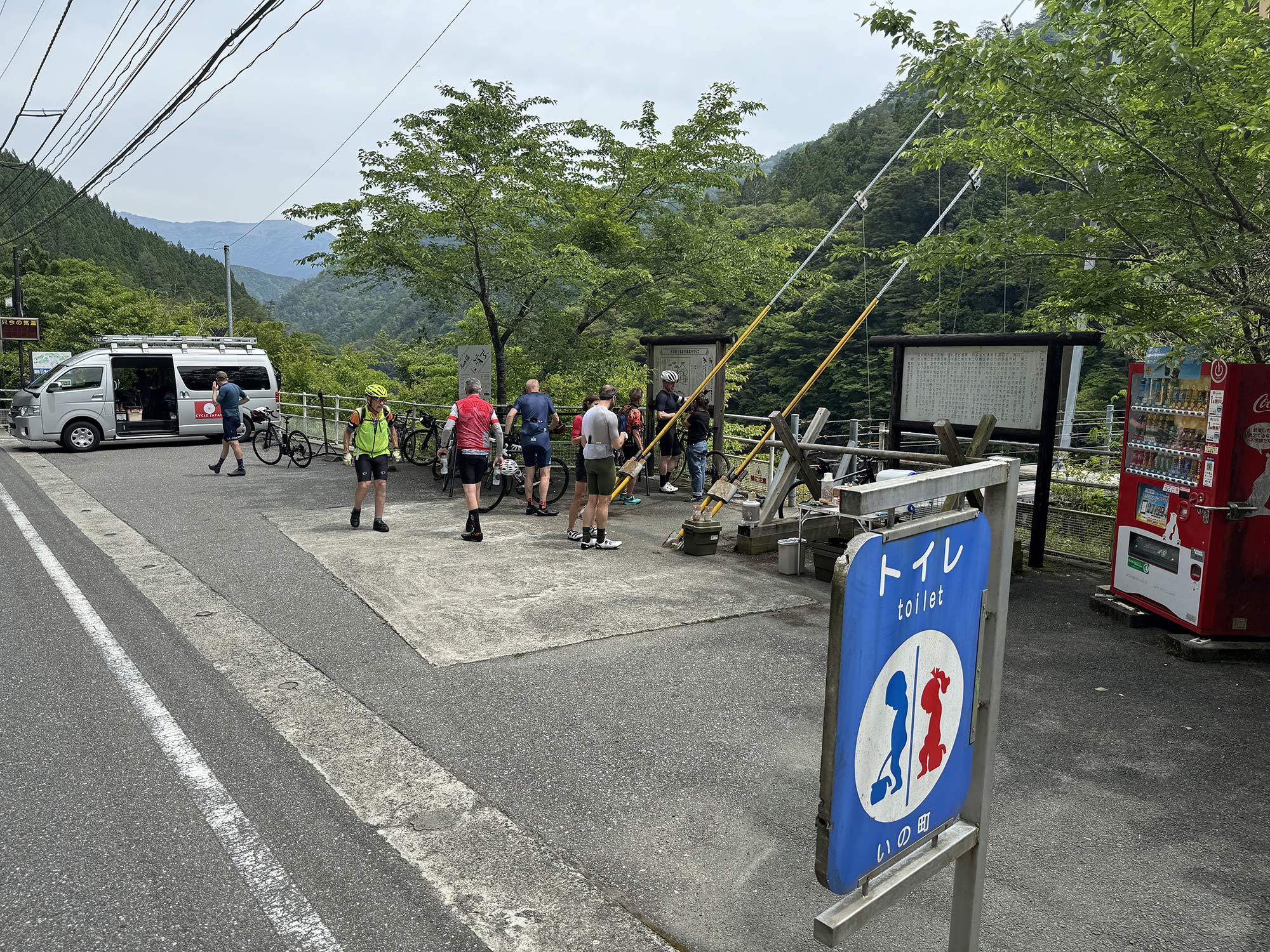
Bathrooms are plentiful, too. Japan has an abundance of public bathrooms, and they’re almost always clean, well-stocked, and many have heated toilet seats with bidets. Oddly, most do not have soap or towels, and hand dryers are sporadic, so it’s a good idea to bring along a small thing of hand sanitizer, or use the one provided by the guides at the snack stops.

Pre-trip support is excellent, with plenty of documentation. Once we arrived, an information packet had printed details for each day plus common Japanese greetings and phrases, which is a handy reference.
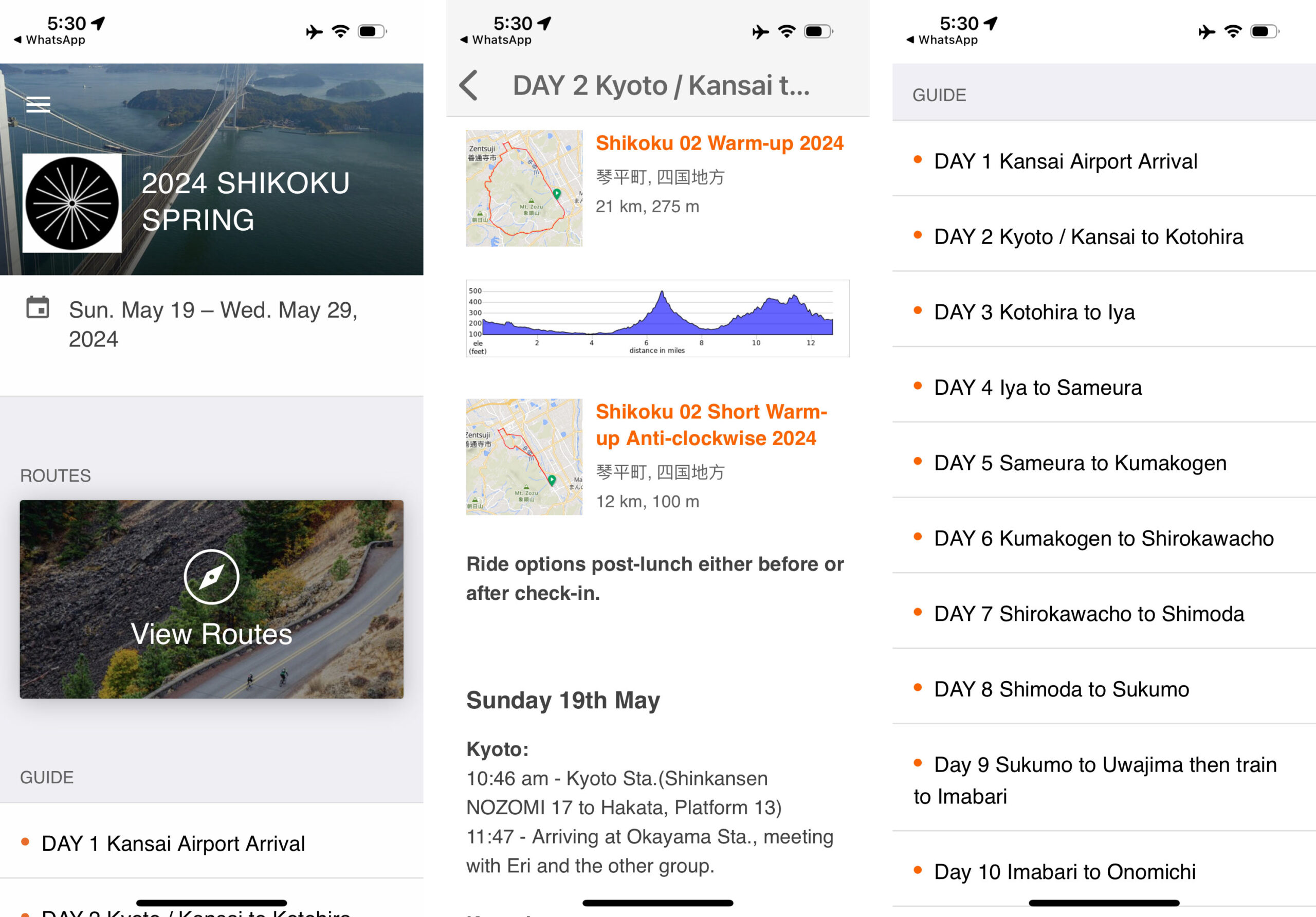
There’s also a pre-trip app that has much of the same information if you prefer screen to paper, or just want to have a quick reference to the day’s route while you’re out riding.
The guides also provide daily route files through Ride With GPS, and can help you get them onto your cycling computers, too. You’ll need to create a free RWGPS account in advance, and it’s helpful if you know how to get a route onto your device. Most days offer short and long routes, so you can get more riding and climbing if you want, but typically even the short routes will hit all of the scenic highlights.
Supported, not rushed
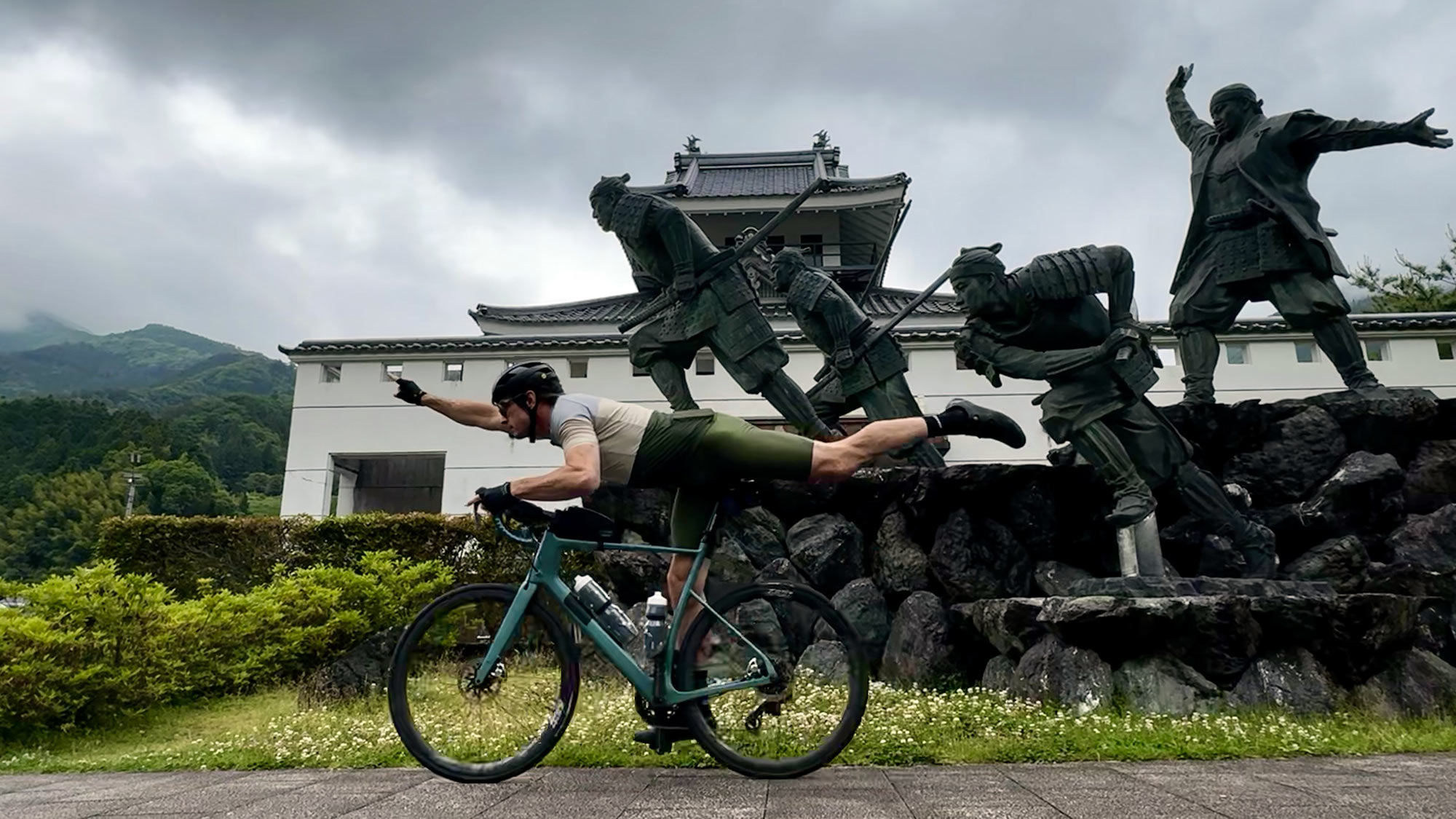
One of the things I liked best about Ride & Seek is that there’s a very loose agenda. You have a breakfast time and a dinner time, and then a whole lot of hours in between.
We were able to ride at our own pace, stop and take as many photos (silly or otherwise) as we wanted, explore the temples and villages, and generally create the experience we wanted.
For us, that’s perfect. Even if we weren’t documenting the experience for this story, we like stopping and exploring, as you’ll see in the photos below (plus more on our personal Instas – @tylerbenedict and @collective.wild).
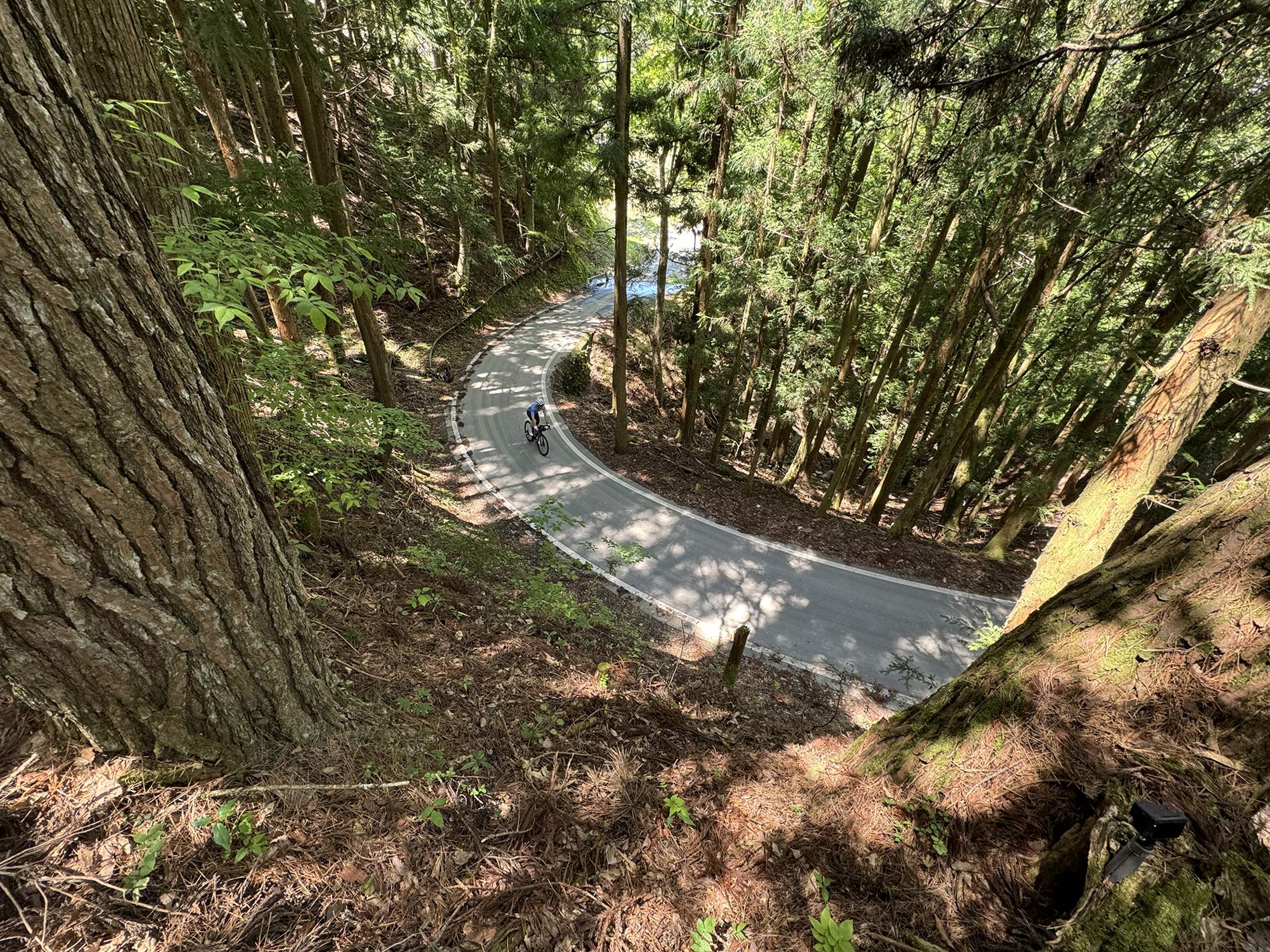
It’s also perfect because the hammerheads can hammer, and the slower folks can mosey. It means you can bring along friends or family of varying levels and everyone can enjoy the trip. There’s no pressure to keep up, and no expectation to wait up.
That said, everyone should be in good shape and able to comfortably handle 40 to 70 miles/day for 8+ consecutive days, and fix a flat and other little things that may go wrong. As long as you make it to dinner, you can be as autonomous as you like.
Cycling through Shikoku
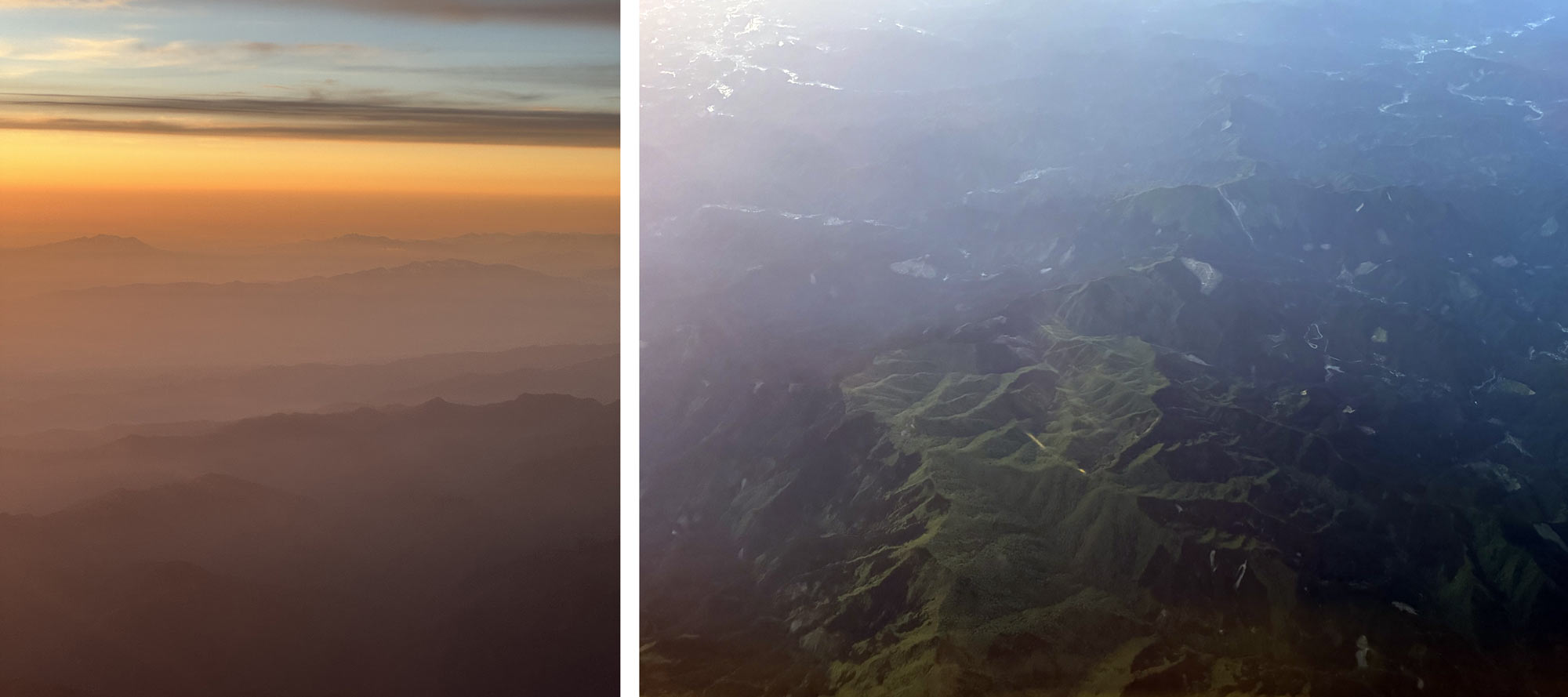
I’ve mountain biked near Nagano, just east of Ride & Seek’s Honshu Stage of the Samurai Cycle Tour, and it’s rad. For this Shikoku stage, the terrain was completely new to me but, despite being a bit more coastal, it was just as mountainous.
Our eight days of riding had a claimed 24,800 feet of climbing (7,560m) with an average of just 53 miles per day. That’s a hair over 3k feet of climbing per day, though some days definitely had more than others.
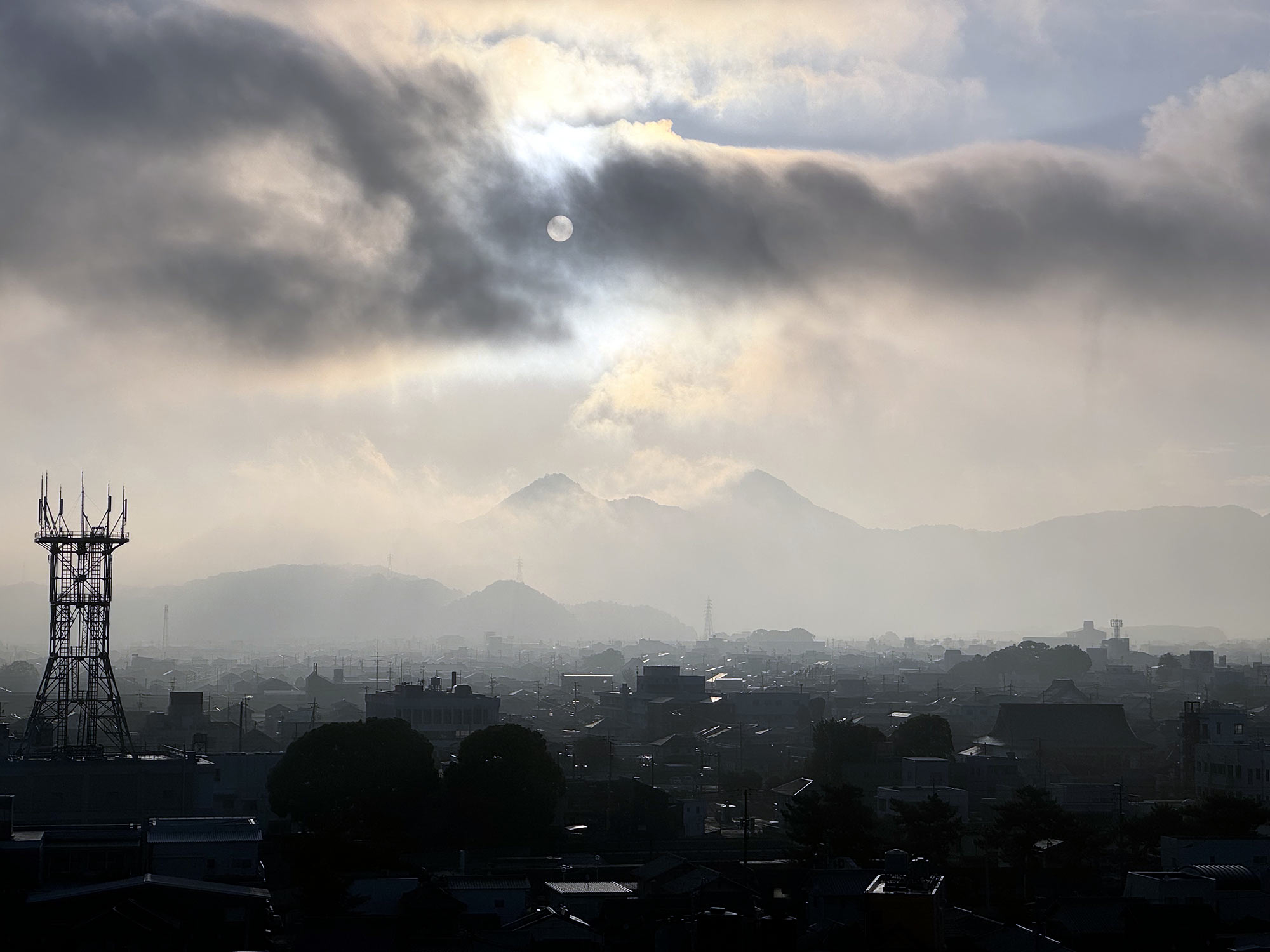
Japan’s population is clustered in the big cities for a reason – it’s impractical to build anywhere else. Their major cities are generally surrounded by either the sea or mountains. Those mountains are so steep, and they get so much rain, that it simply isn’t feasible to build there. Once you head out and up, traffic and people quickly disappear.
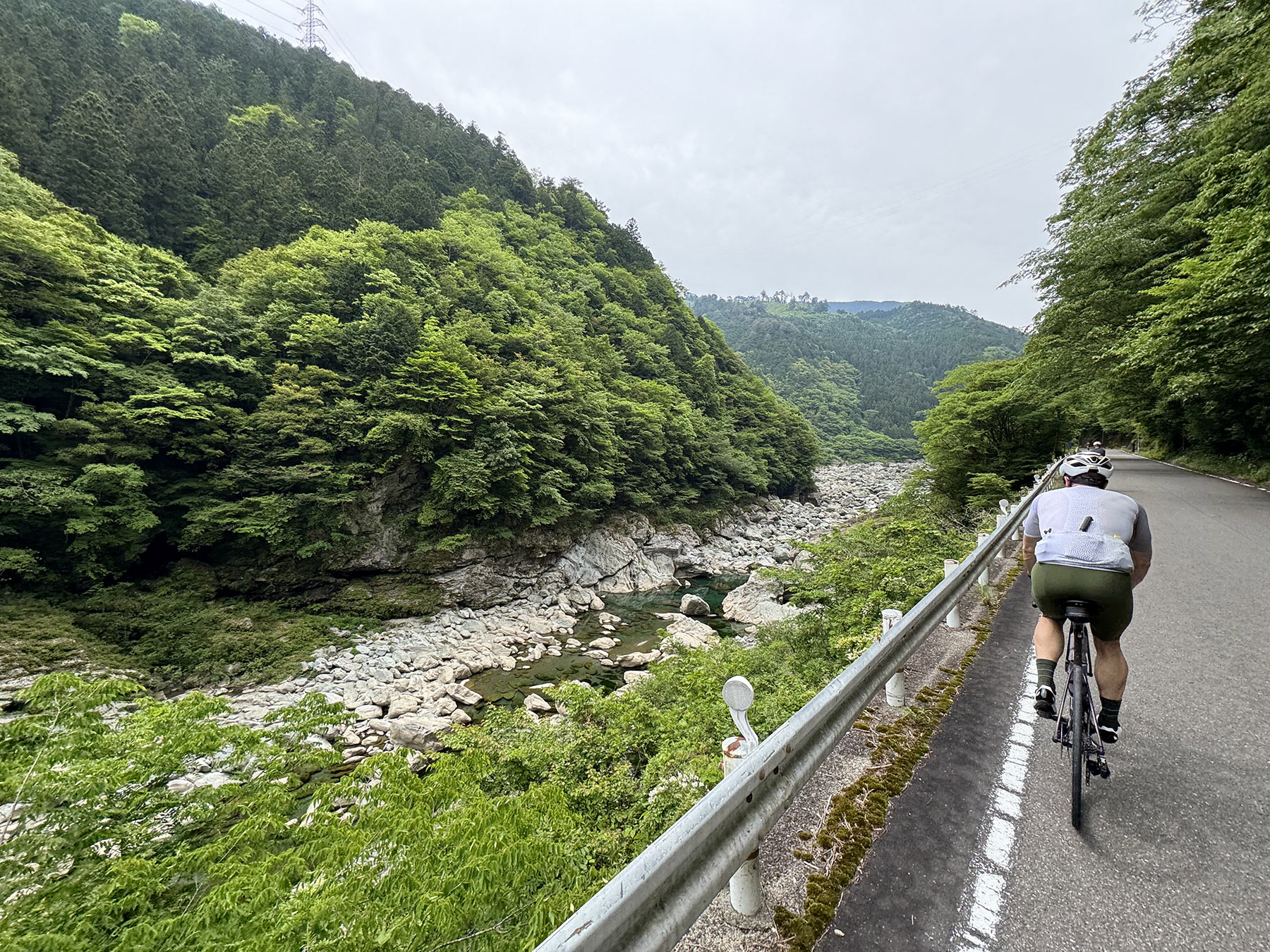
Shikoku is even more remote. There are no major cities on it, and only a few bridges (and even fewer trains) connecting it. Which makes it a great place to ride if you want to explore a more ancient side of Japan.
Our route followed parts of the Kobo Daishi pilgrimage trail, which has 88 temples, and climbed over the highest mountain in Western Japan (Mt Ishizuchi, 1,982m / 6,502ft).
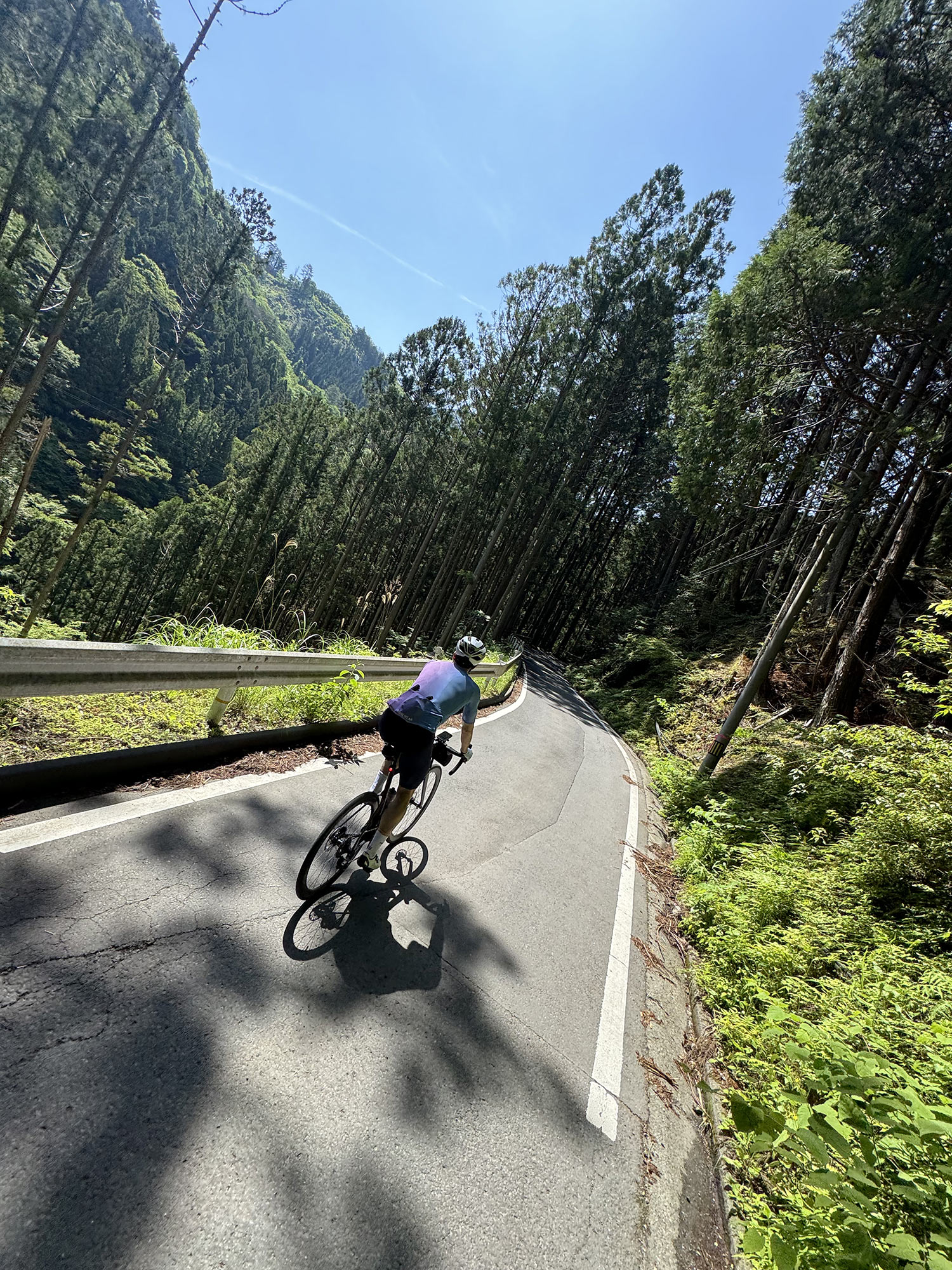
The upside to all that rain is that the roads are almost all perfectly paved. Or, at least, very well maintained. Even in the most remote areas, the roads might be single-lane, but they’re smooth and fast.
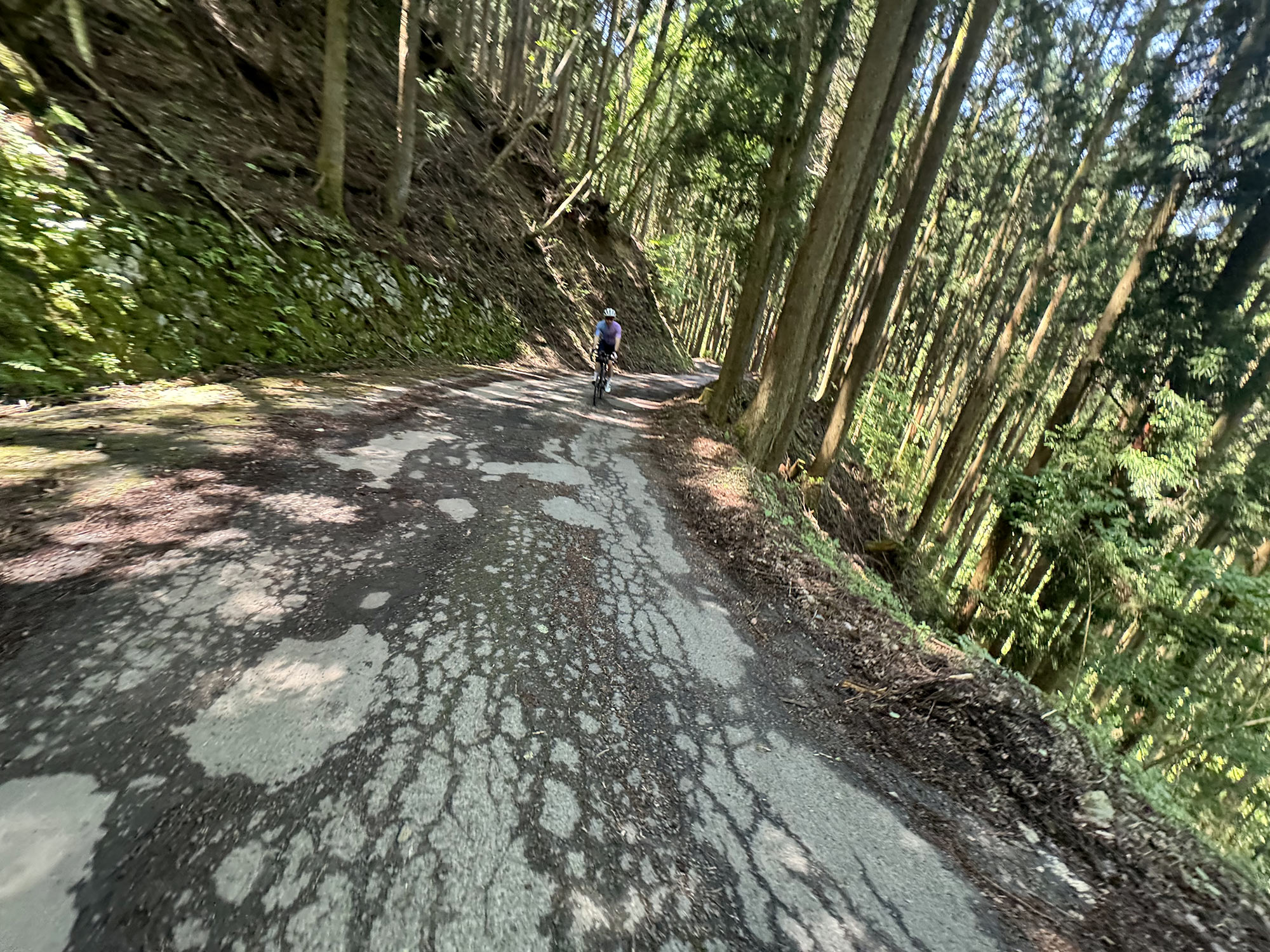
Where much of the world would leave these forest service roads and connectors as dirt or gravel, Japan’s voluminous rain means they’d be grading, repairing, and replacing them constantly. They would wash away too quickly. So they pave them. That means gravel cycling is harder to find in Japan, but it also means endless ribbons of beautiful, traffic-free roads through lush green forests and epic mountains.
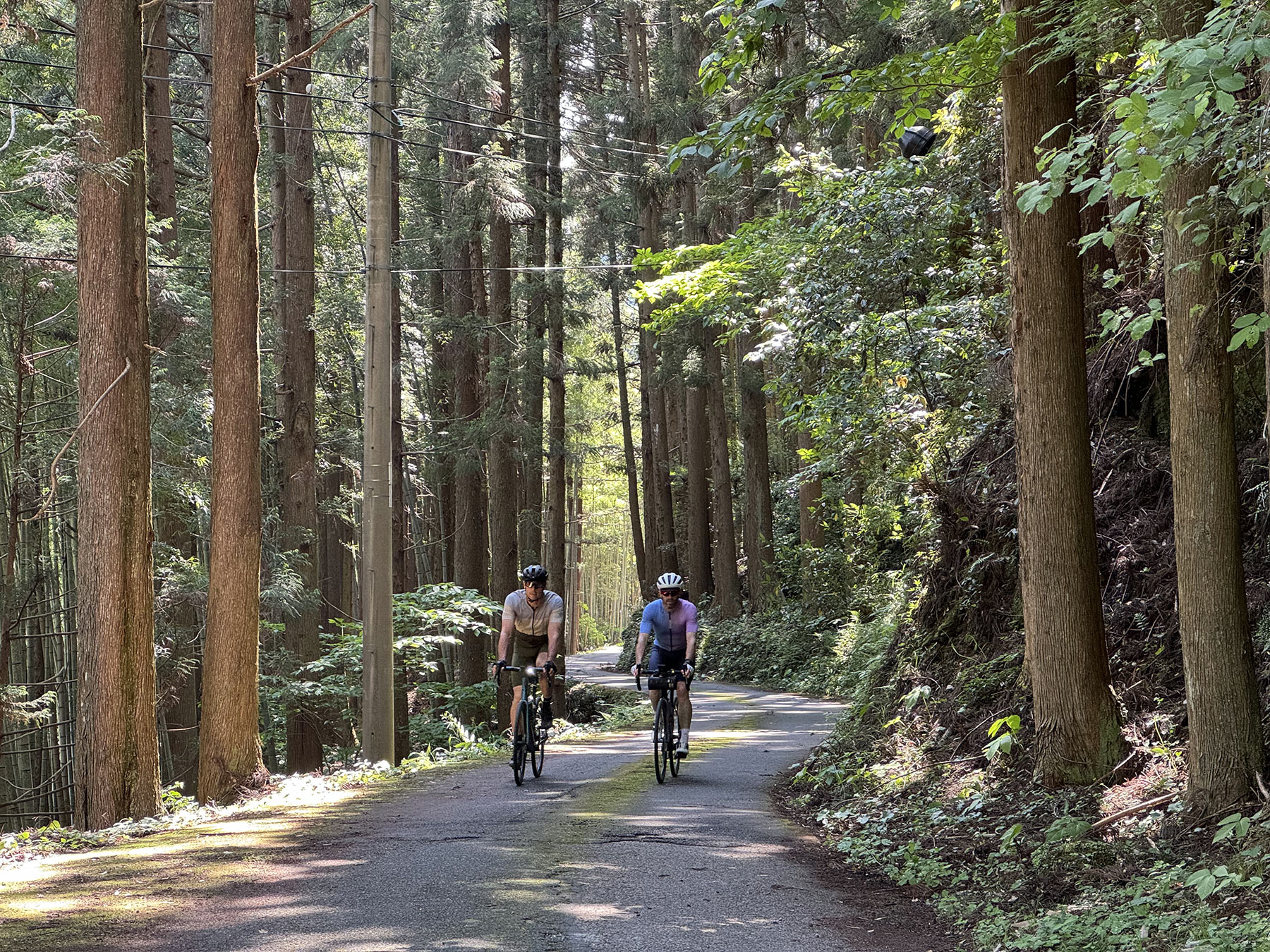
Most of the days are spent crossing the interior of the island through a mix of villages, rice paddies, and mountain roads. Plenty of variety, and plenty of climbing!
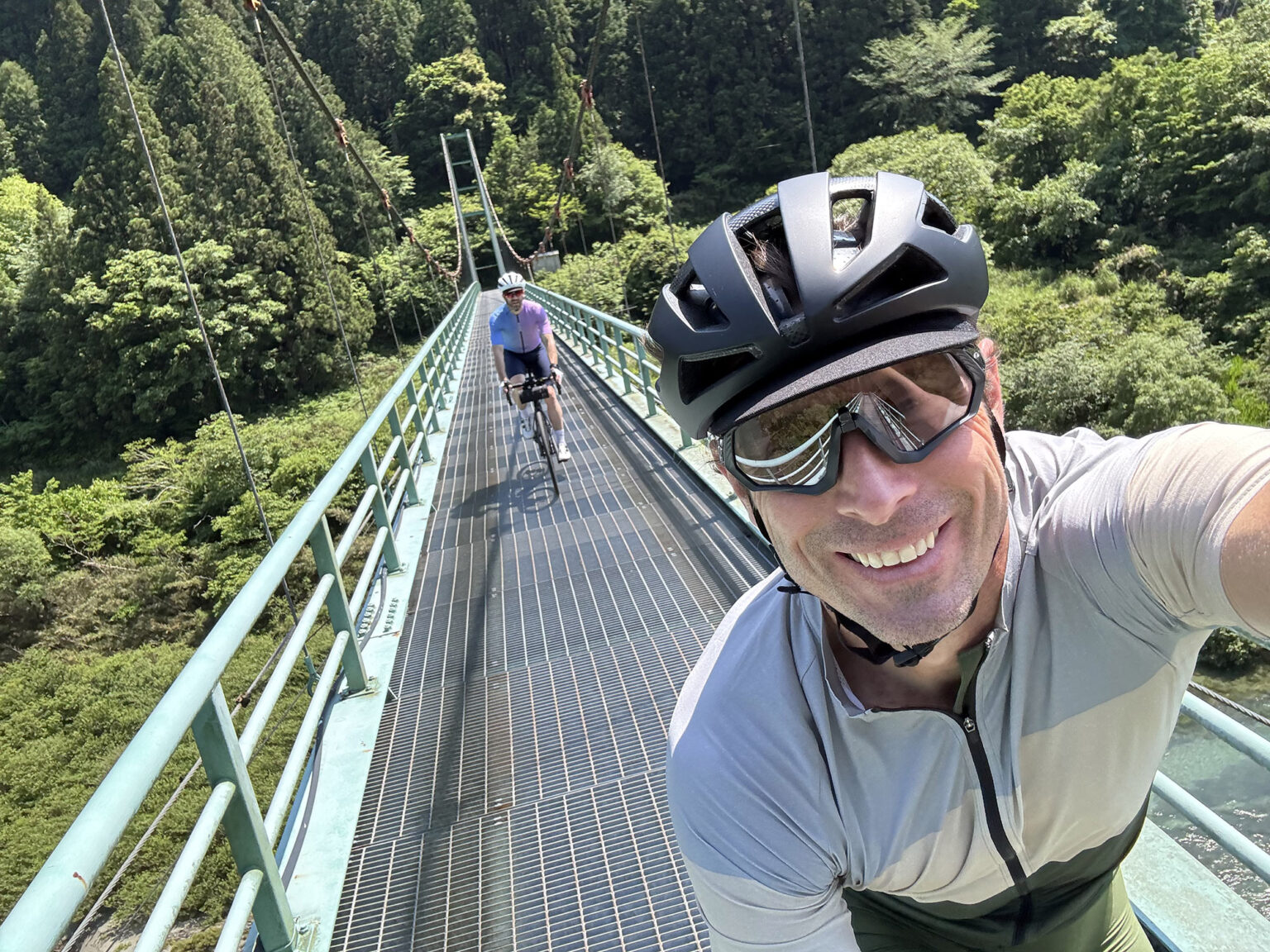


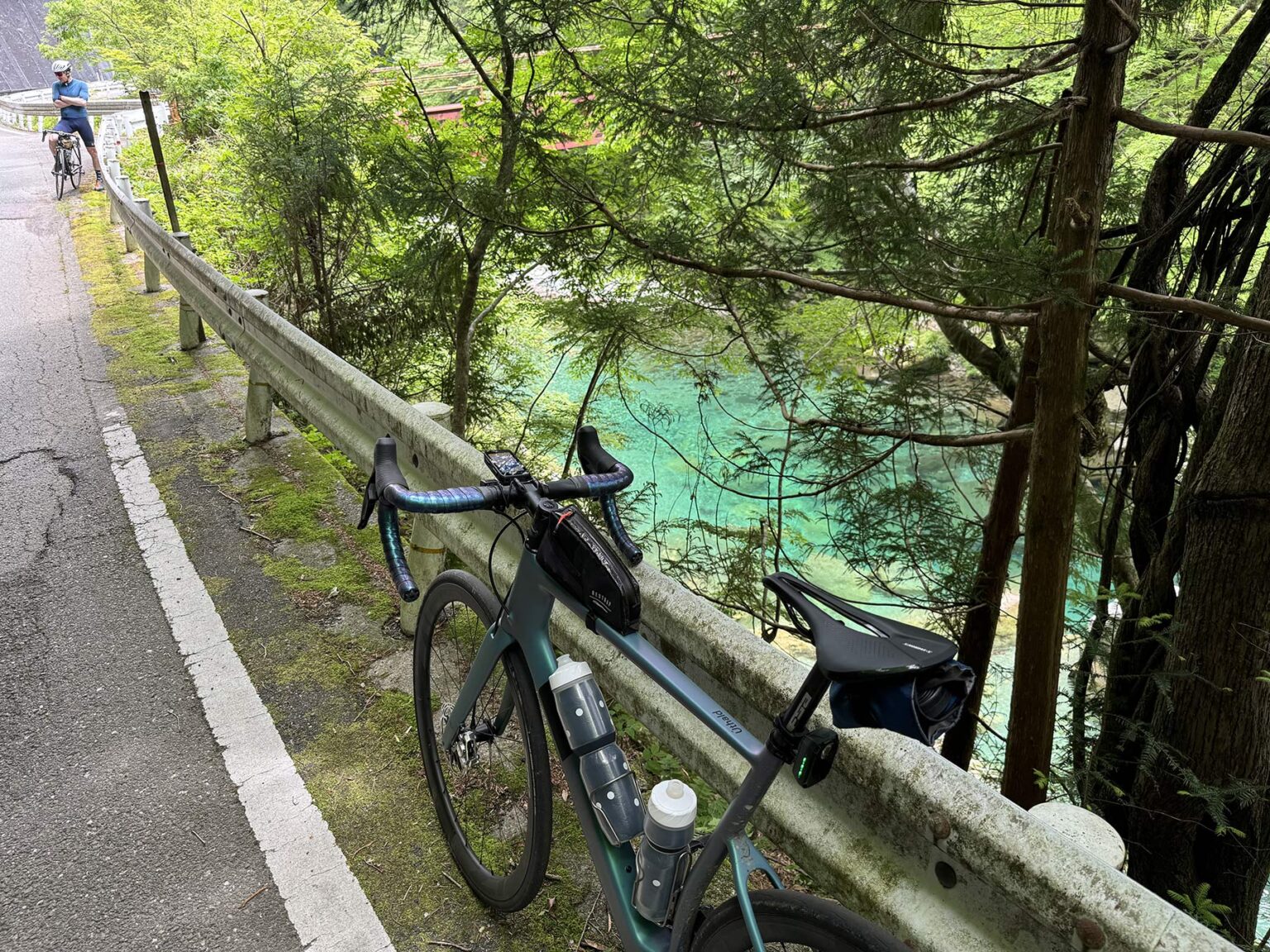
There are plenty of miles along rivers, and lots of small bridges to cross just for fun and views.
Wildlife

Keep an eye out for the Tanuki, aka “Japanese Racoon Dog”. If you’ve ever played Super Mario Brothers and thought you were wearing a racoon suit, think again. It’s also in Animal Crossing.
Tanuki statues are massively popular, found outside almost every door we passed. They supposedly bring good luck, but also represent trust, good fortune, protection, and more, depending on how they’re dressed.

Closer to the coast you’ll find small crabs. I also found a massive toad, fire belly newt, and…

…a giant Japanese Blue Worm, literally one of the coolest creatures I’ve ever seen. There are also monkeys, deer, and more, plus large black birds that look and sound like ravens but are actually a large Jungle Crow.
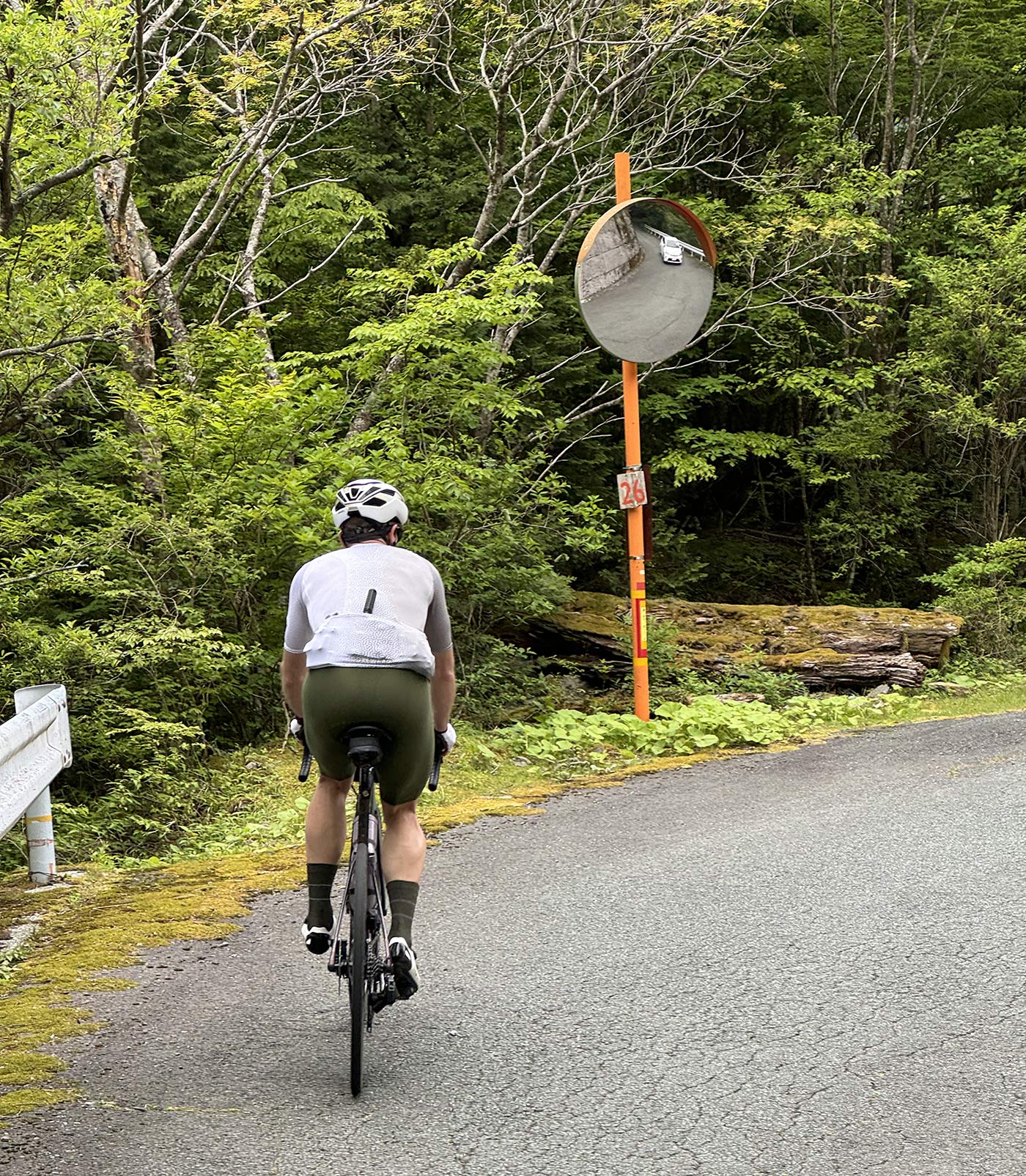
Also worth noting: Almost every corner has a mirror so you can see what’s coming around the bend. It’s very handy, letting you take the corners a little quicker and have more fun without being surprised. They work really well, but obviously, you should still use caution.
Shimanami Kaido Bikeway & the Bridges

The trip finishes along the southern coast, then another day inland, then a quick train transfer to finish things off with the amazing 60km+ long Shimanami Kaido bikeway, a series of suspension bridges and six small islands that link Shikoku with the main island of Honshu.
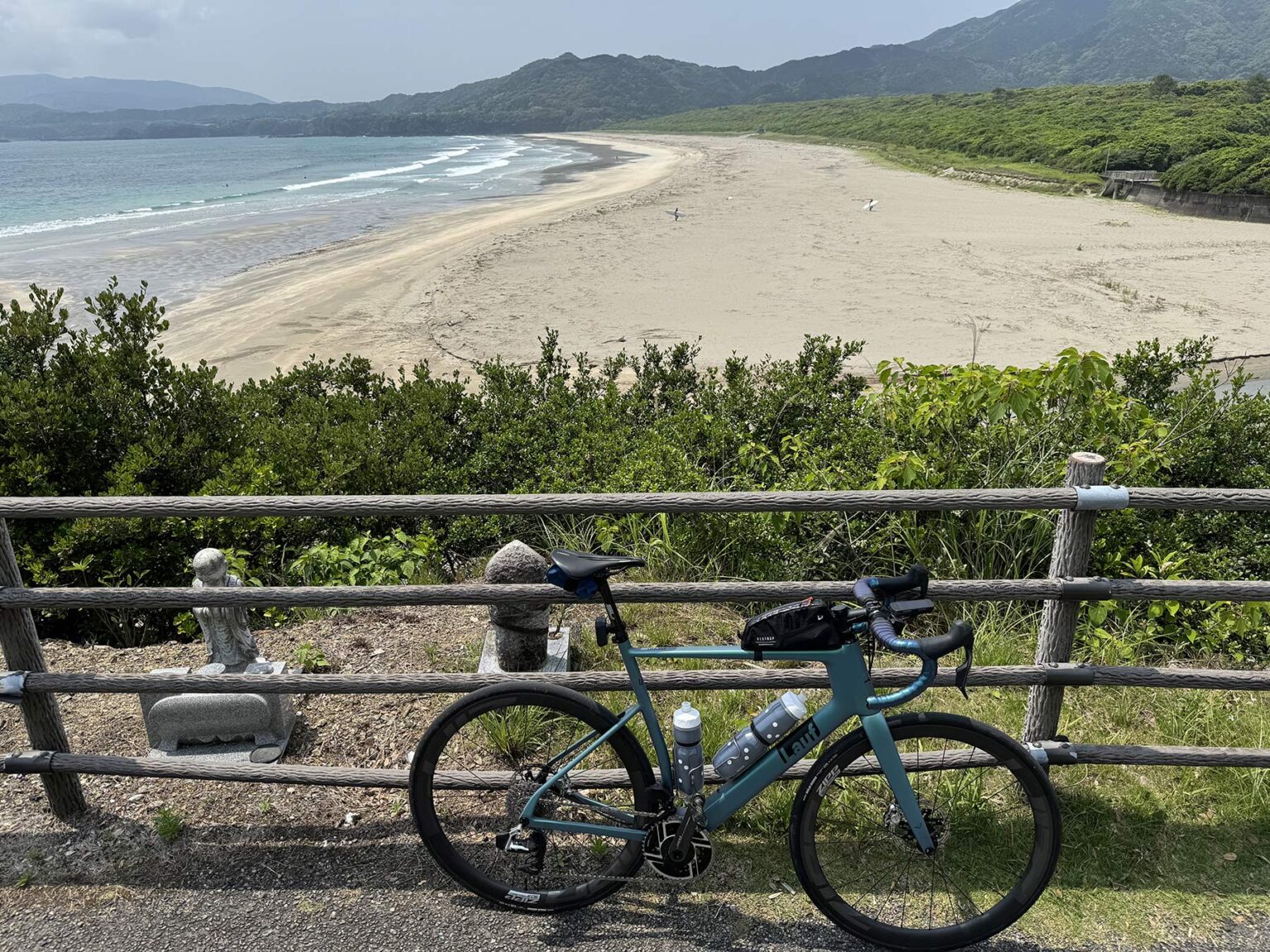

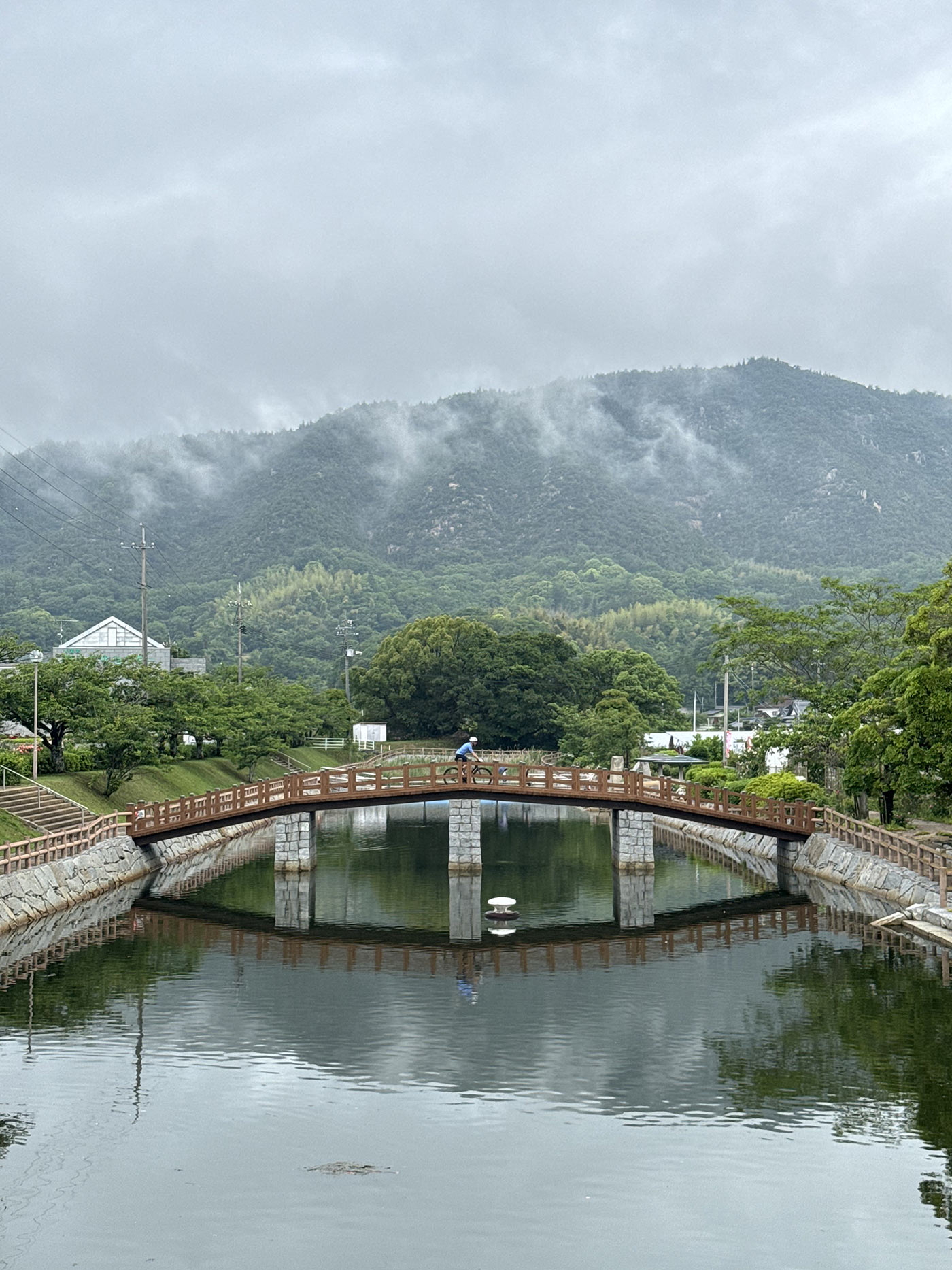
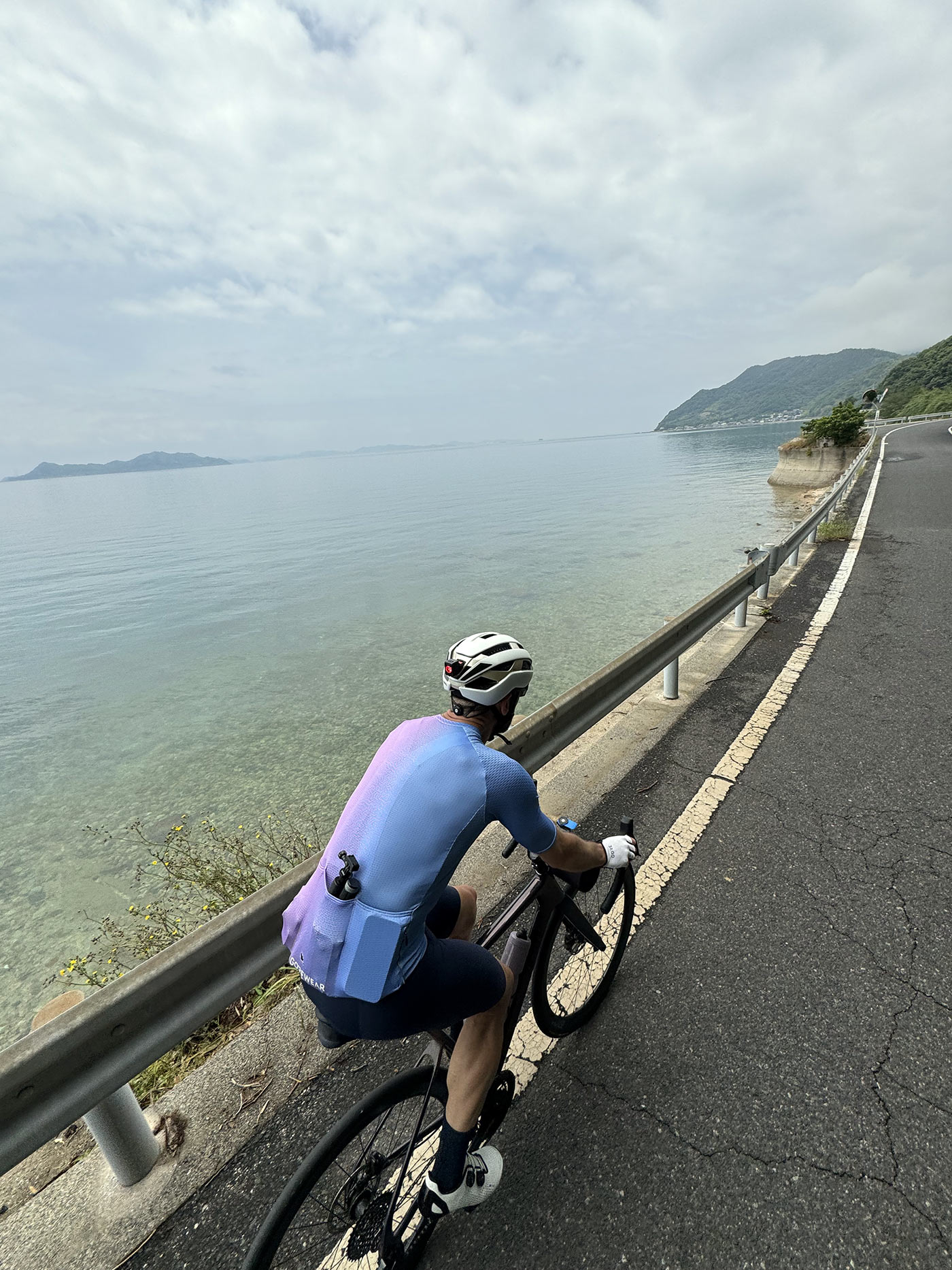
Japan has invested in cycling tourism here in interesting ways. While there are “Blue Line” cycle paths marked along similar coastal roads on the Kii Peninsula (south of Osaka and Nara), those are more heavily trafficked and lined with businesses. I rode some of those sections after this tour and ended up moving back into the mountains to get away from the cars.
On Shikoku, though, it’s so remote and disconnected that there’s very little traffic, even on beautiful coastal roads like these.

The most impressive investment is the bikeway that was built into the suspension bridges connecting Shikoku to Honshu. It was purpose-built with separate cycling lanes and, in some cases, even separate lanes for scooters, too.

The popularity of it is apparent from the number of rental bikes we saw, and groups of casual cyclists. It still wasn’t crowded, but definitely more riders around the bridges than anywhere else we rode.
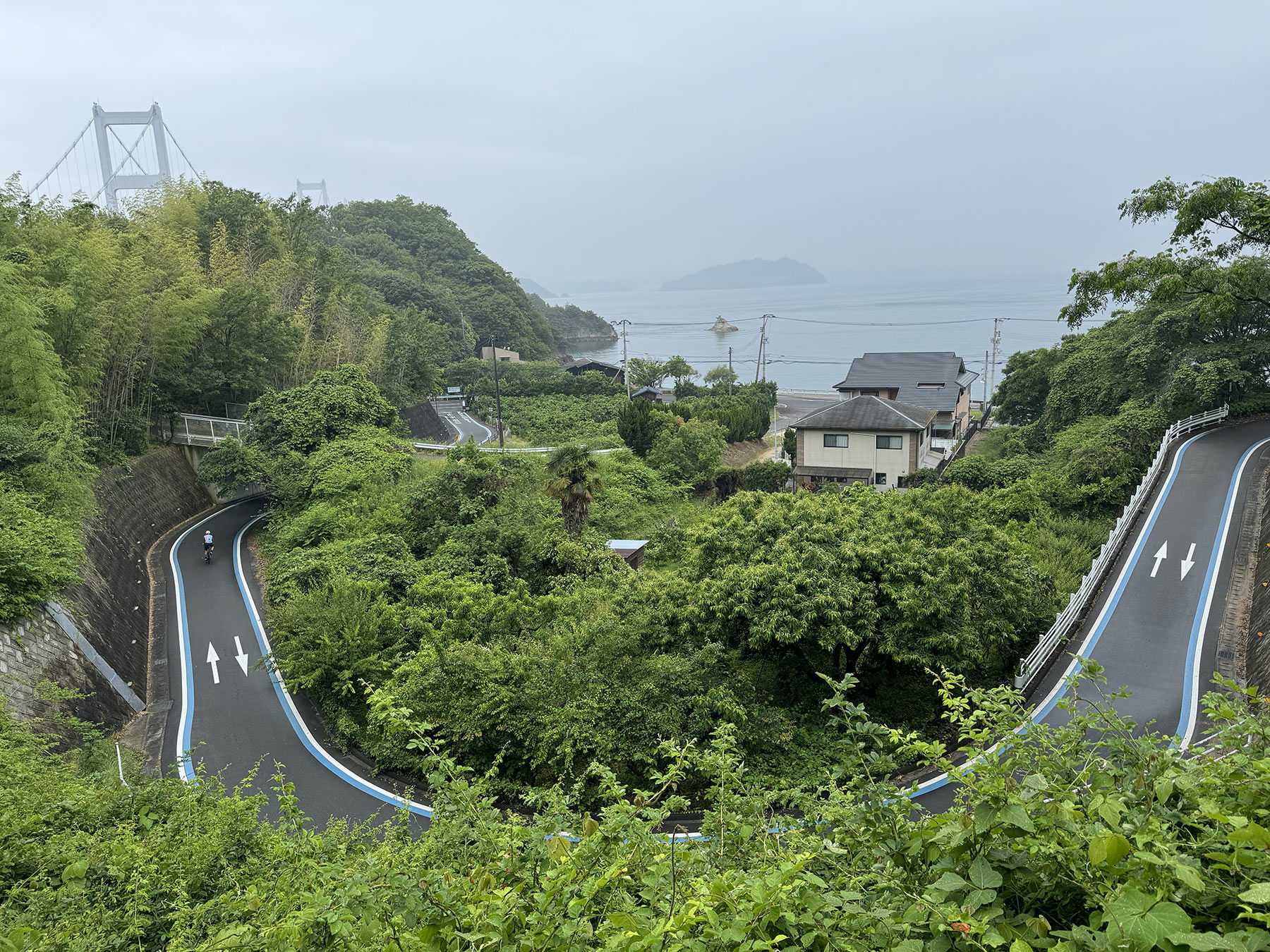
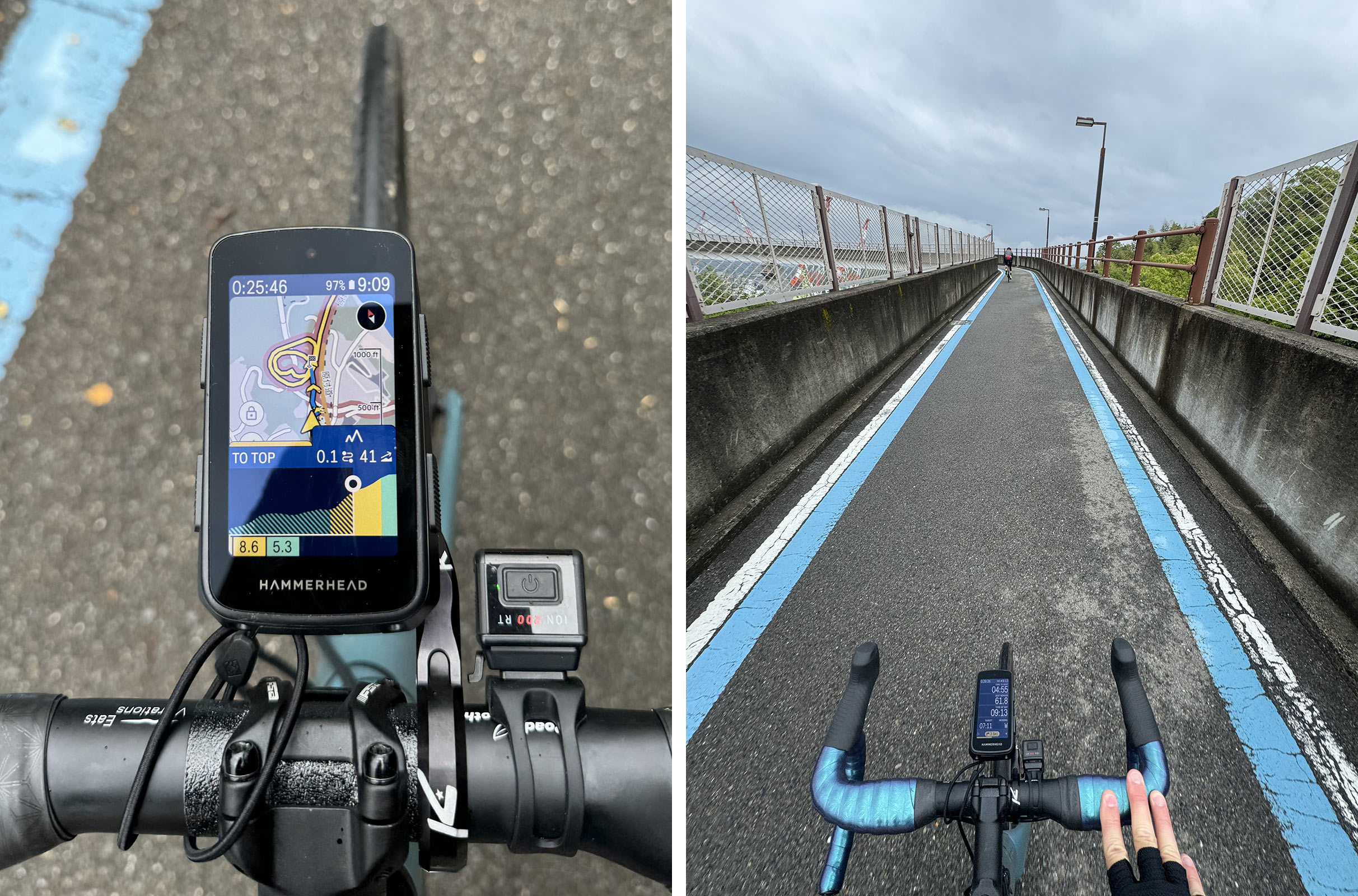
And for good reason – it’s really cool. The ramps leading up to and down from the bridge loop around in circles and figure eights and are quite fun…
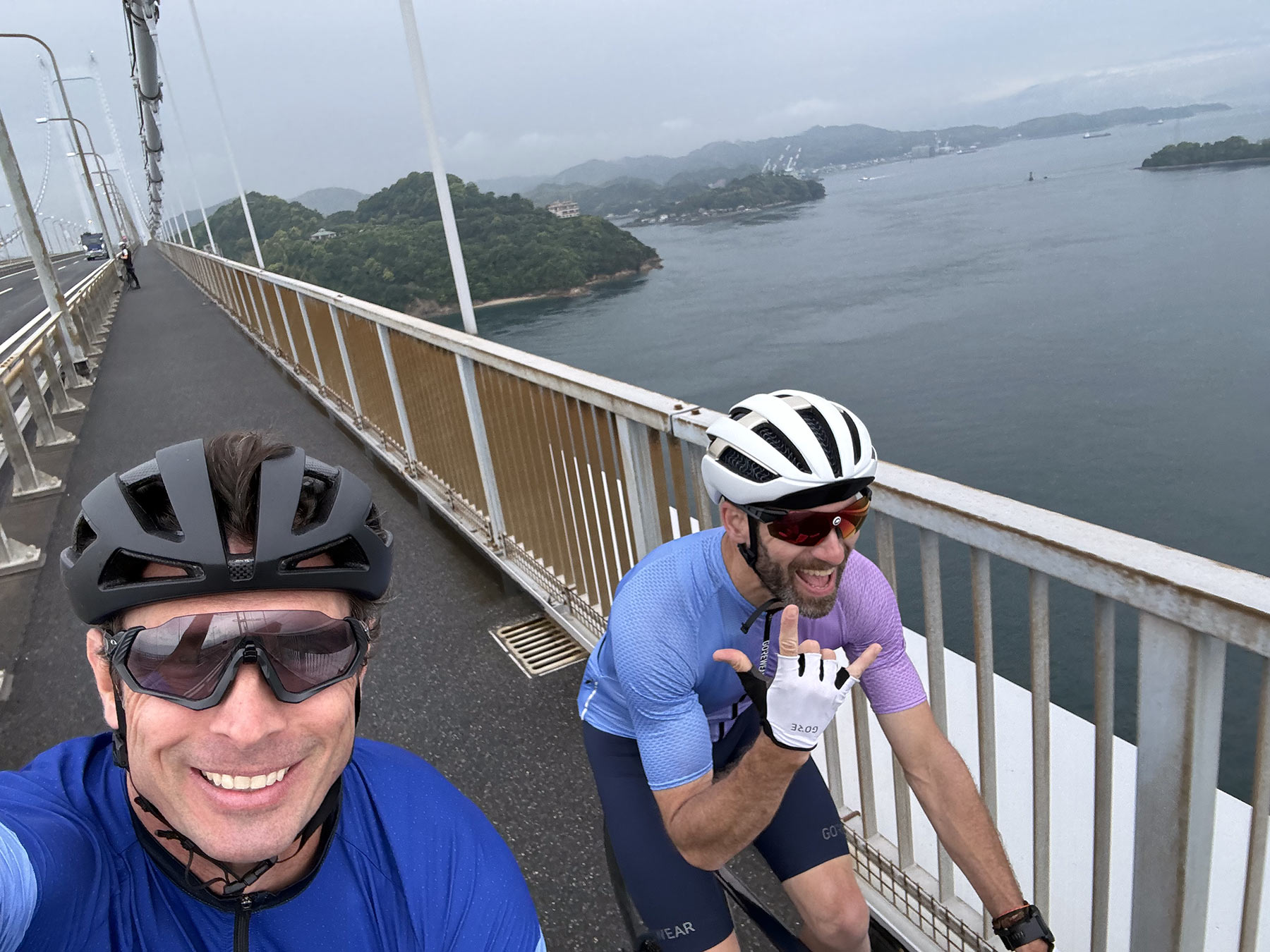
…and the views from up top are stellar:
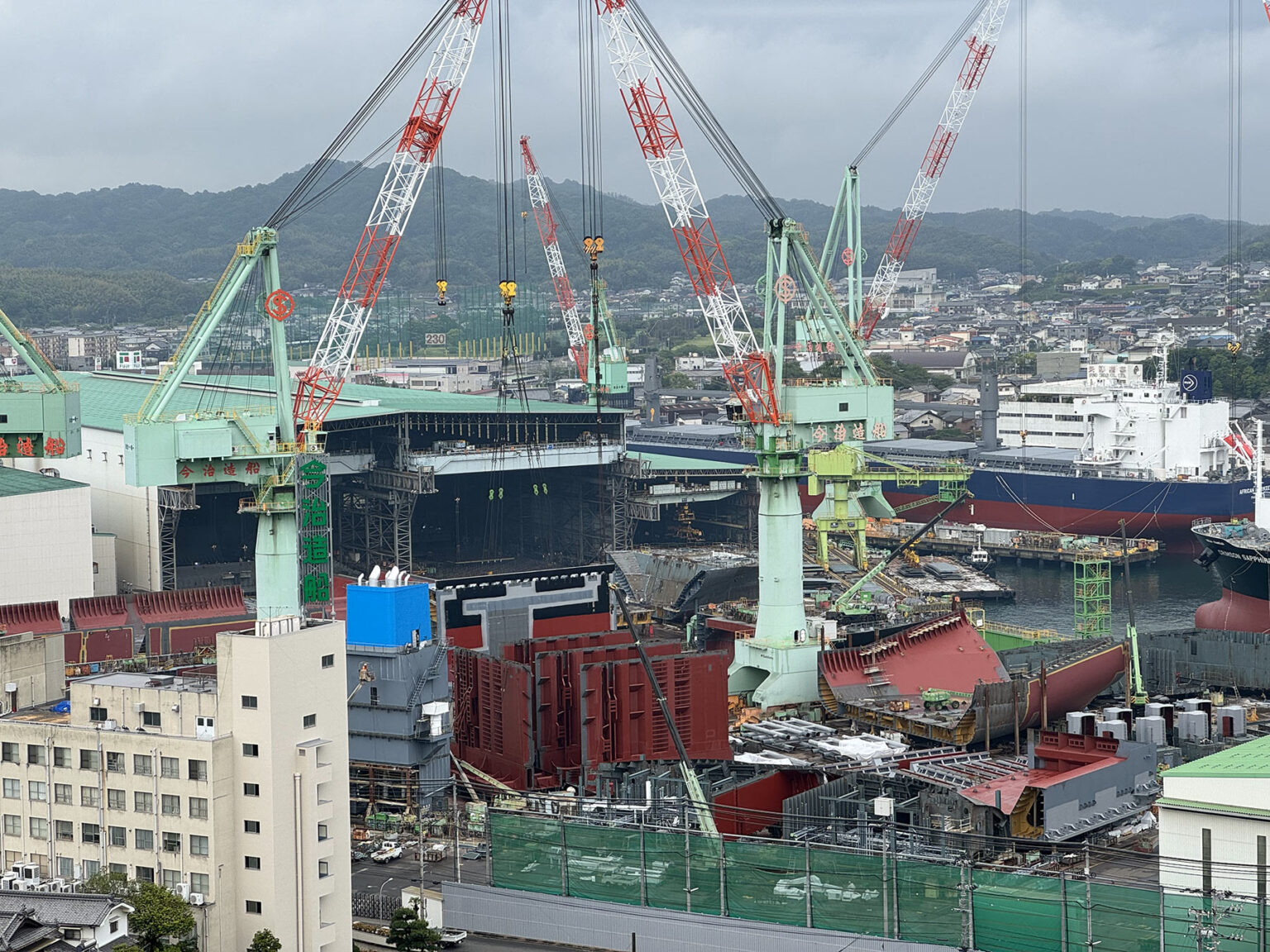


It’s an excellent way to finish, and the last night’s hotel is something special, too. It’s one of the few without an onsen, but it’s fully modern, cycle themed, and the dinner includes 90 minutes of all-you-can drink…if you’re into that kind of thing.
Meals and more

Breakfast and all but one dinner is included in the tour, and we all ate together for both.

The host hotels all served a full Japanese breakfast, which is lots of small plates of things you can mix together in your mouth to create different flavors. Or not. They were mostly good, always interesting, and thanks to the unlimited rice, always enough. Honestly, if you’re not an adventurous eater, breakfasts will be tough unless you seek out your own…which will also be tough due to the remote location of most of our hotels.
(We rode past a lot of 7-Elevens, Lawsons, and Family Marts, which all have plenty of other options…and excellent fried chicken, seriously).
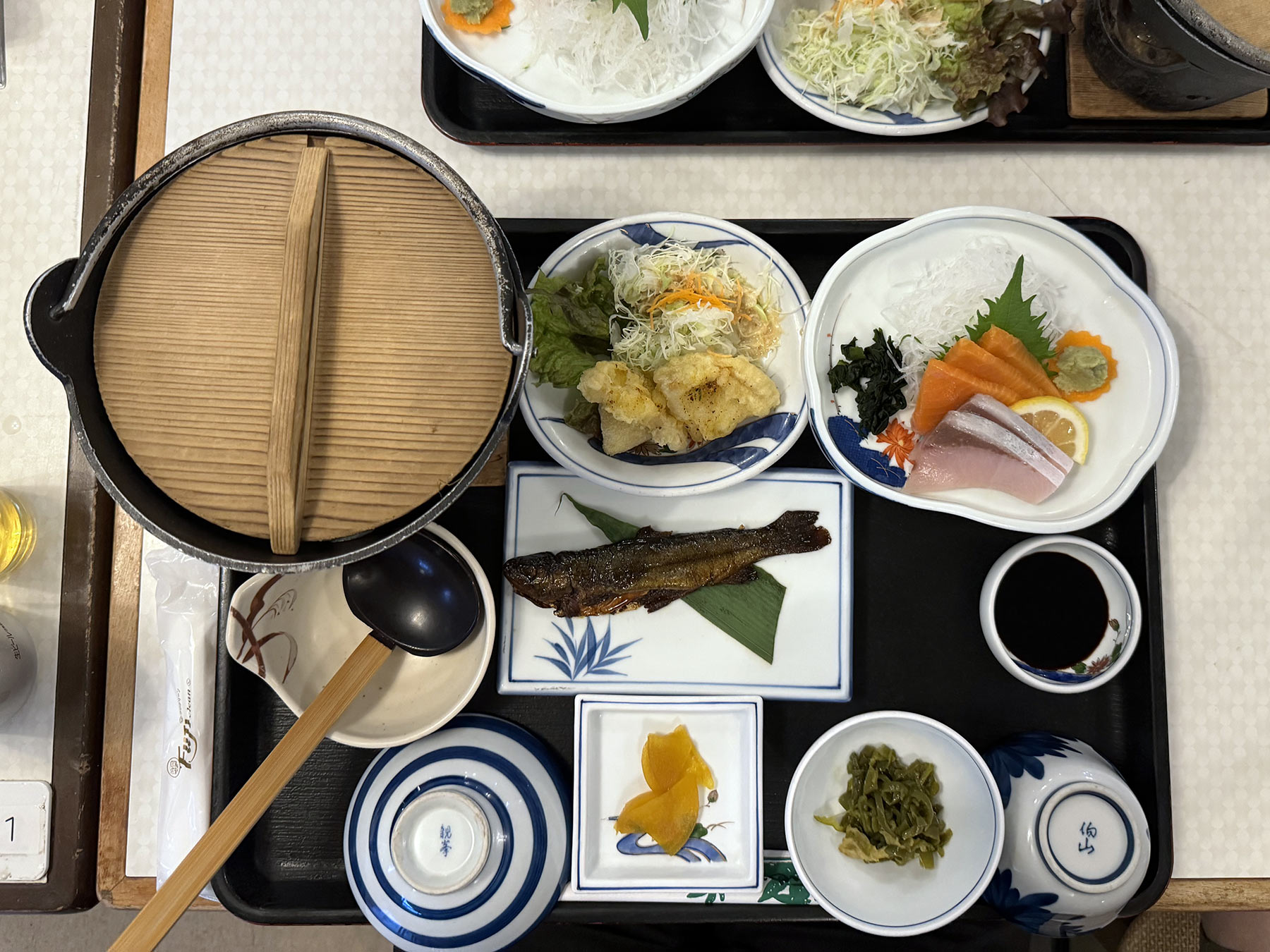
Each restaurant served a similar multi-dish dinner, usually in waves that ended up being a LOT of food. And a lot of seafood, some in forms and flavors you will definitely not recognize. Candied fish, anyone?
As much as all of us, and there was a mix of Americans, Europeans, and Brits on the tour, were craving a burger by night five, the food is part of the experience and very good. Typically, Japanese do not eat like this – it’s a lot of work. But it’s what you’ll find when staying at traditional-style hotels and ryokans. Here’s a gallery of more of our meals (click any photo to enlarge):
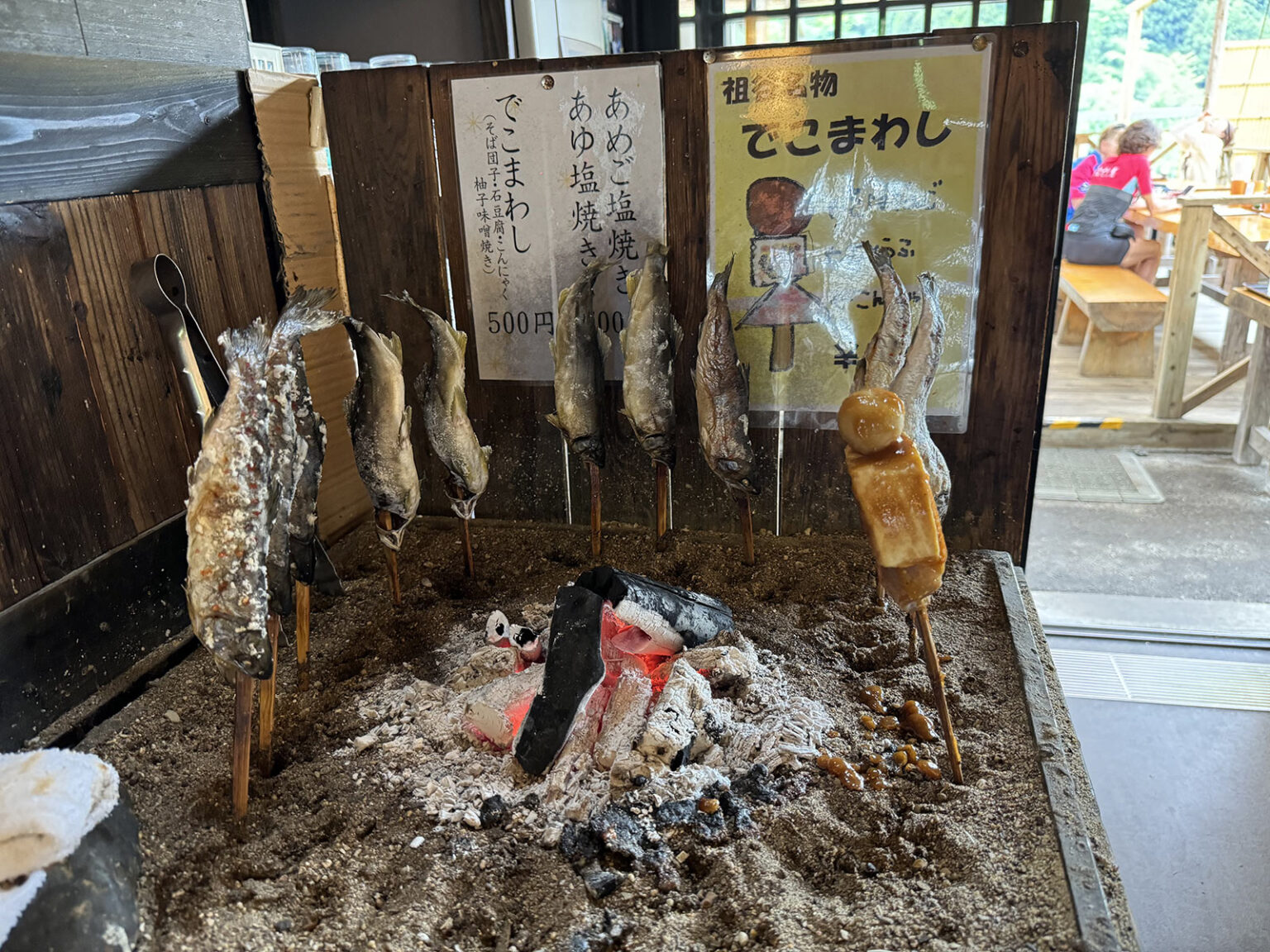
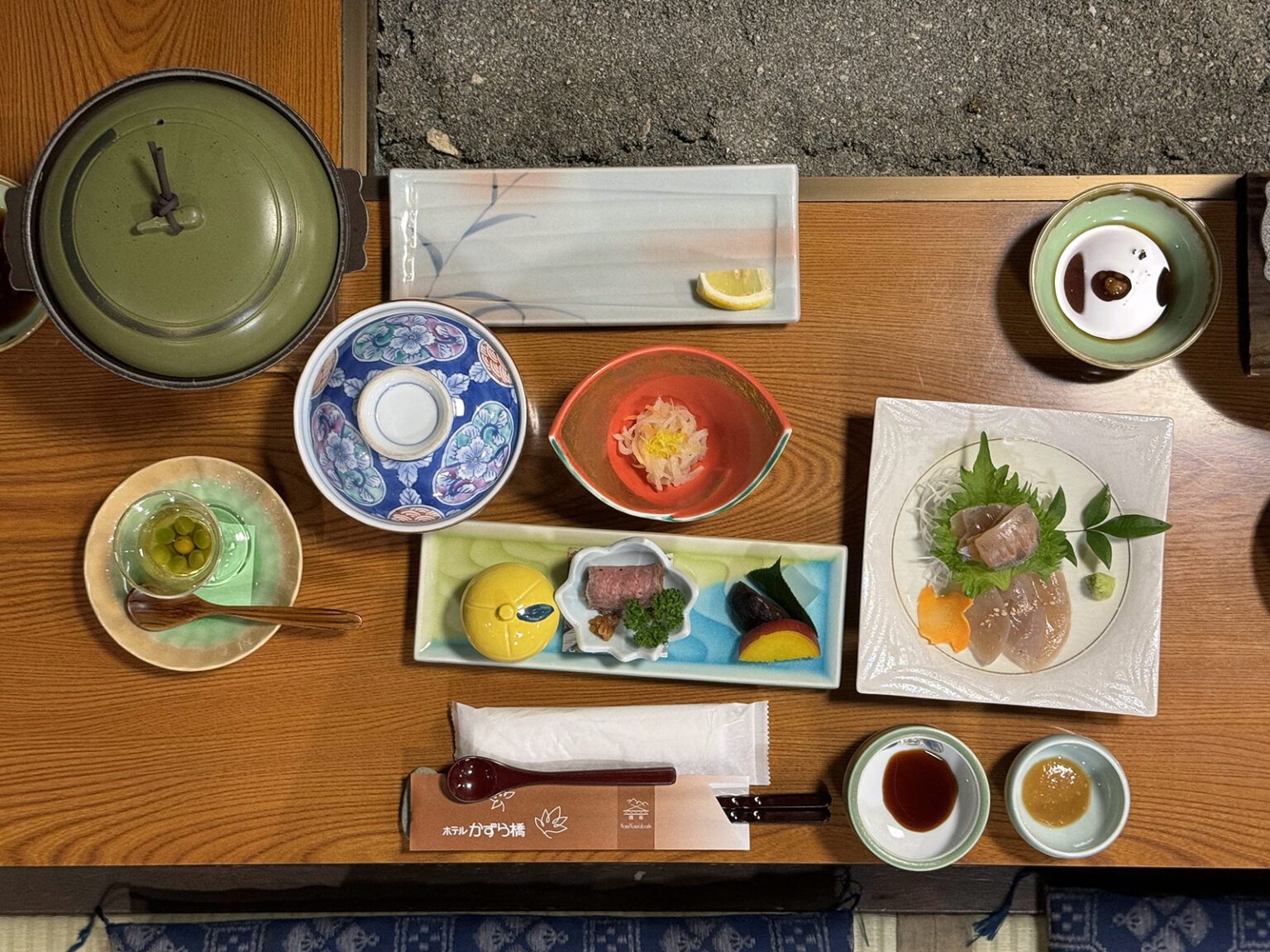
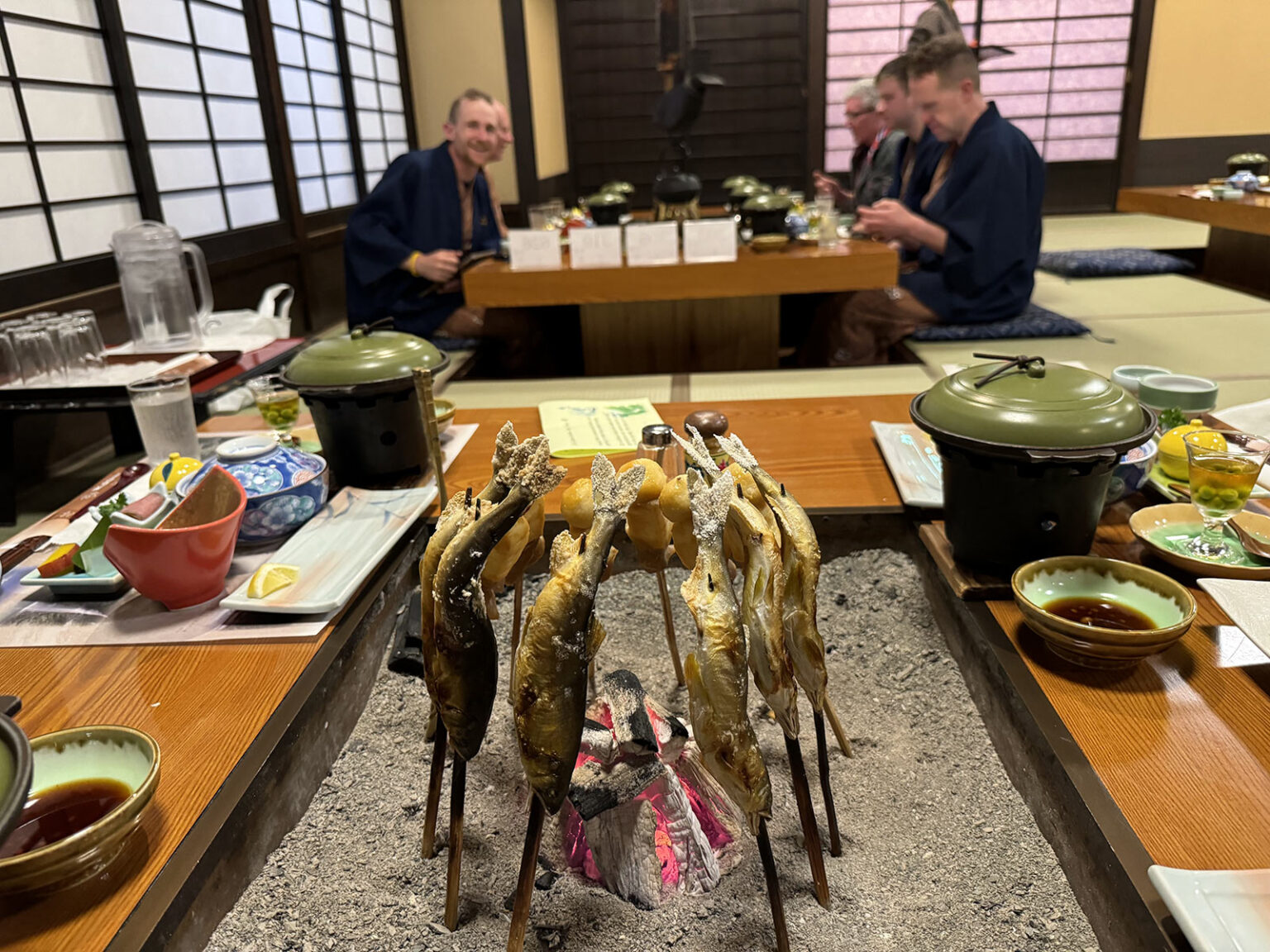


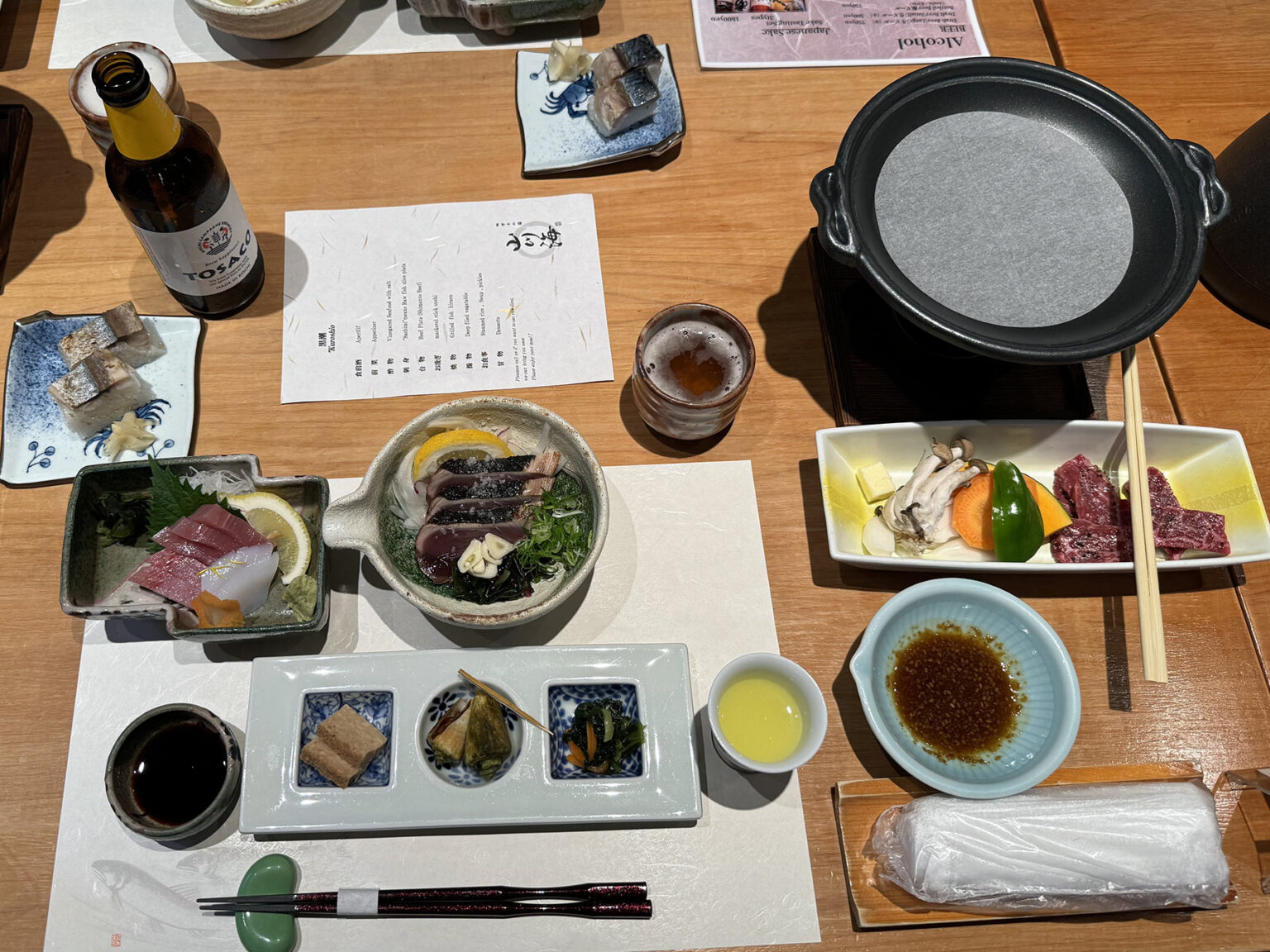
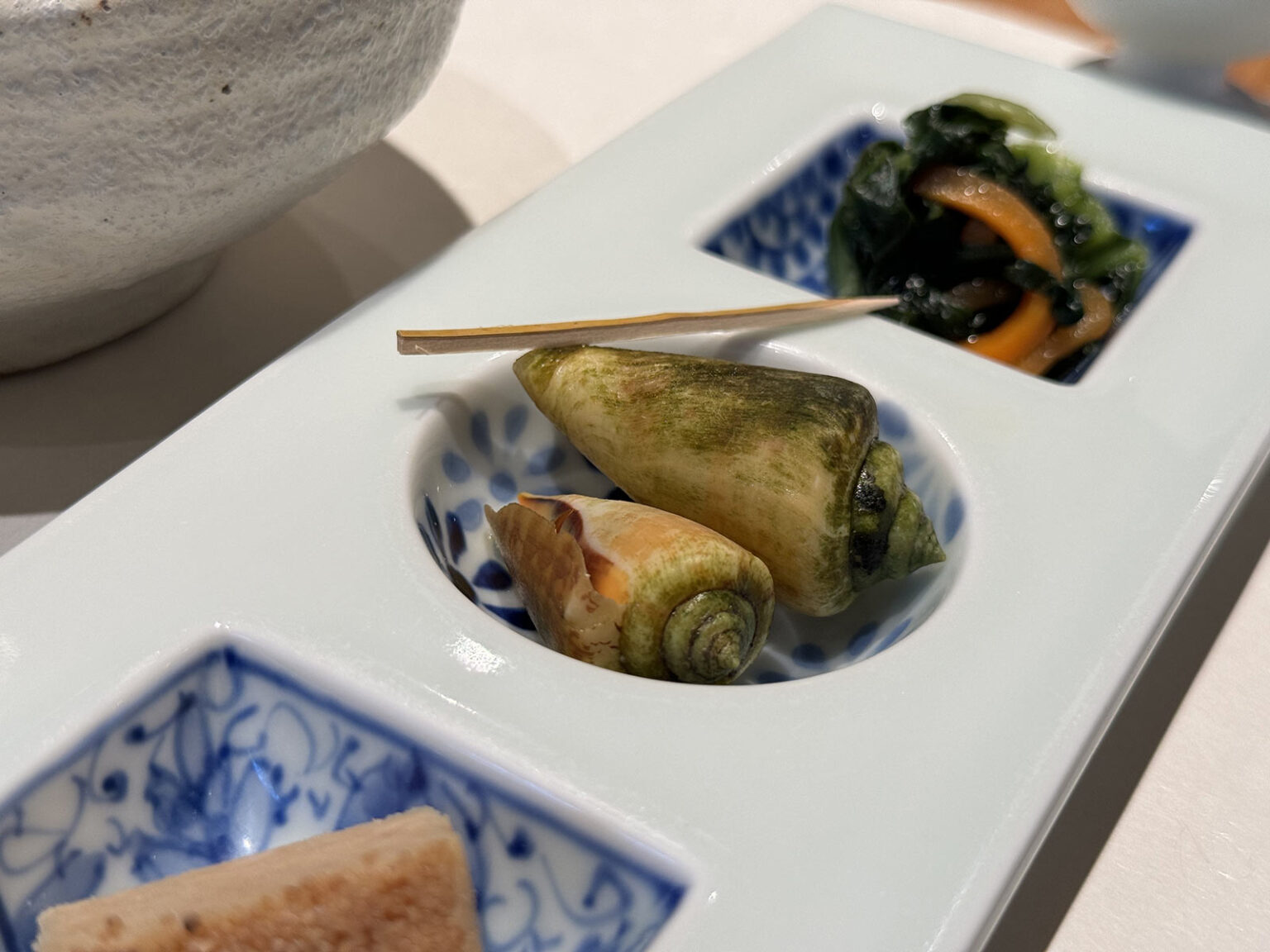
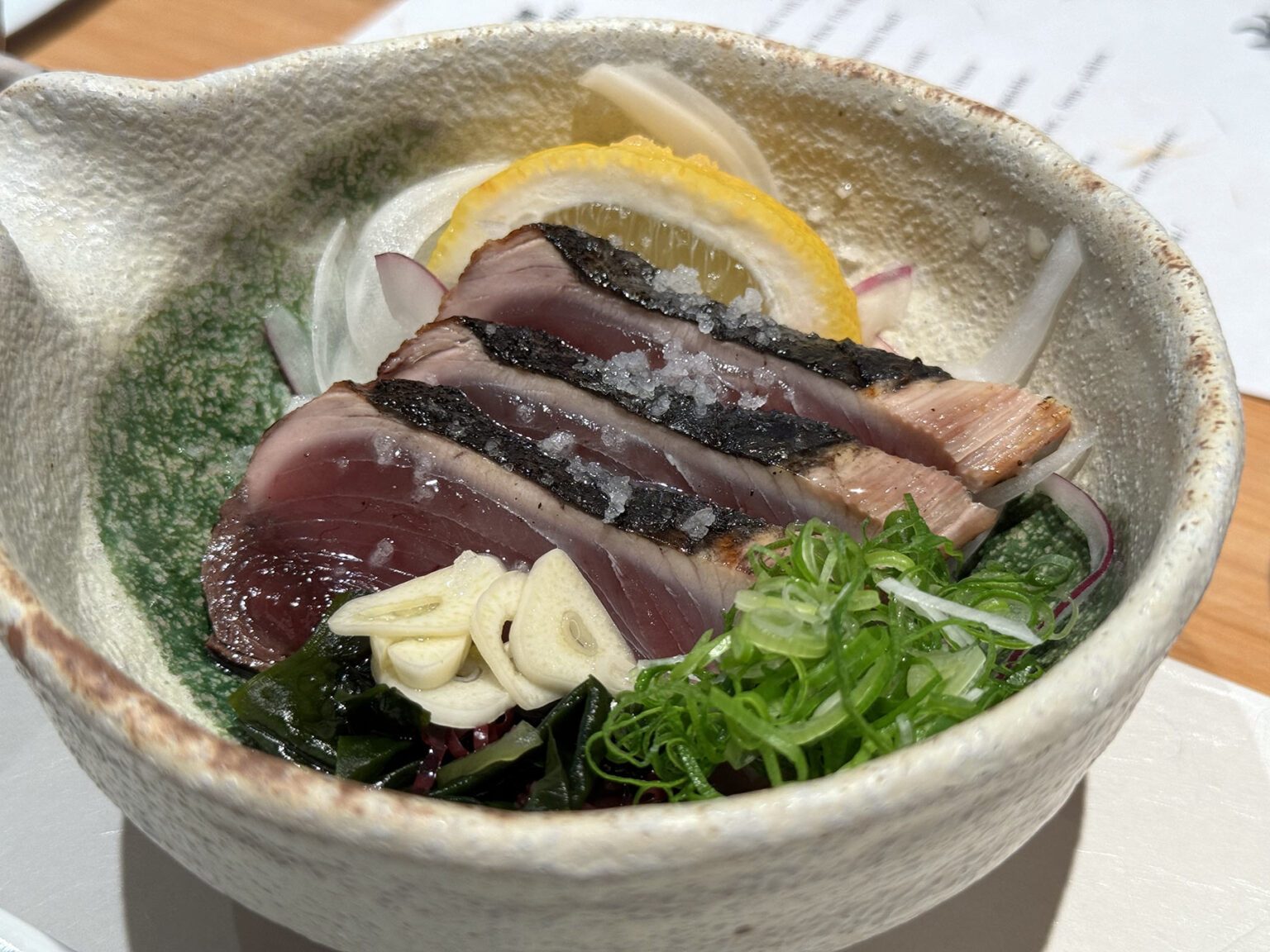
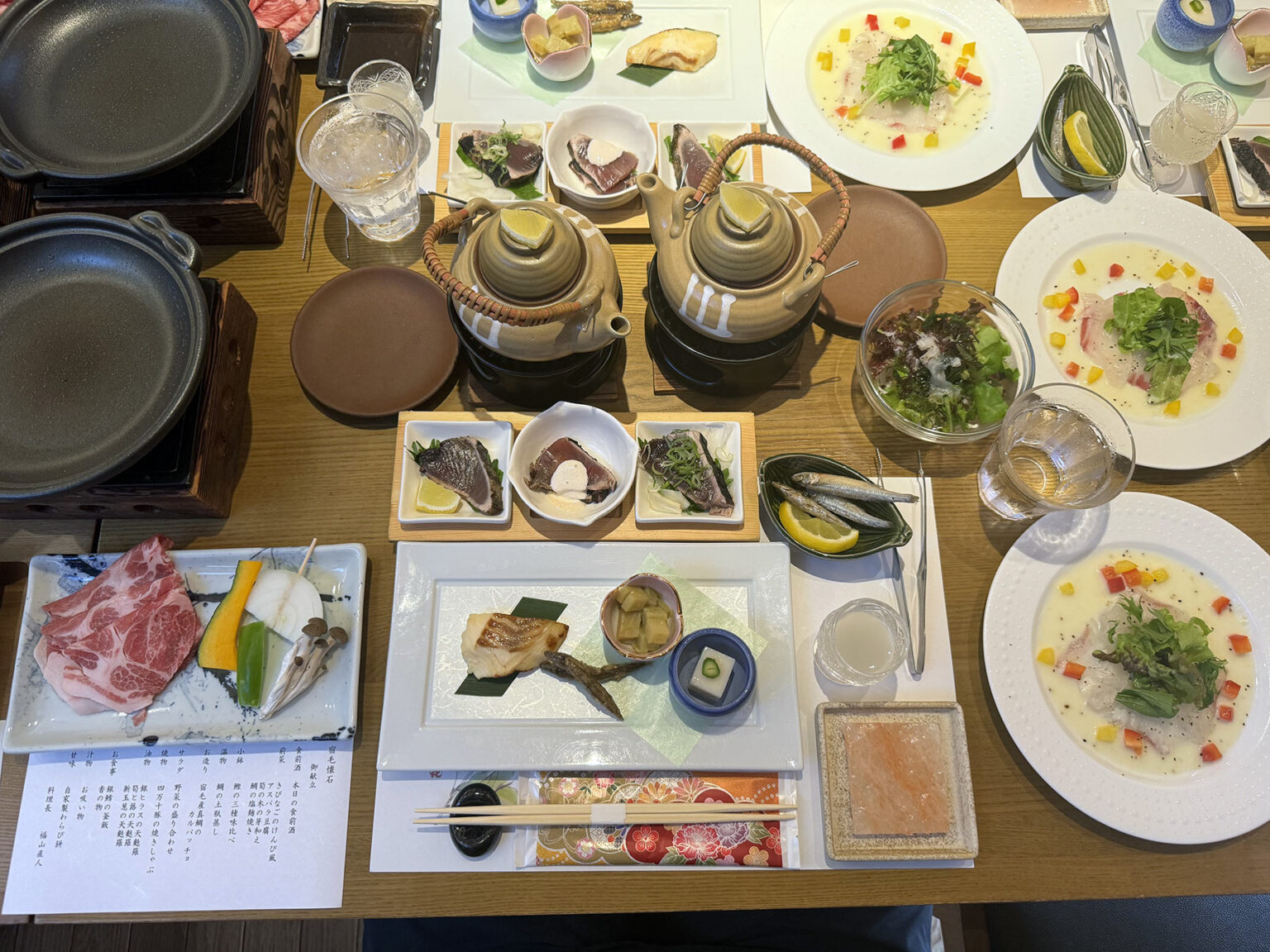
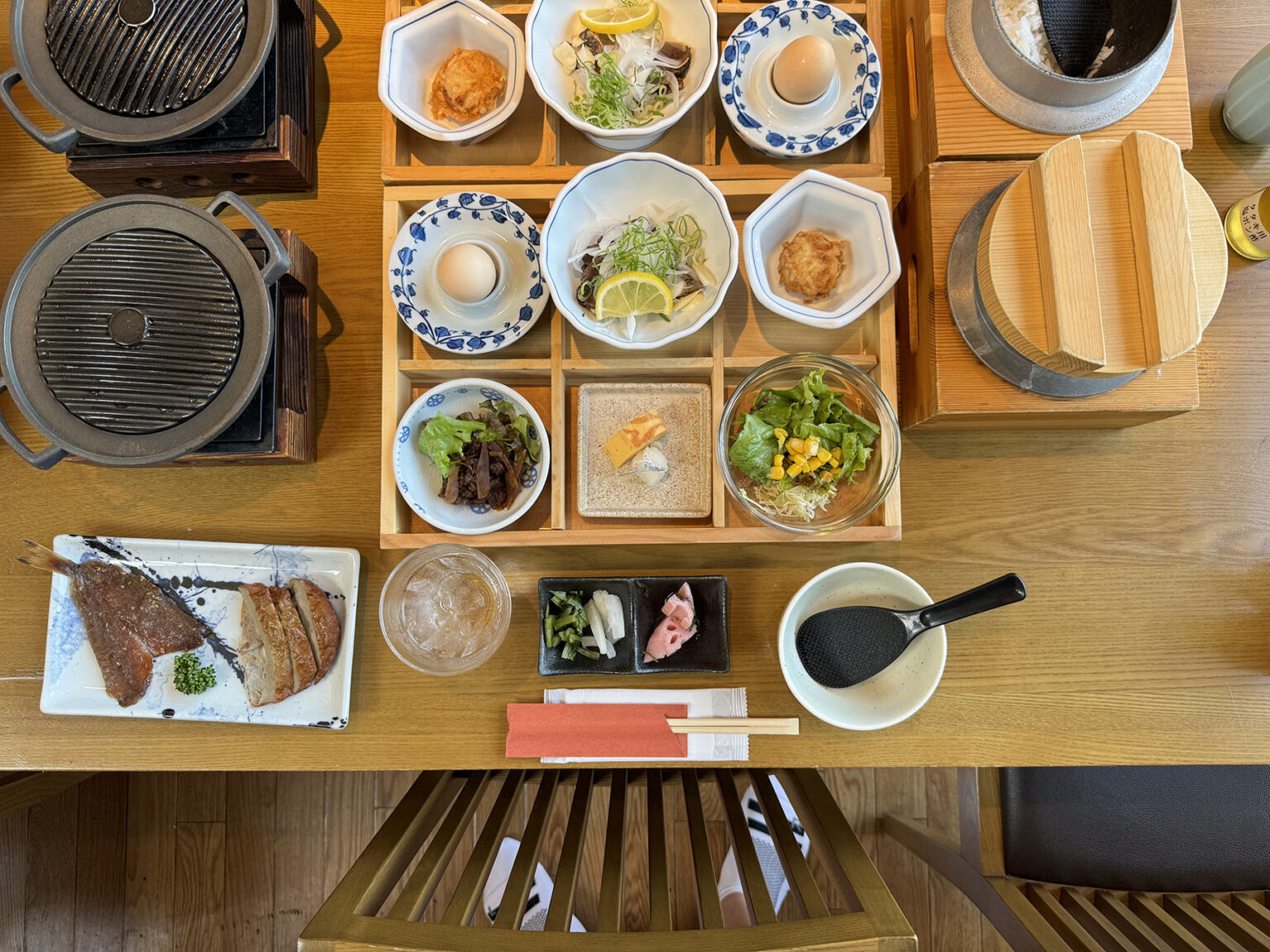
Which is why it’s cool that we get to choose our own lunches:
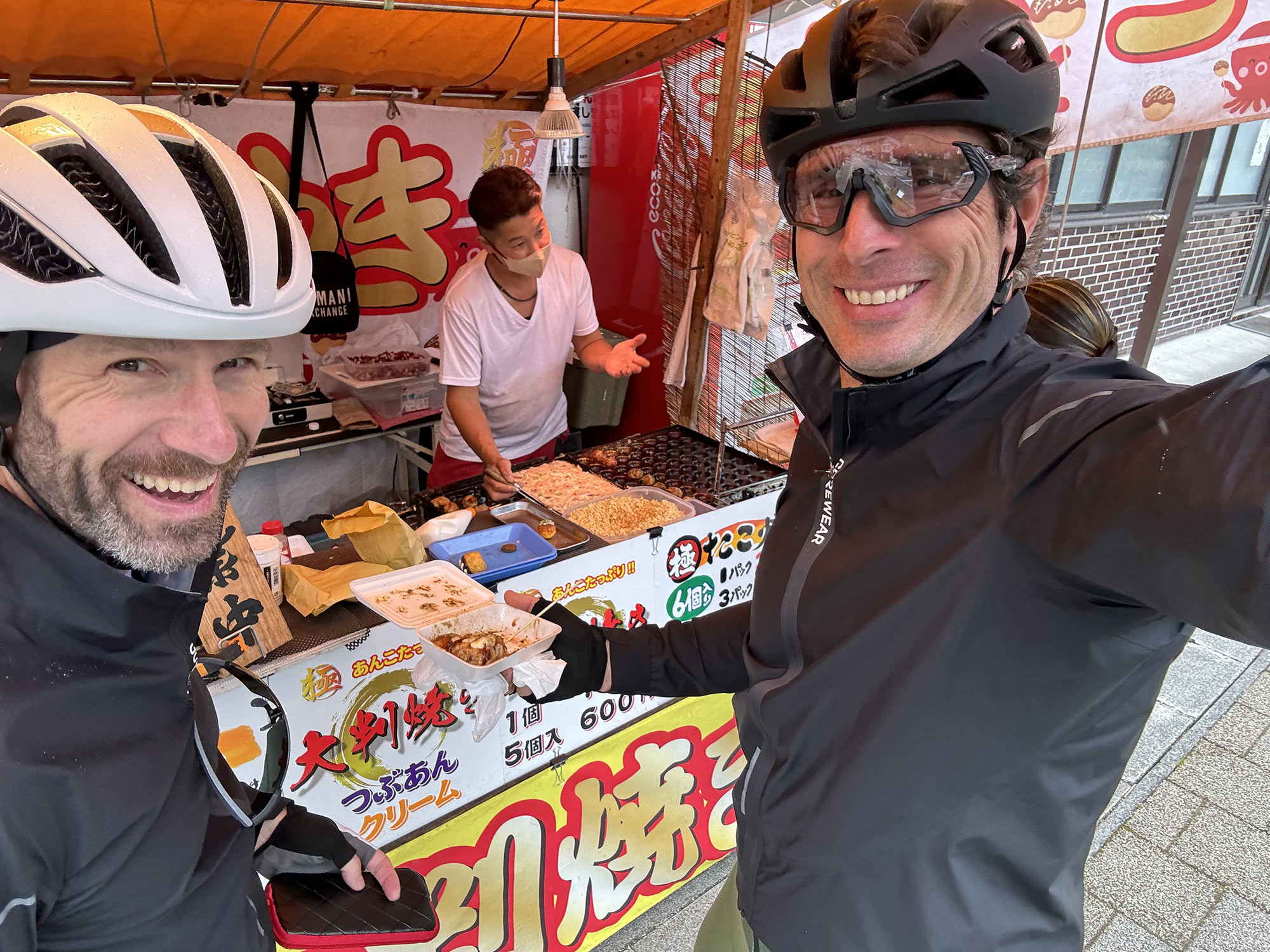
Our guides had suggestions, but some spots had multiple options. And we sought out takoyaki stands when we saw them. It’s pan-fried dough balls with octopus in them, covered in a variety of sauces and seasonings. Very delicious, and a popular snack in Japan.

A big, hot bowl of pork ramen with the special egg is also a great, filling option. I definitely recommend asking for it oomori (large portion) with an extra serving of pork (a standard serving is usually only 2-3 slices).

I also strongly recommend looking around. The recommended lunch spot(s) is/are usually a “safe” option, but we found food trucks across the street with way more interesting dishes. This one smoked and seared fresh Bonito right in front of us, then sliced, seasoned, and plated it with pickled vegetables and more. It was amazing, and amazingly cheap…roughly $6 USD.
Don’t be afraid to explore, that’s the reason they leave lunch up to you. Take advantage!

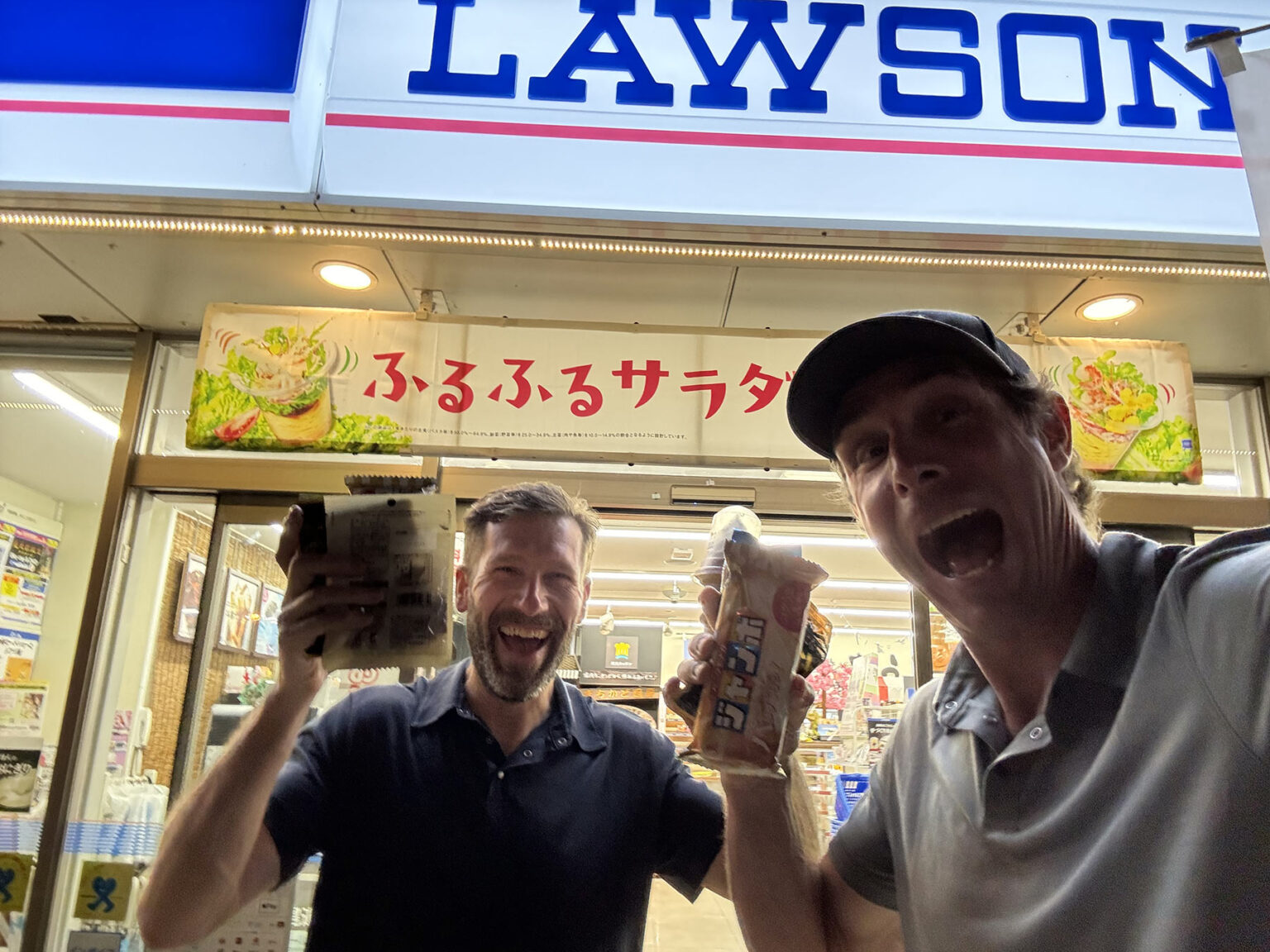
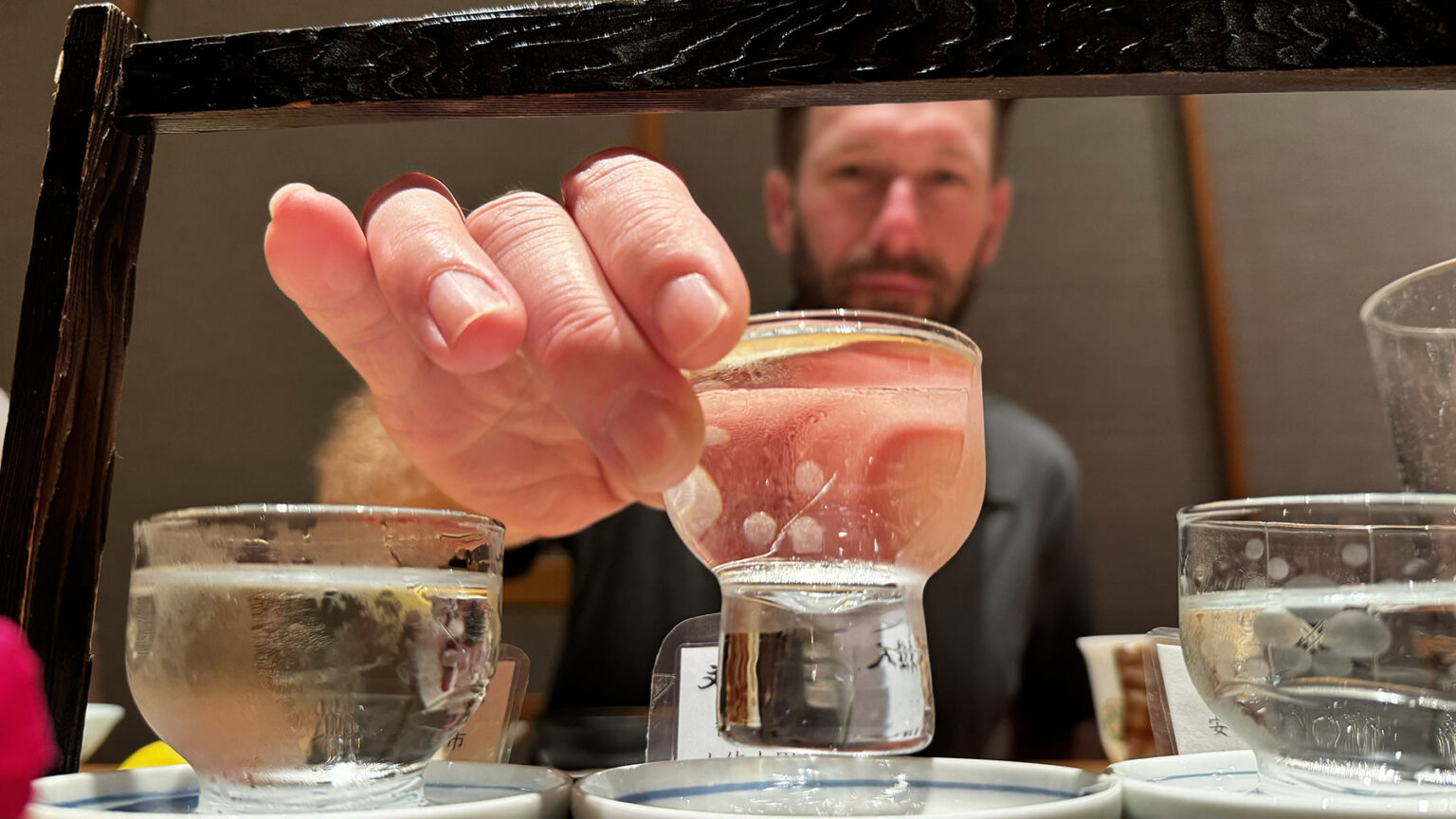

Also, try the local beverages, and check out the ice cream section at the konbini (convenience stores)…lots of tasty treats there! Some restaurants had sake flights so you could try local and regional sake, too.
Note: While breakfast and dinners are included, alcoholic beverages are on your dime for most meals, as is lunch and extra snacks, etc. I recommend bringing about 20,000 yen in cash with you, and use the ATMs at every c-store if you need more. Not every store or cafe takes credit cards.
Hotels & Hot Baths

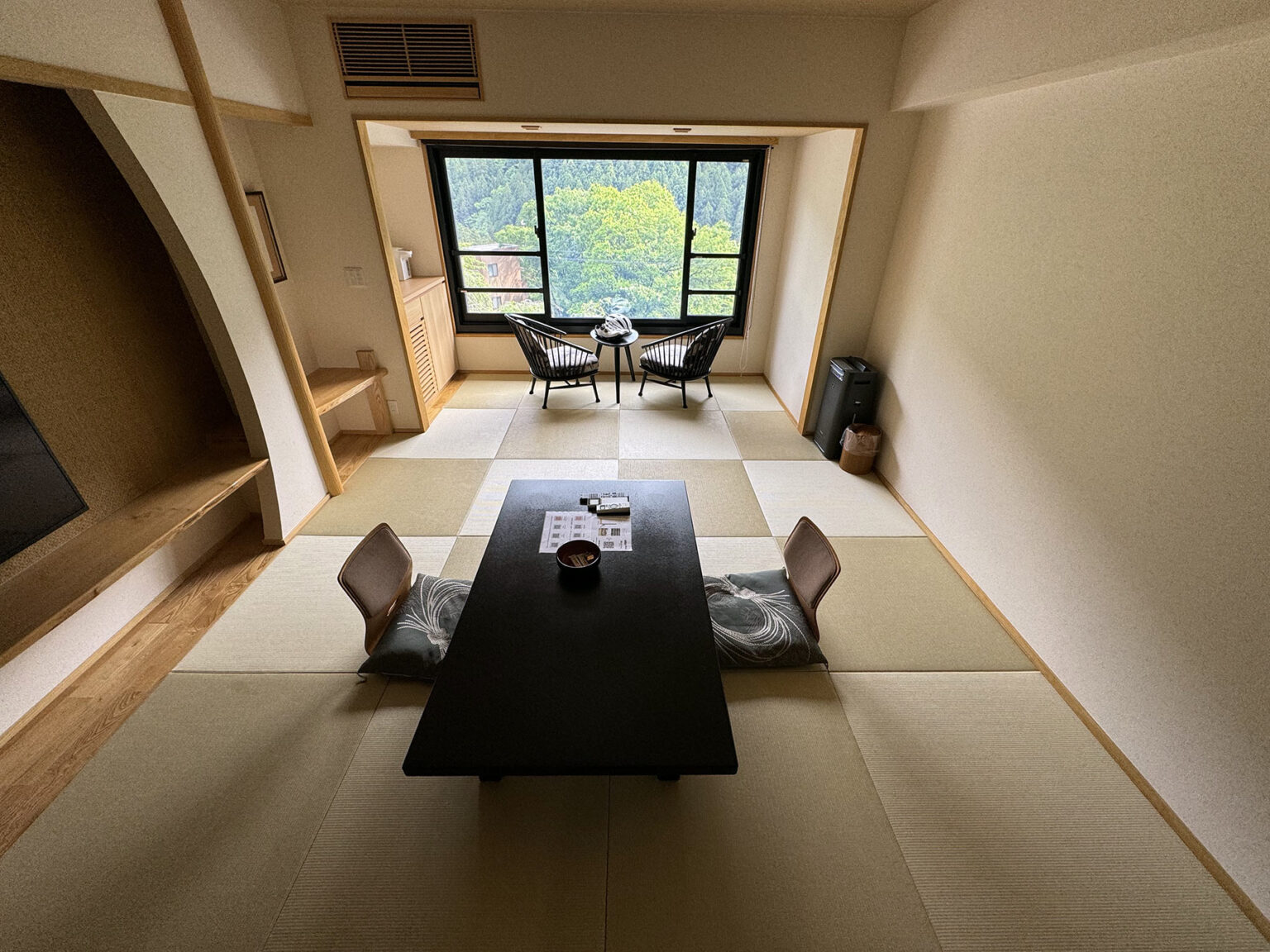

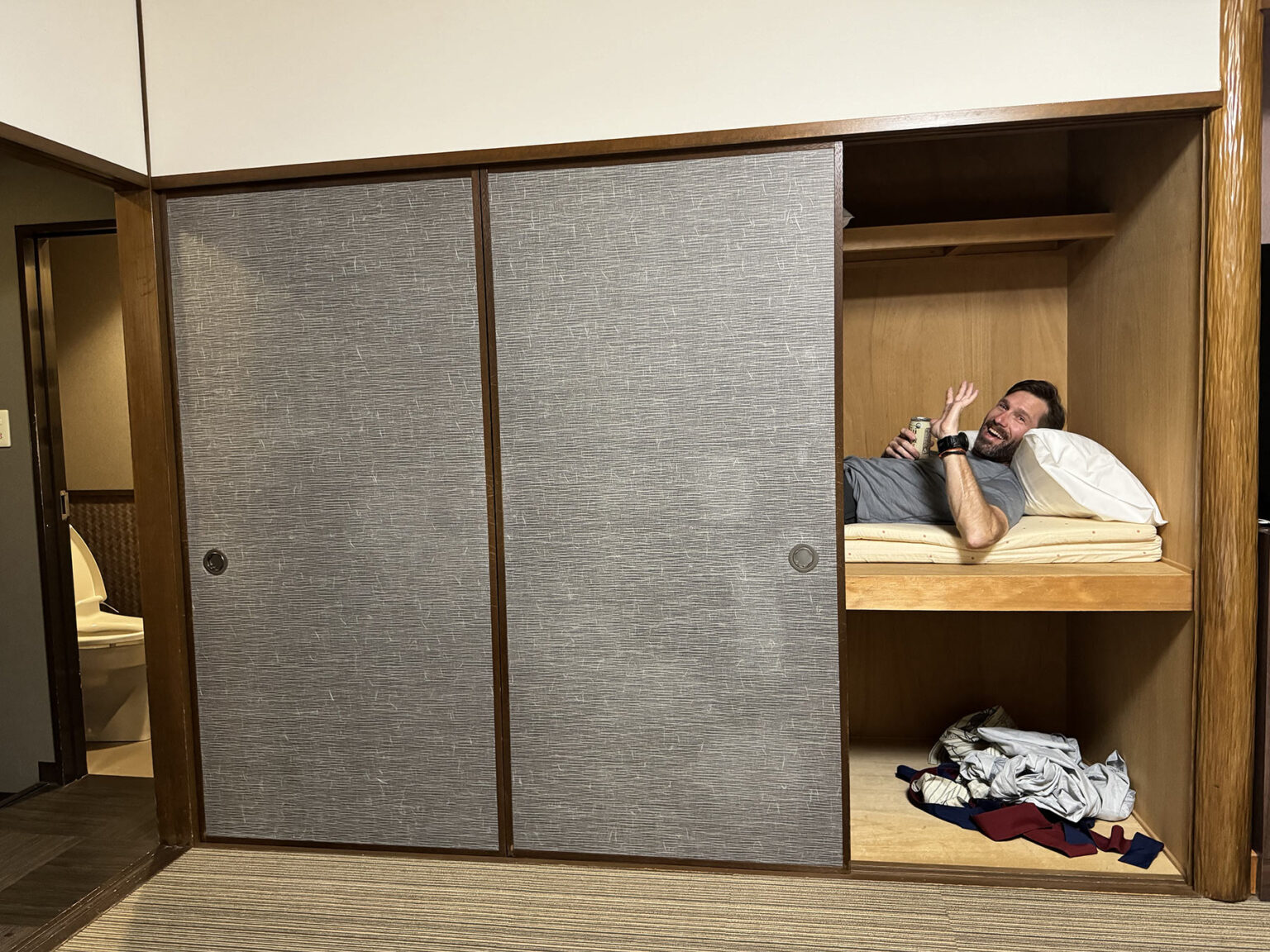
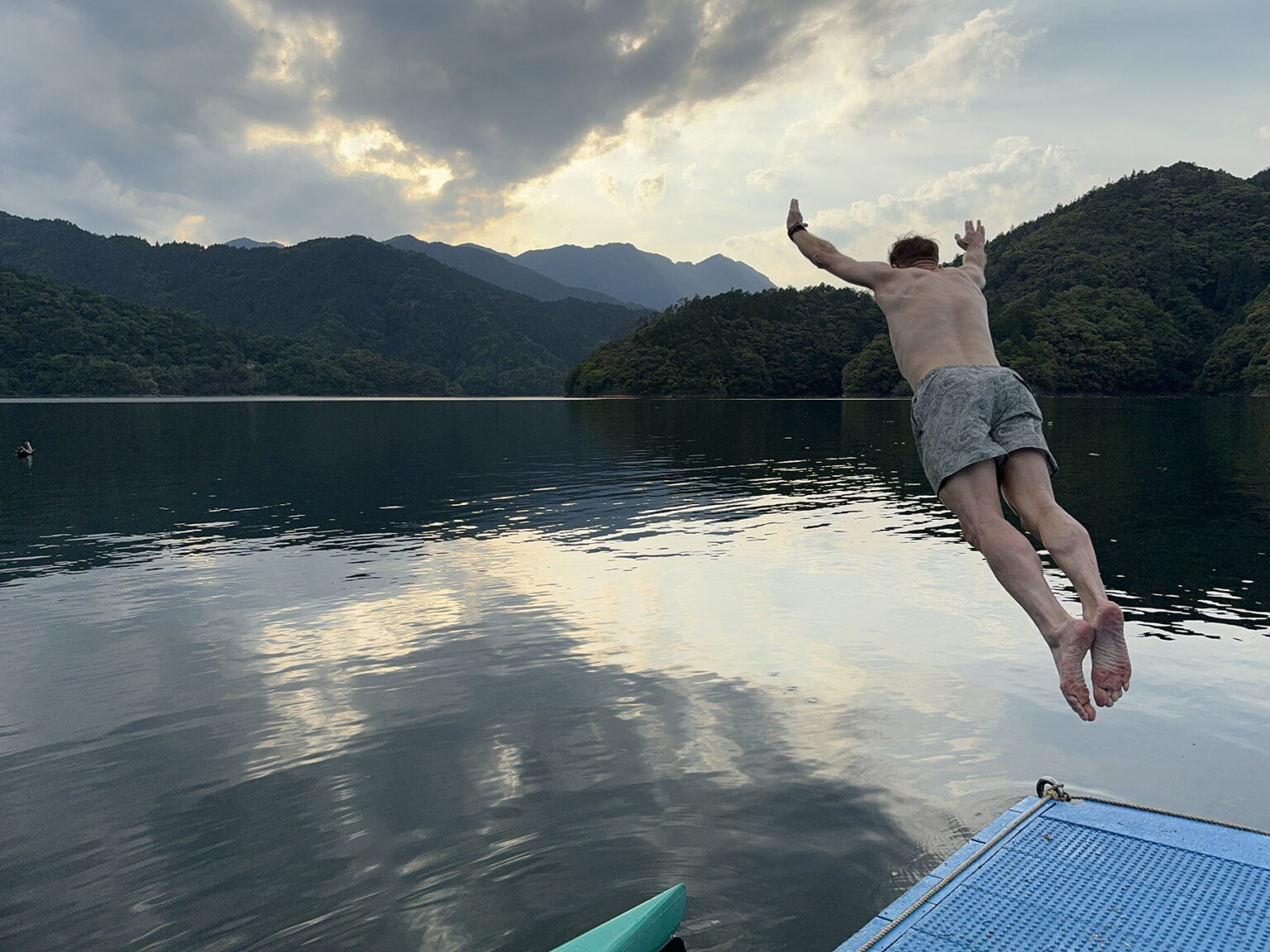
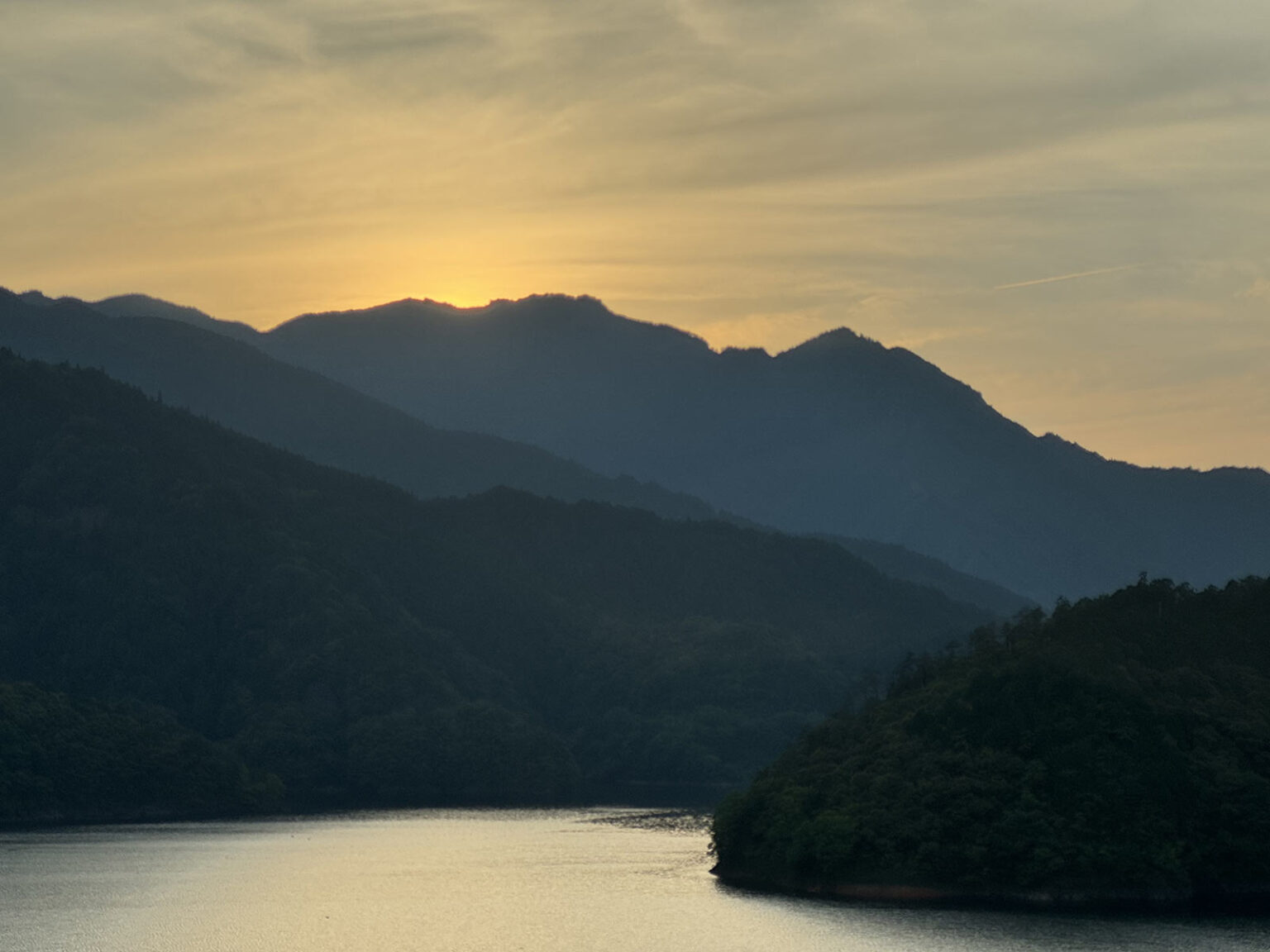

The hotels were a mix of Western-style and traditional ryokan, where you lay out sleeping mats on the tatami floors at night. Or, if you’re riding buddy snores, you leave their pad in the closet and close the door…
In most cases, you want to take your shoes off as soon as you enter your room, but always for rooms with tatami mat floors. One hotel had a shared bathroom on the hall and provided bath slippers, so you’d swap from your room slippers to the bath slippers, then back. You’ll also take off your shoes and slippers before entering the onsen.
Onsens
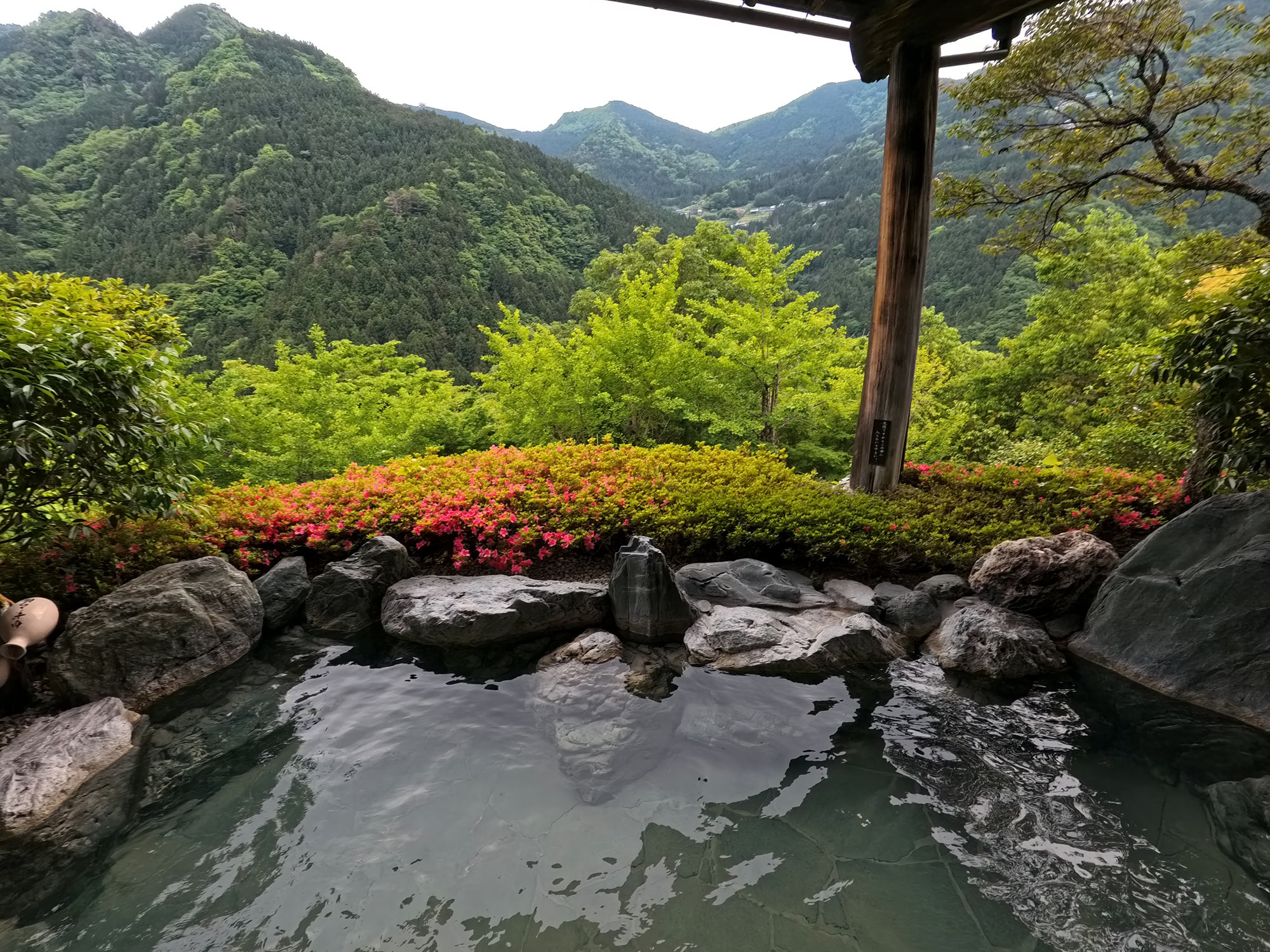
An Onsen (ōn-sin) is more than a hot tub, it’s a public bath. Where Scandinavian cultures go to hot springs to soak, Japanese go to bathe.
But don’t worry, no one’s scrubbing in the hot pools. Showers line the entrance, and everyone is expected to thoroughly cleanse themselves before entering the water. Many people spend more time cleaning than soaking, but how you enjoy it is up to you…after you’re showered.

Almost all are separated for men and women and do not allow clothes, phones, cameras, food, beverages, or tattoos. Yes, you have to get naked, dems the rules. Hotels with onsens, of which most had them during our tour, provide robes to wear to and from the baths, and small wash towels that also make great modesty pieces if you’re uncomfortable walking around bare.
There are some outdoor spots with foot soaks, which are co-ed, and occasionally you can find a hot spring feeding into a river that’s public. But most onsens and baths are private and separated.
These are a highlight of the trip. Soaking after a long ride is amazing, and especially on the cooler days. This trip is offered twice per year, in May and October. The May trip ends just as southern Japan is about to enter its rainy season, so there’s a good chance of sprinkles. We had a couple of days with showers, but nothing serious, and nothing that stopped us from riding. Bring a rain jacket, and soak in the onsen after!
Notes & more photos
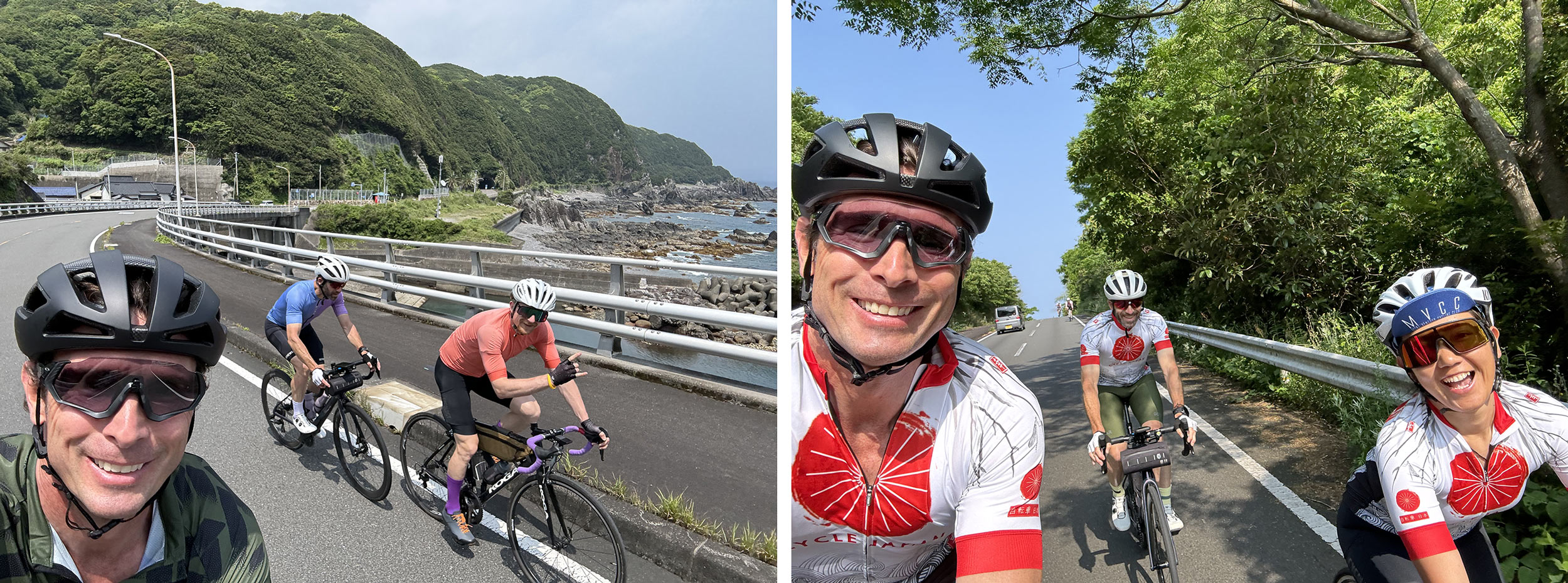
Our guides Nate & Eri were great. Super friendly, happy to help with anything, and had the logistics dialed, bags loaded and unloaded, and hotel check-ins covered before we even finished the ride each day. All we had to do was show up, ride, and enjoy ourselves, which is exactly what you’d want and expect from a full-service guided tour like this. They took turns riding and driving the van, so we got to know each of them…when we could keep up – they’re both rippers up and down the mountain!
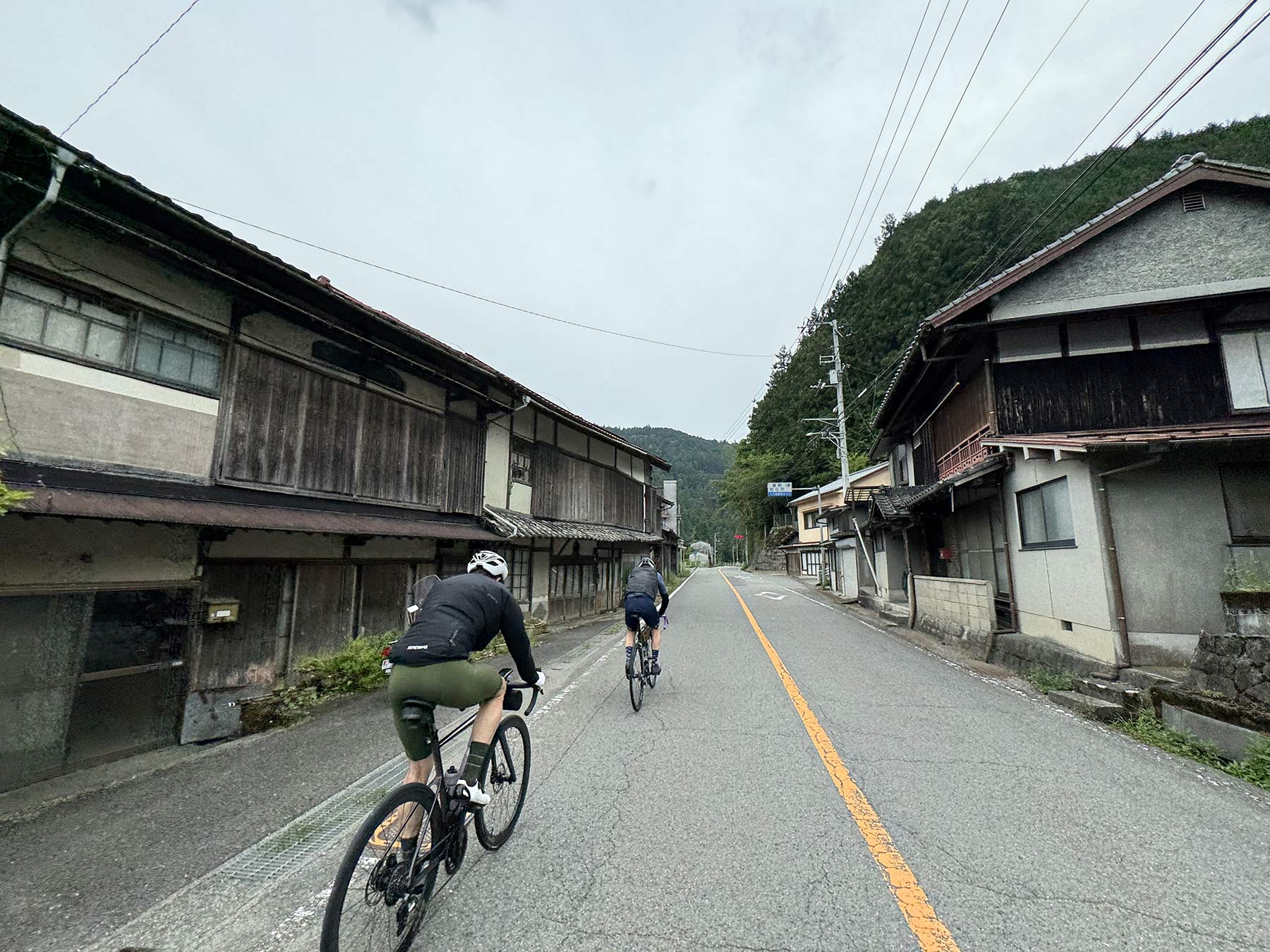
If you’re looking for a well-structured, expertly-guided cycling tour, I recommend checking out Ride & Seek’s extensive trip catalog. And if you’re interested in Japan, check out their Samurai Cycling Tour. We enjoyed ourselves immensely, thanks both to the guides’ stories and intel, and also because we could explore on our own, too. The route was the right mix of hard and fun, with plenty of short detours to be found if you want.
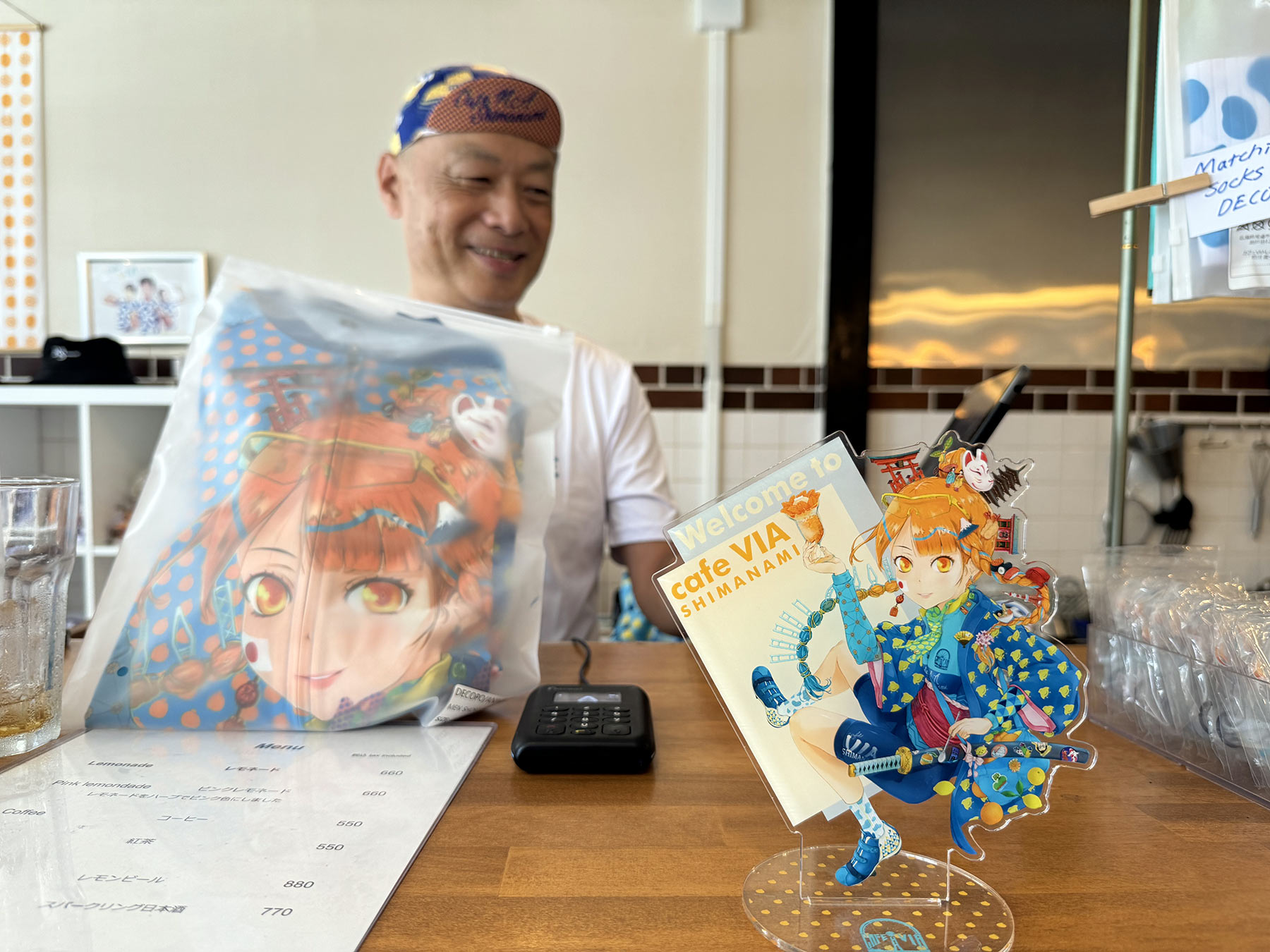
Nate even waited up to loop us through a small alley with a local brewery so we could grab a bottle for later, and they pointed out cool shops and local treats along the way.
Independently, and away from the guides, Steve and I also asked the other participants what they thought of the tour. They mostly echoed our sentiments, which is impressive considering they ranged in age from late 20s to 82! Plus, everyone’s cycling experience and personal backgrounds varied considerably, too, so the consensus confirmed our opinions in the best way.
It also made for an interesting week, talking to everyone, making new friends, and sharing our collective photos and stories from each day. It’s always interesting how different people experience the same thing, and I appreciate that there’s always something to learn from others. Sharing meals made that easy.
Temples and more photos

We took a LOT of photos. And video, which you’ll see in some of the reviews for products we used (list at bottom of this post). Many of our side trips were stops at various temples, which ranged from big and grand…
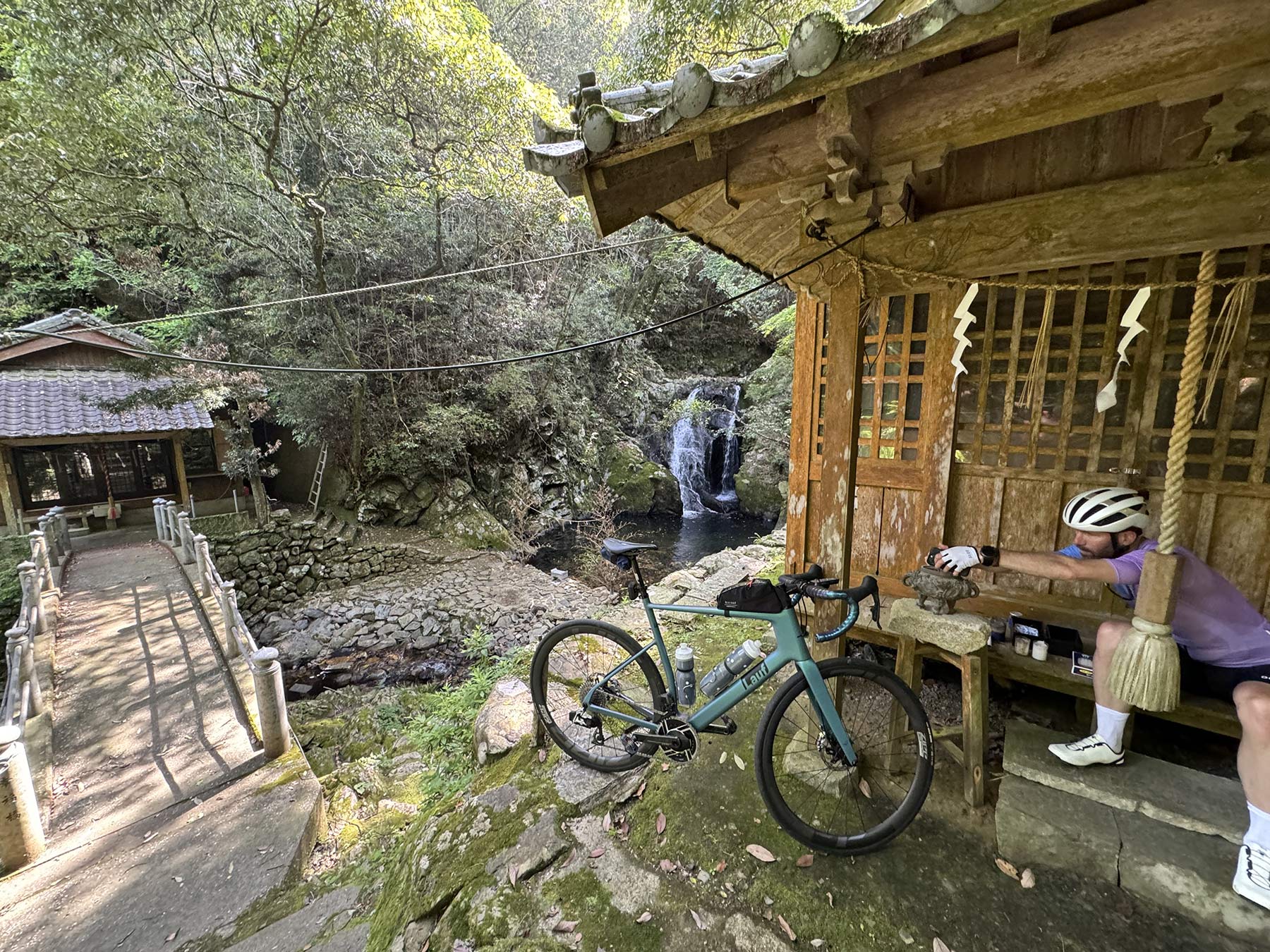
…to small and hidden, tucked down a path next to a waterfall. Our best advice? Just look around, and take time to stop. Here’s the best of the rest of our pics from Ride & Seek’s Samurai Cycling Tour.
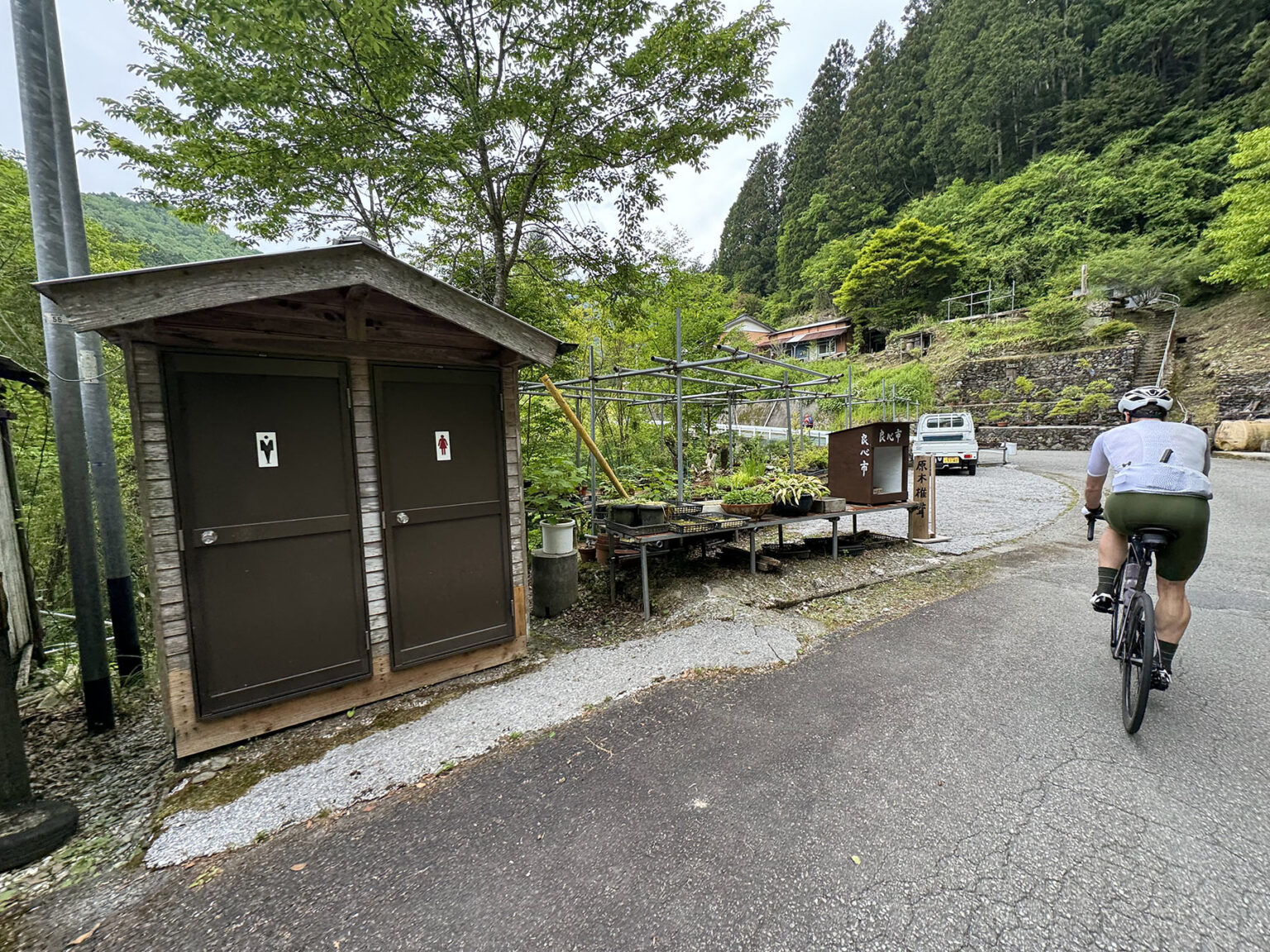
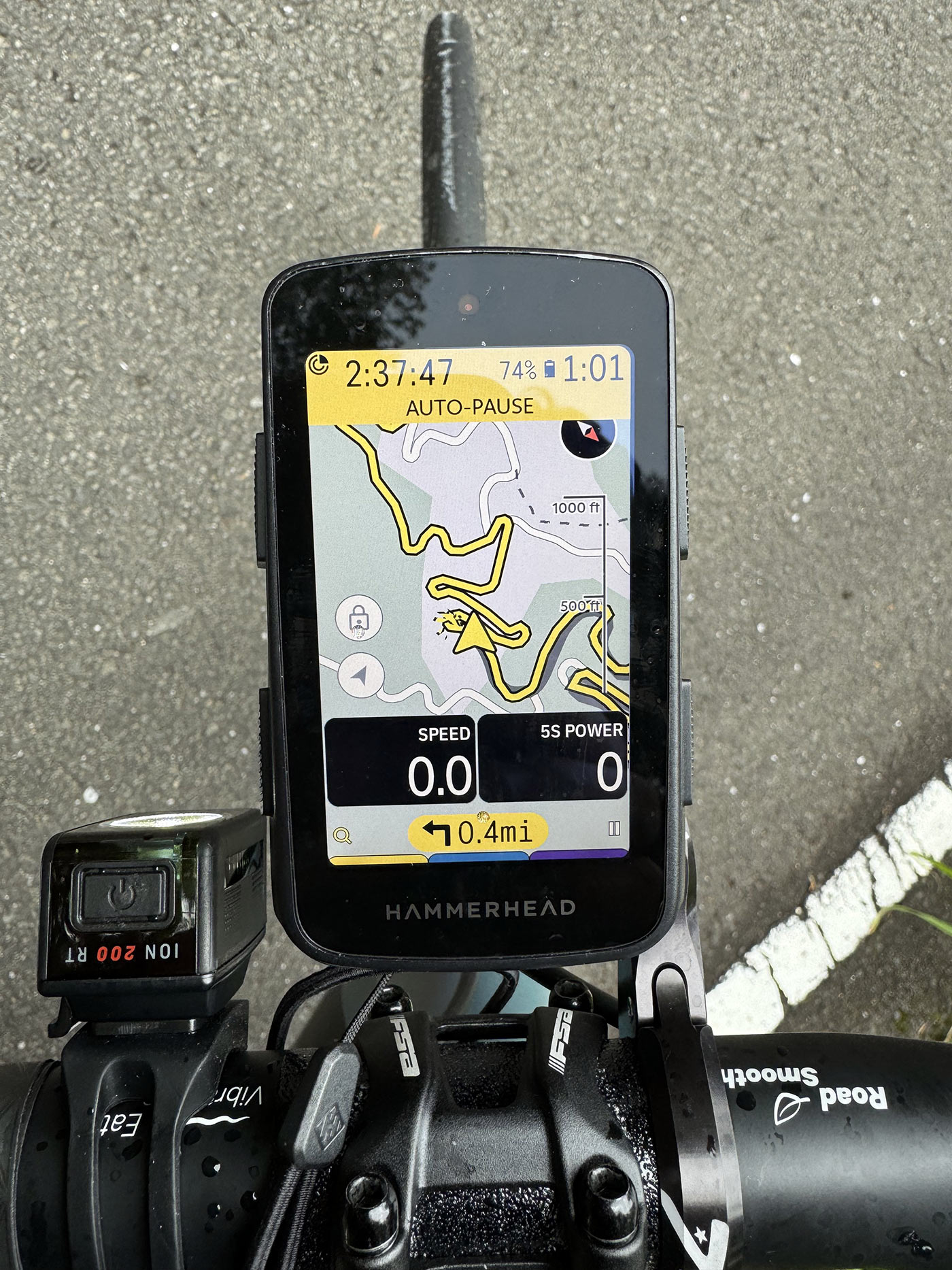


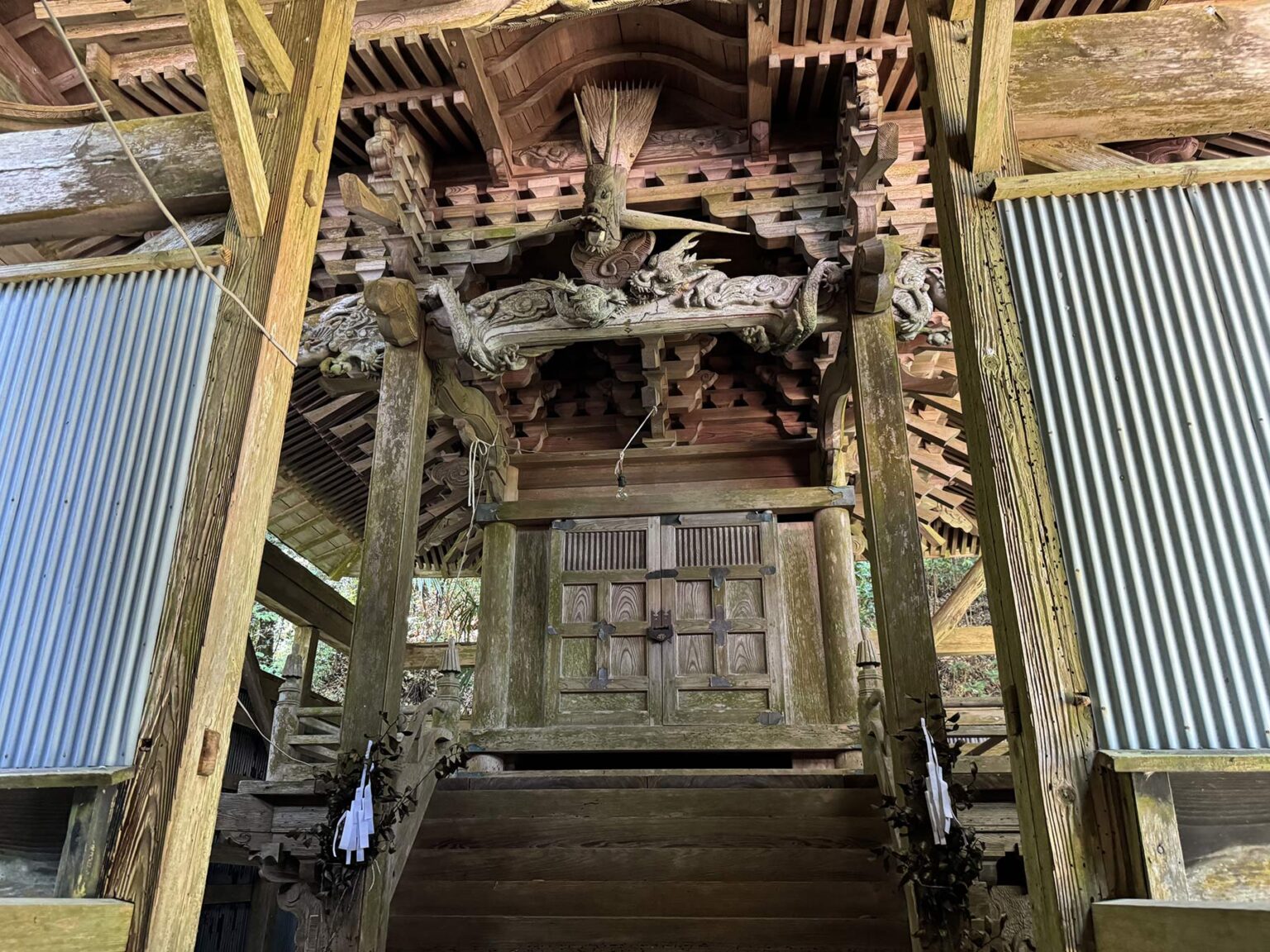


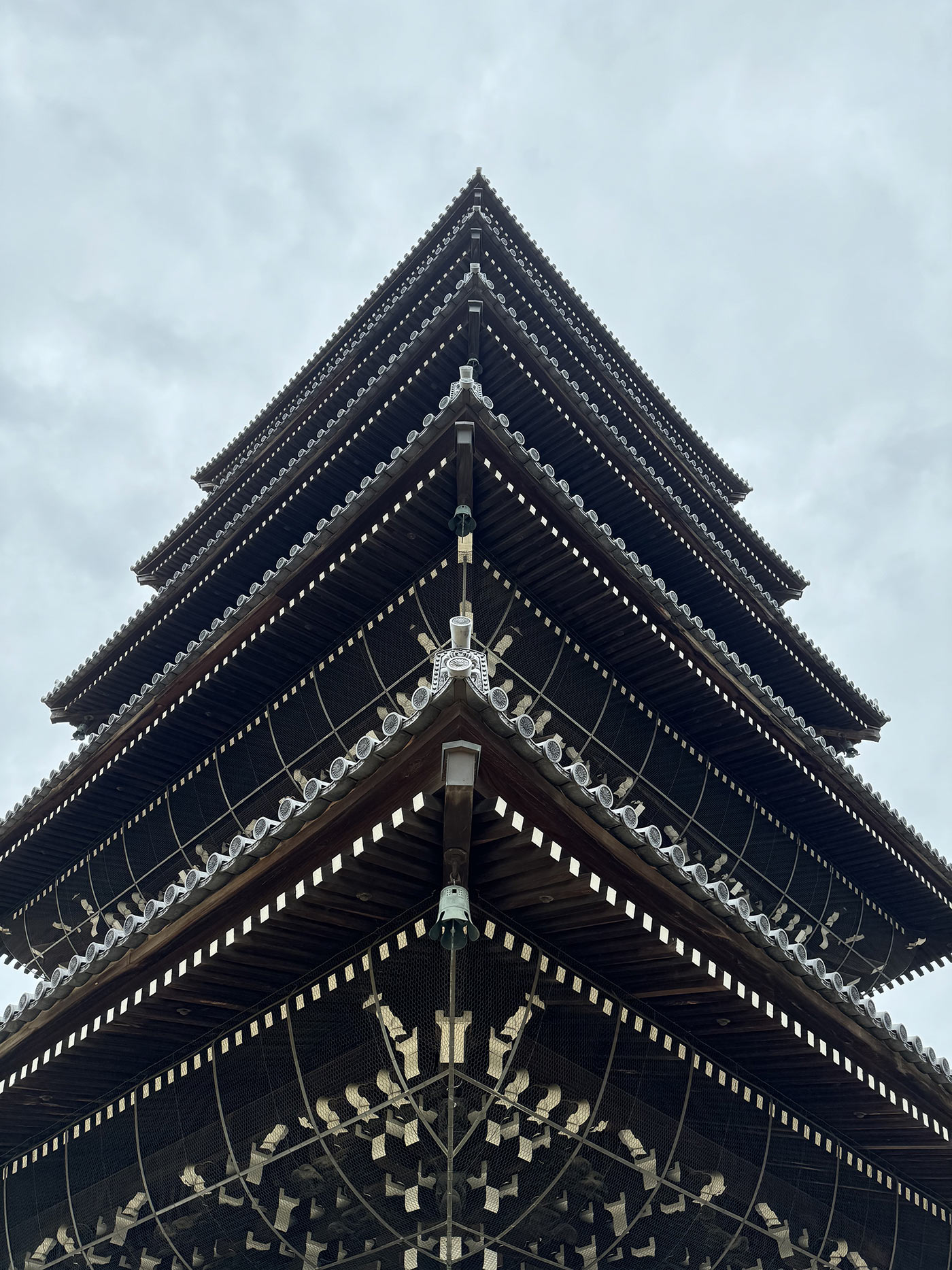
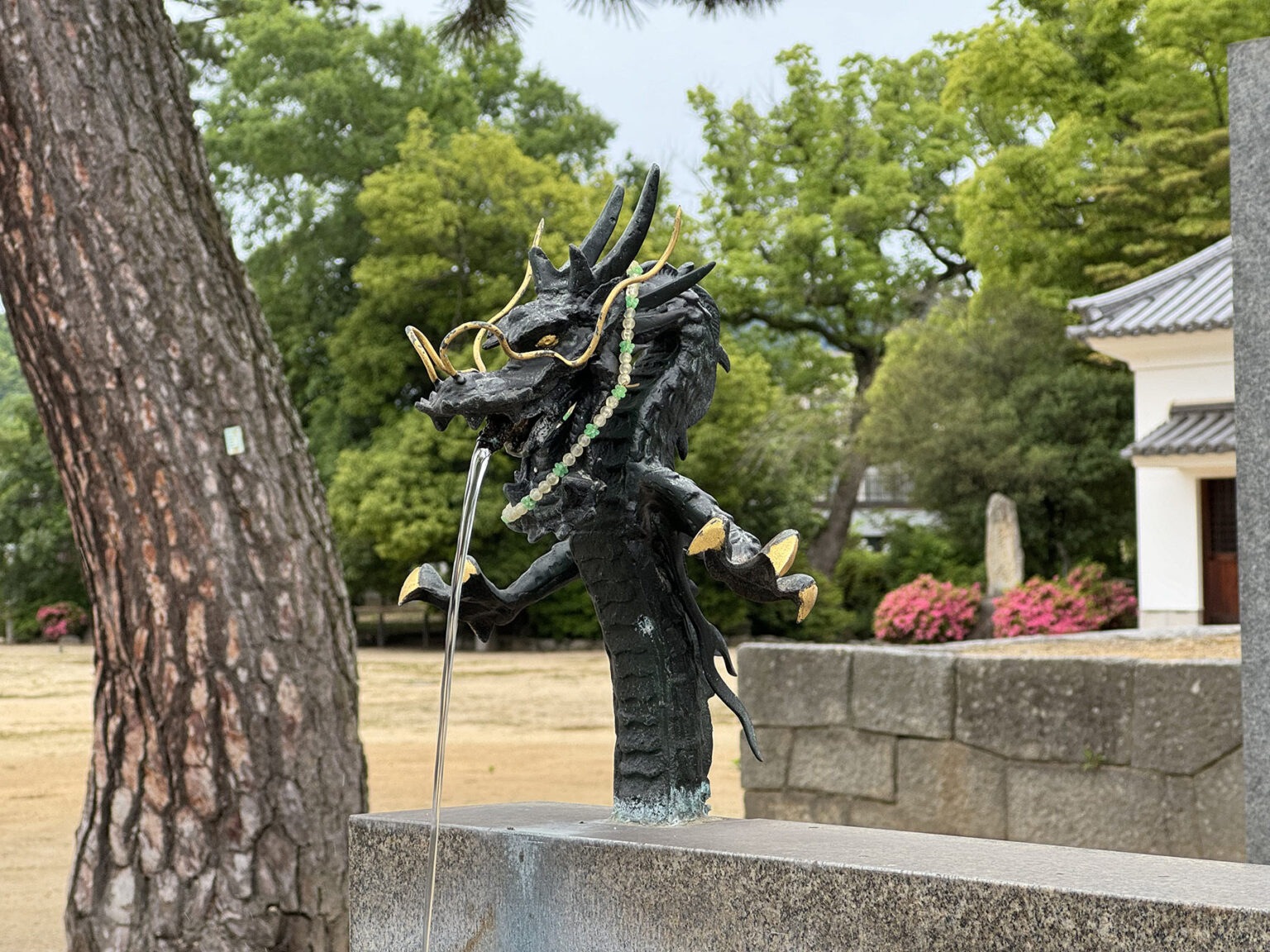
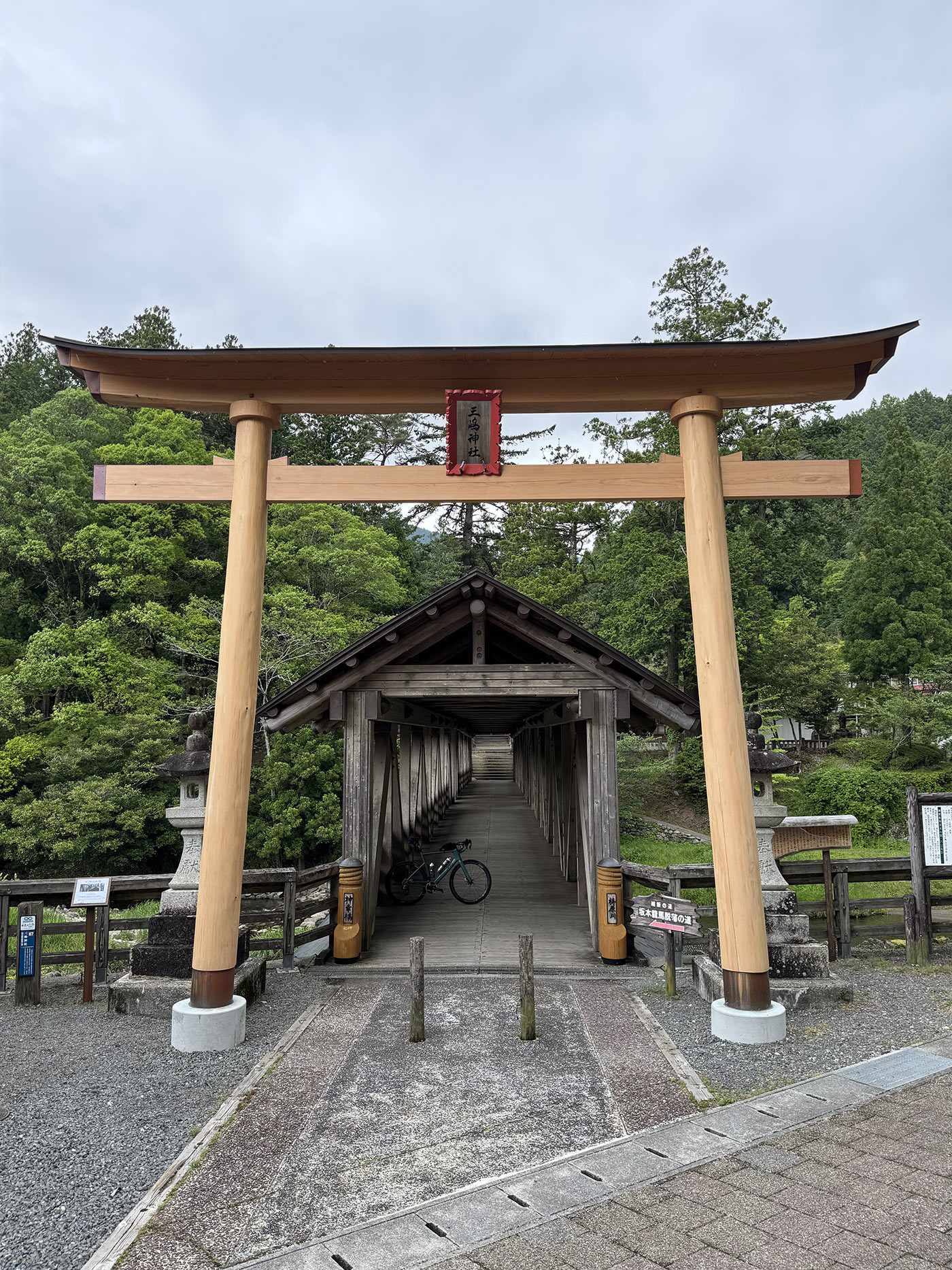
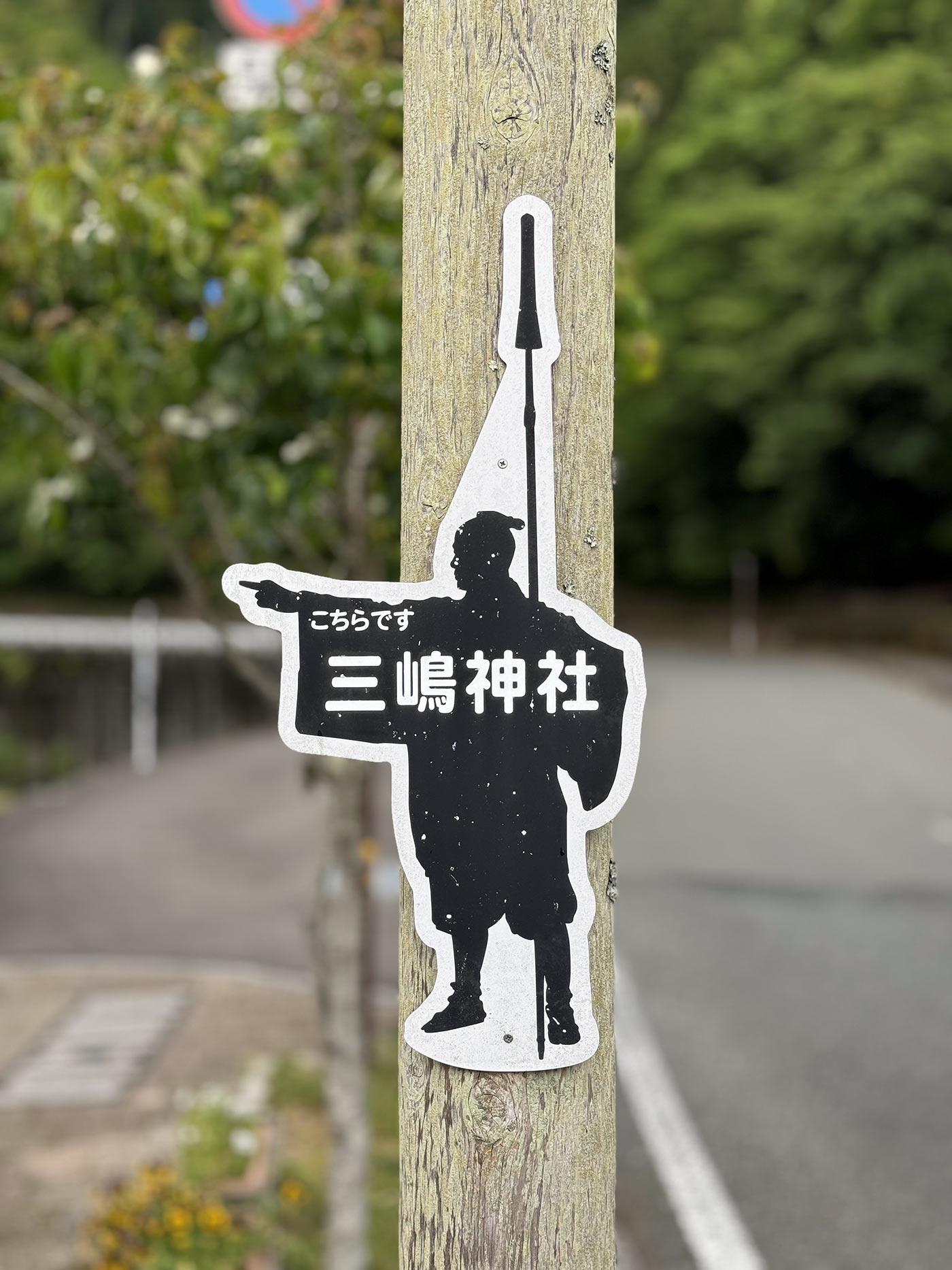
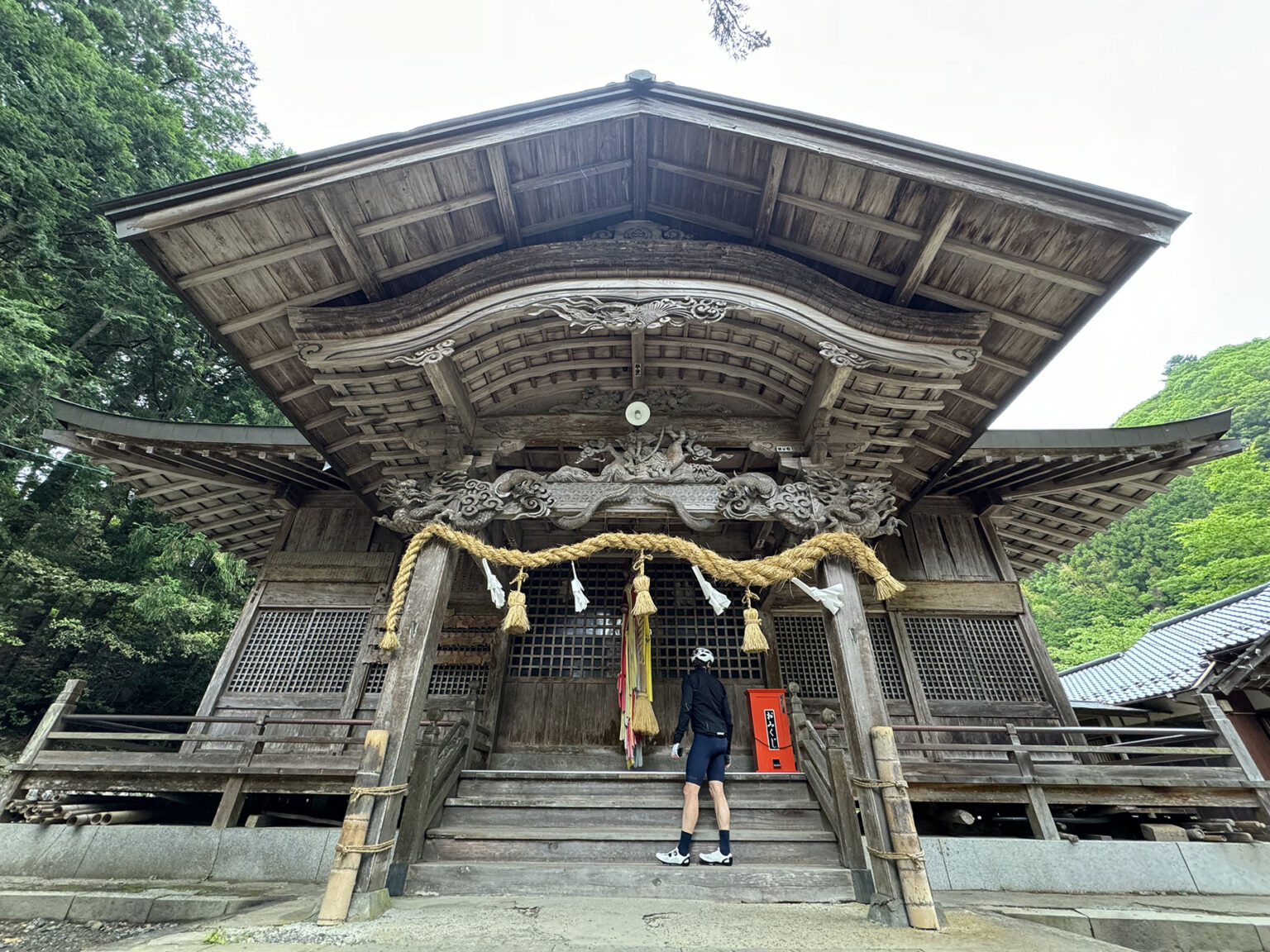
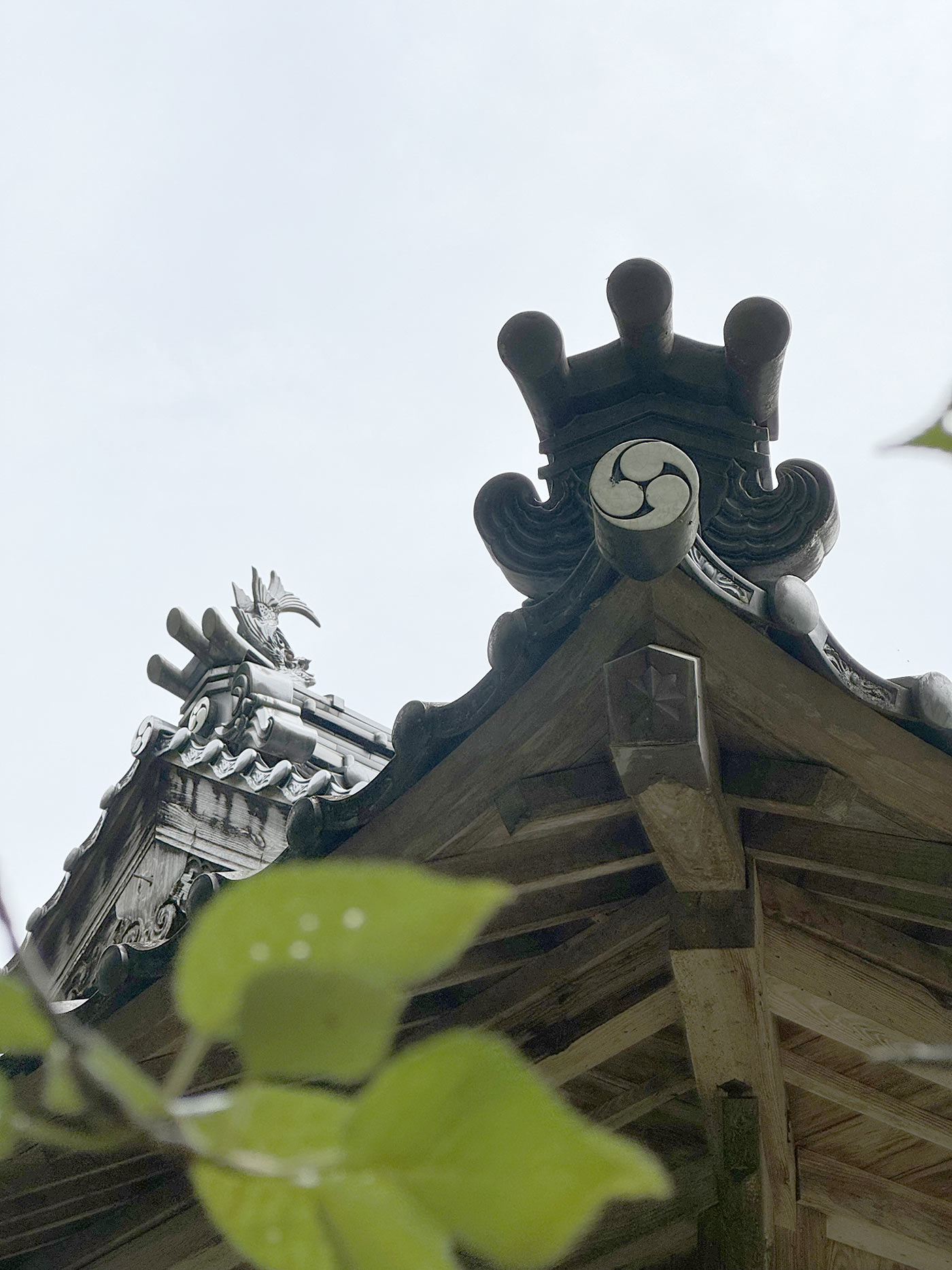
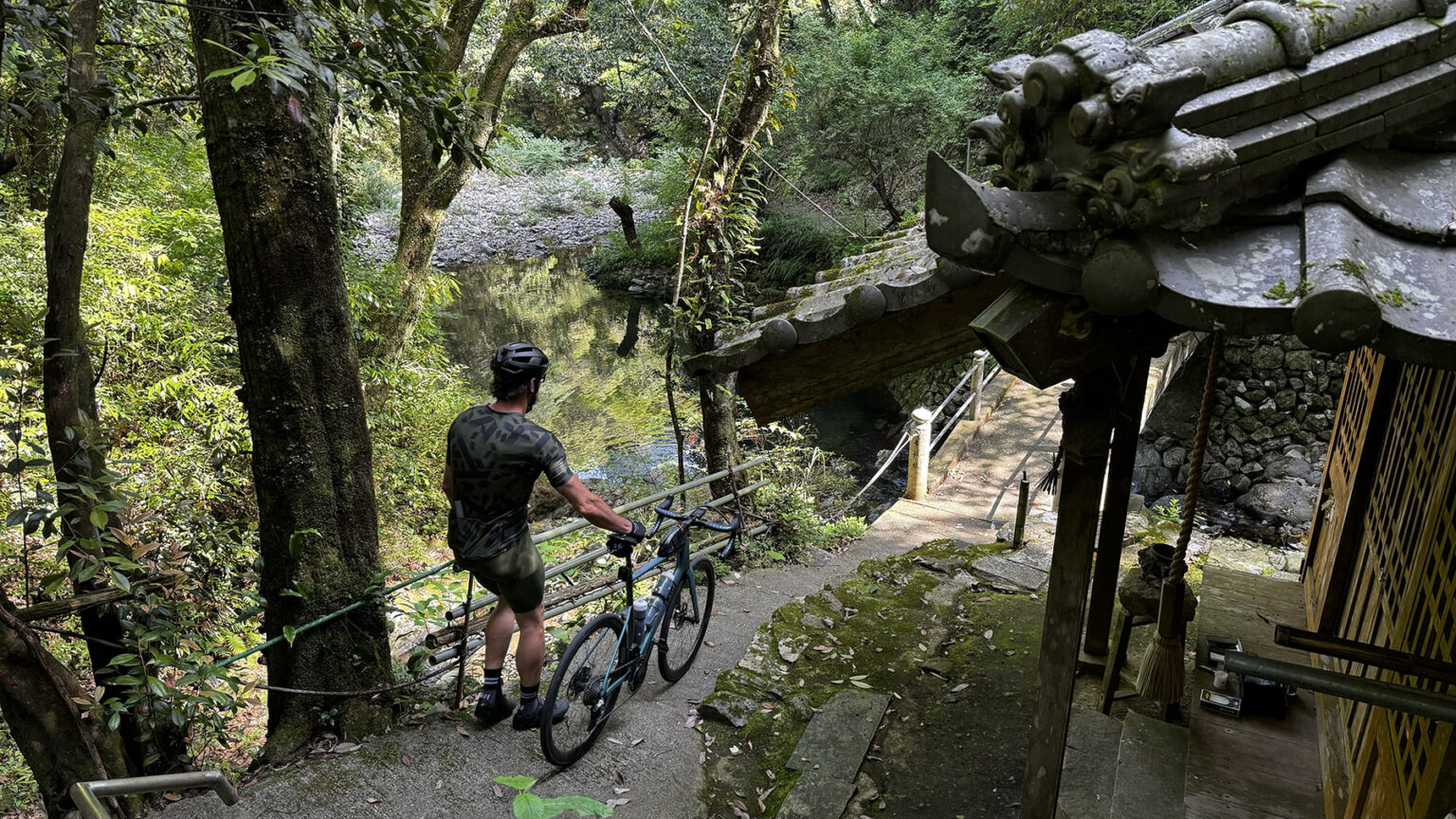
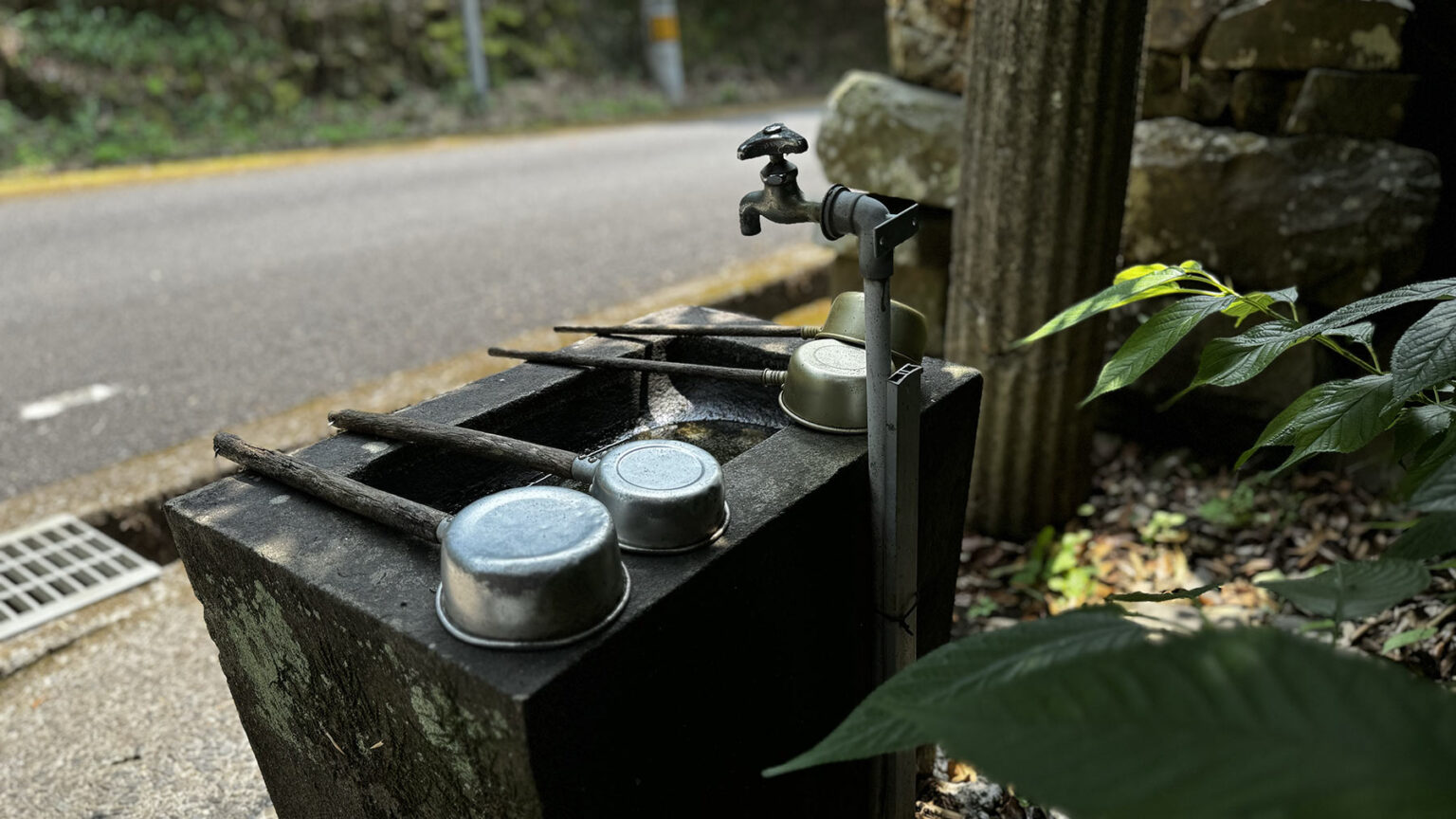
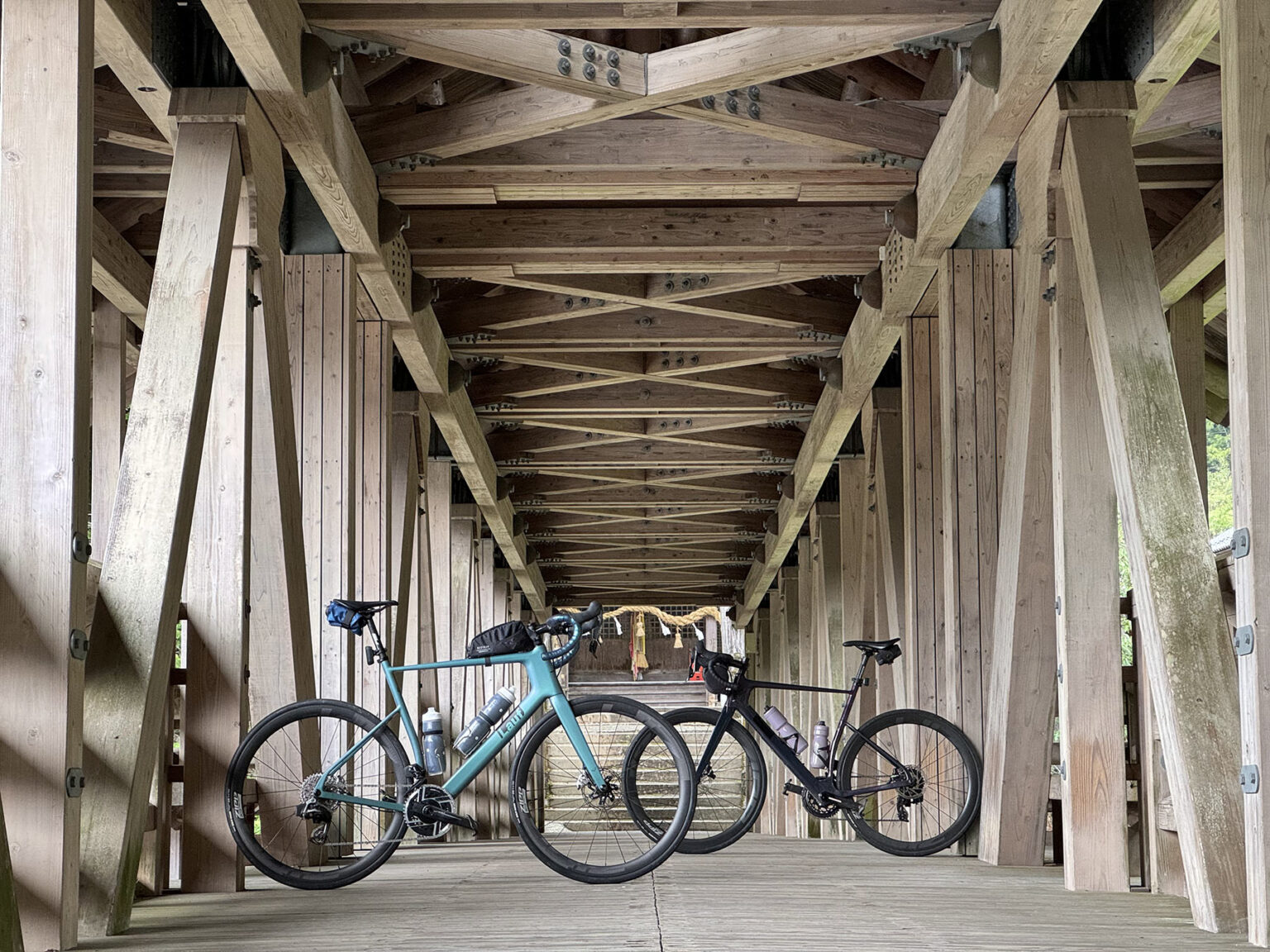

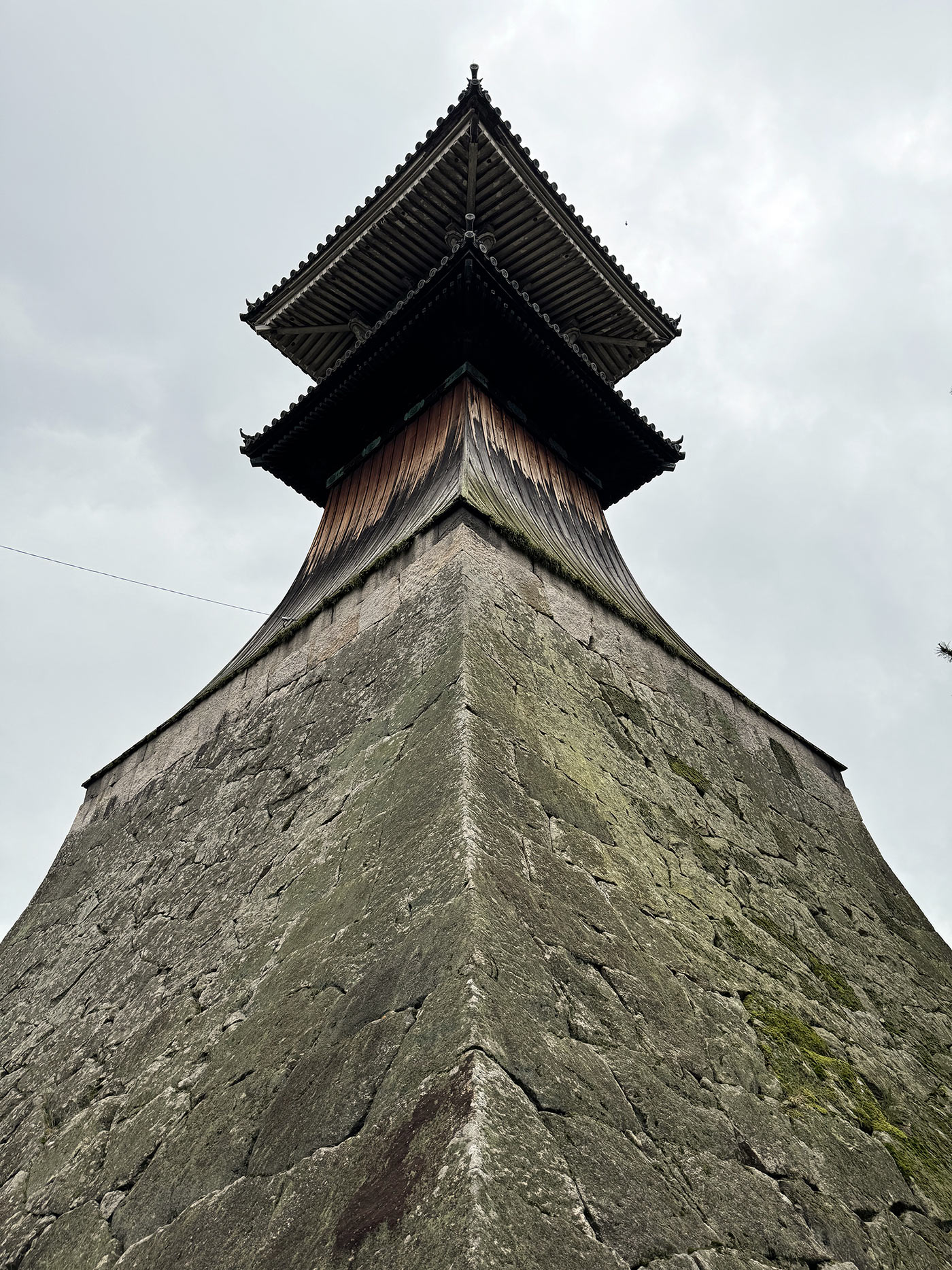
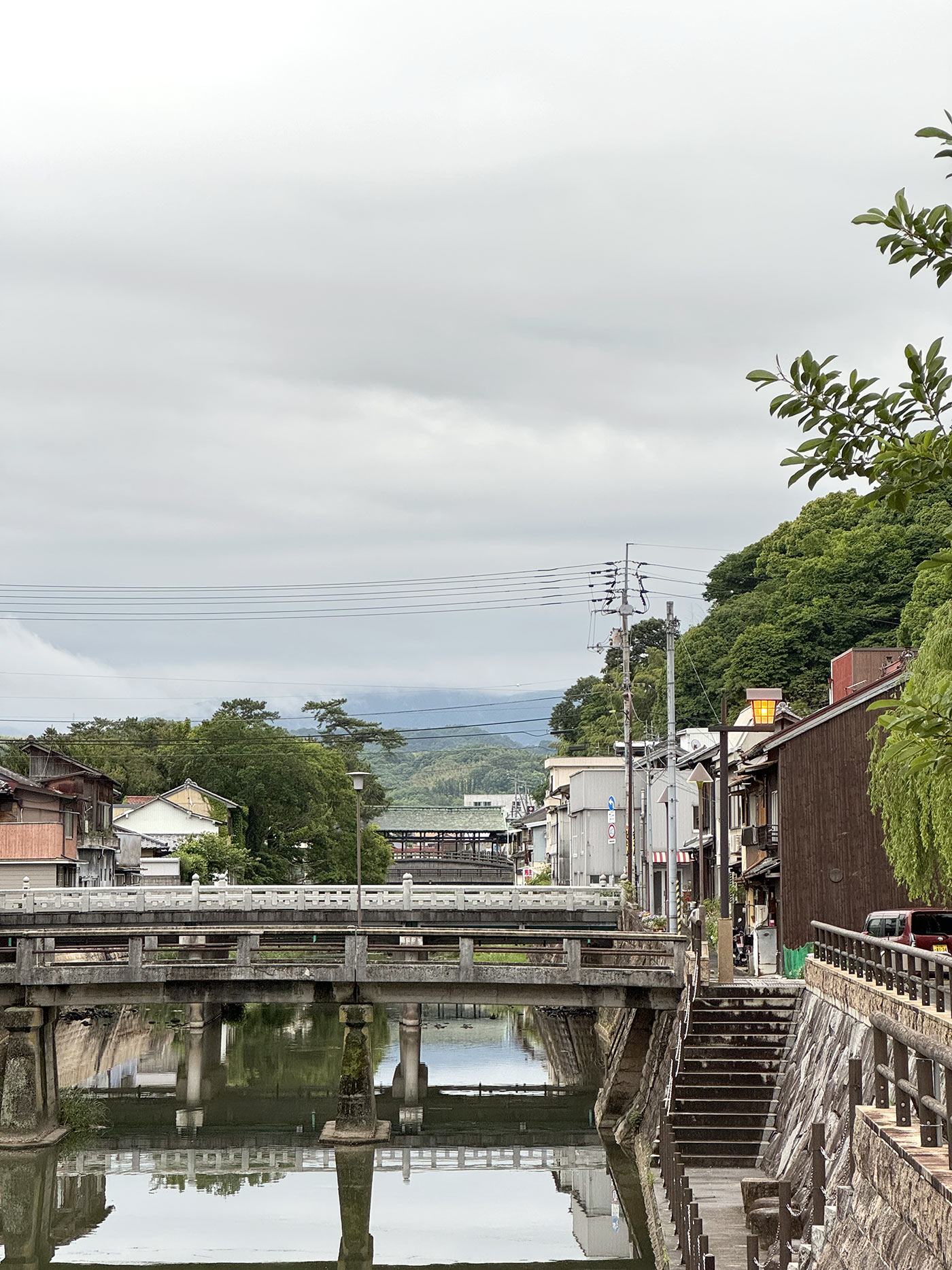

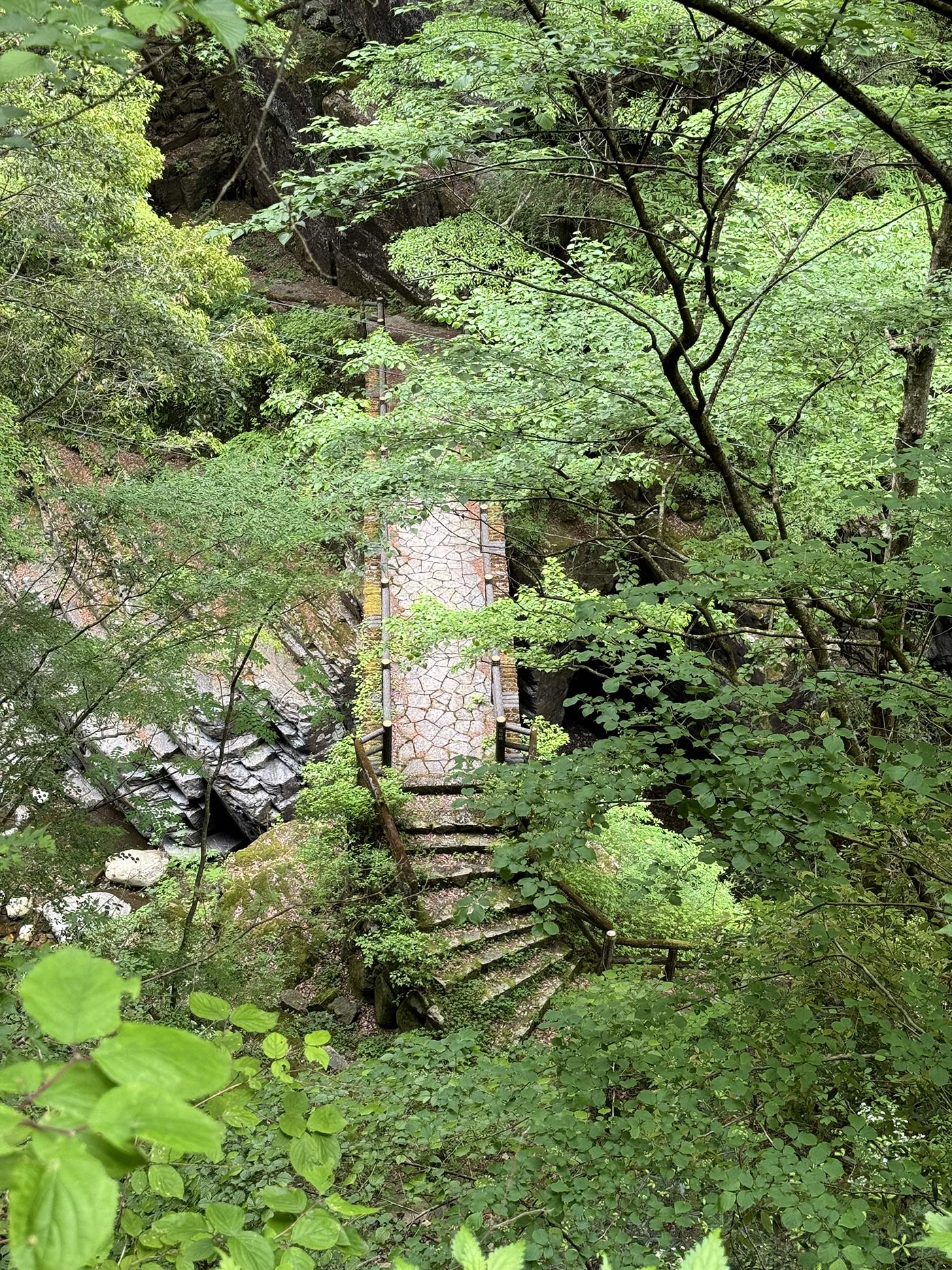
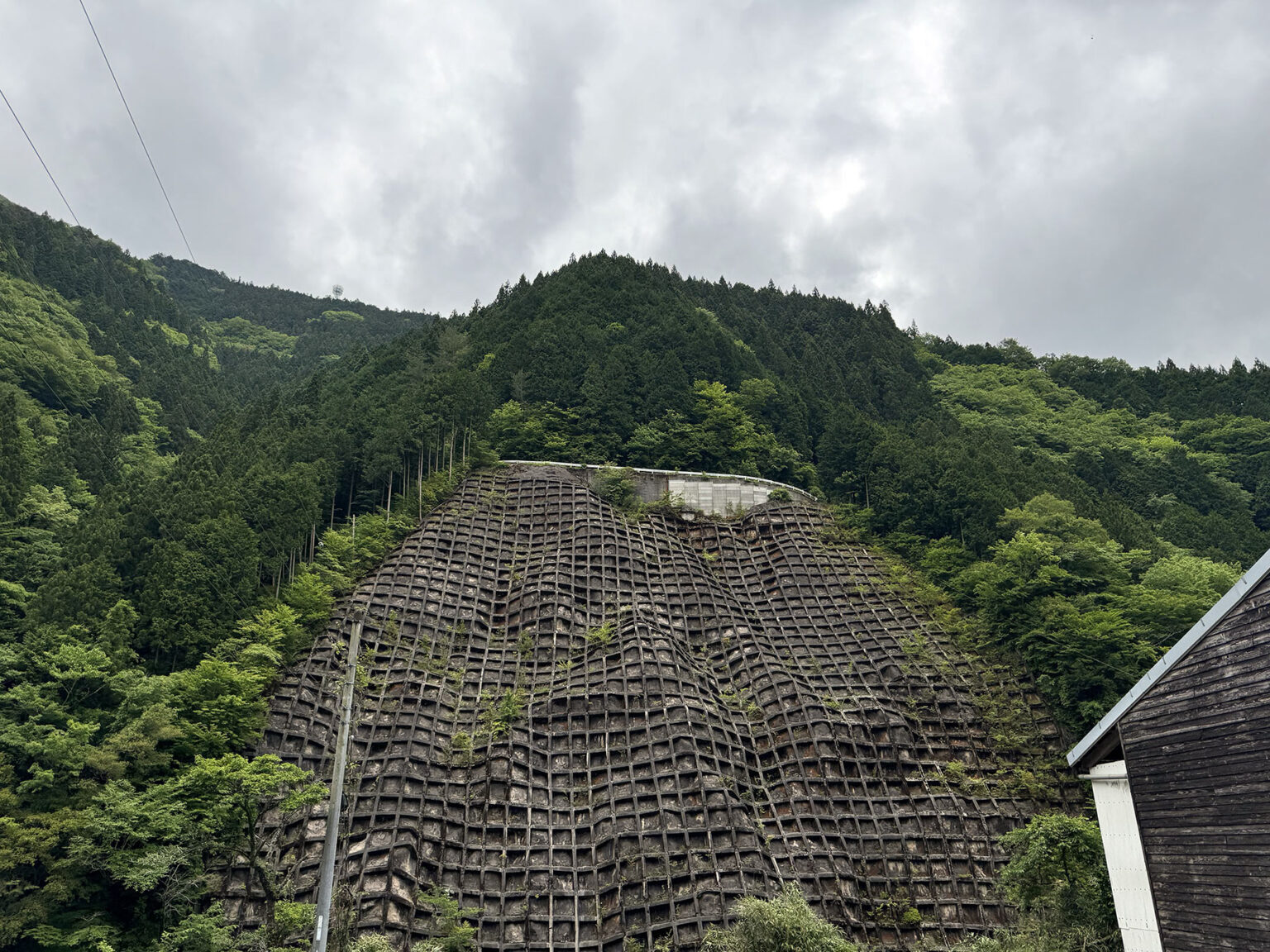
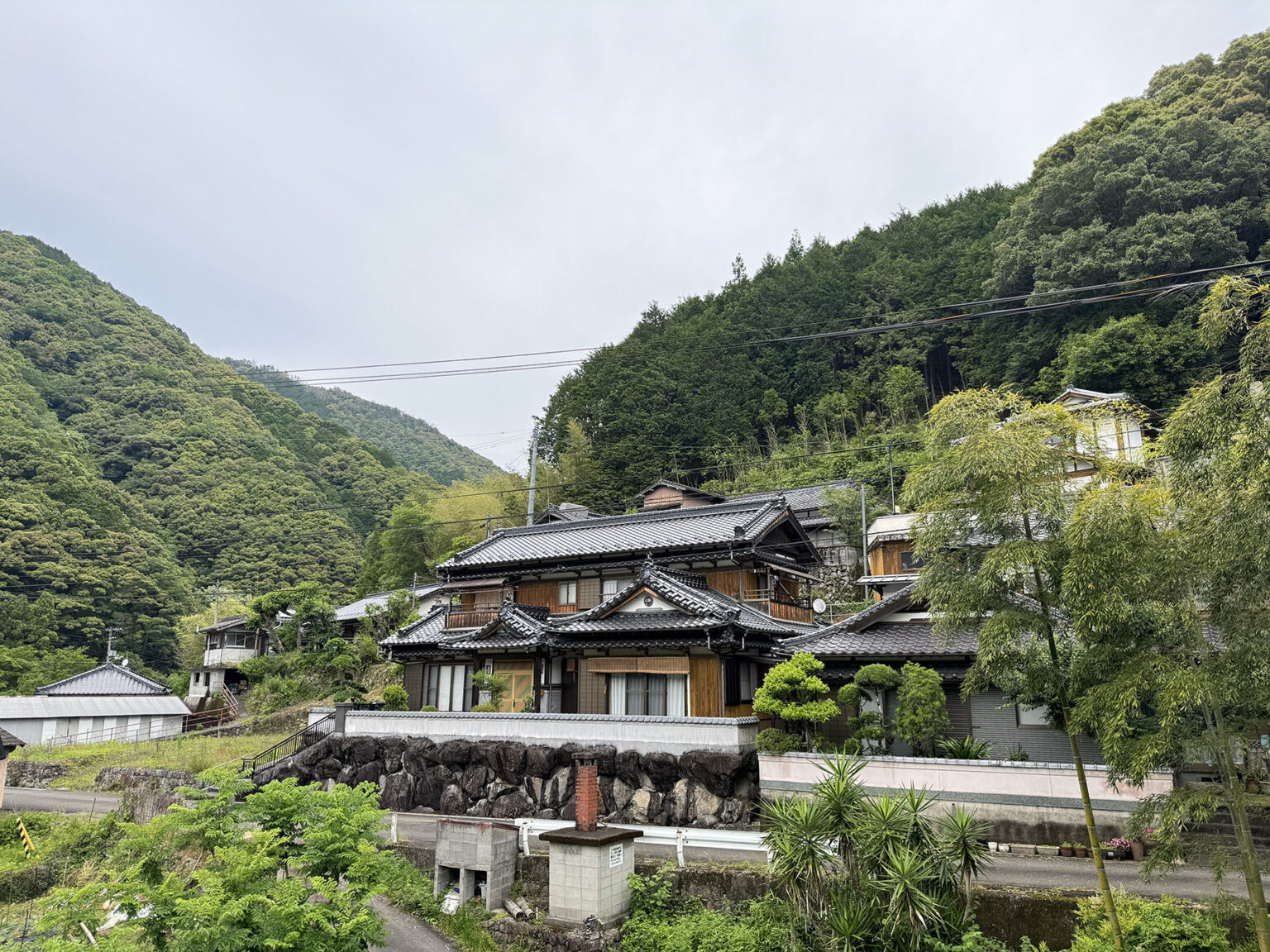
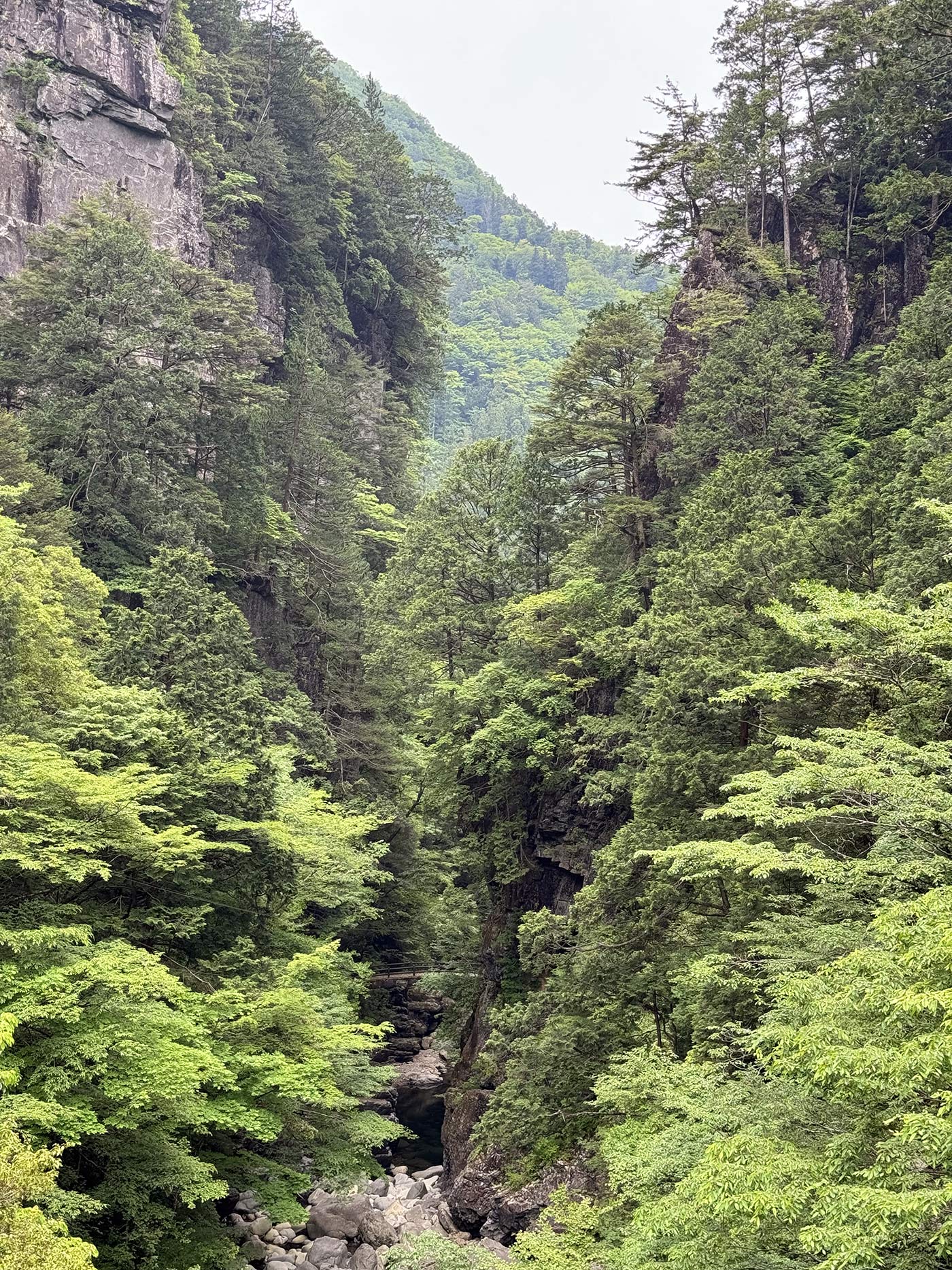

Huge thanks to Ride & Seek for hosting us. Full disclosure, they covered the cost of the tour for us, but we paid for our flights and pre- and post-trip hotels and train rides, lunches, and other ancillary costs. To make this possible, our trip was also supported by the following brands – Links to reviews will go live as they’re are published:
- Lauf Cycles (Uthald road bikes)
- GoreWear (riding kits & gloves)
- CEP Socks (riding & travel socks)
- OSMO Nutrition (hydration, fuel & recovery)
- Trek (shoes, helmets, bottles & lights)
- Huckberry (merino travel clothes – on GearJunkie)
Check out dates, rates, routes, and more details at RideAndSeek.com
